May 31, 2020
Martha O'Kennon
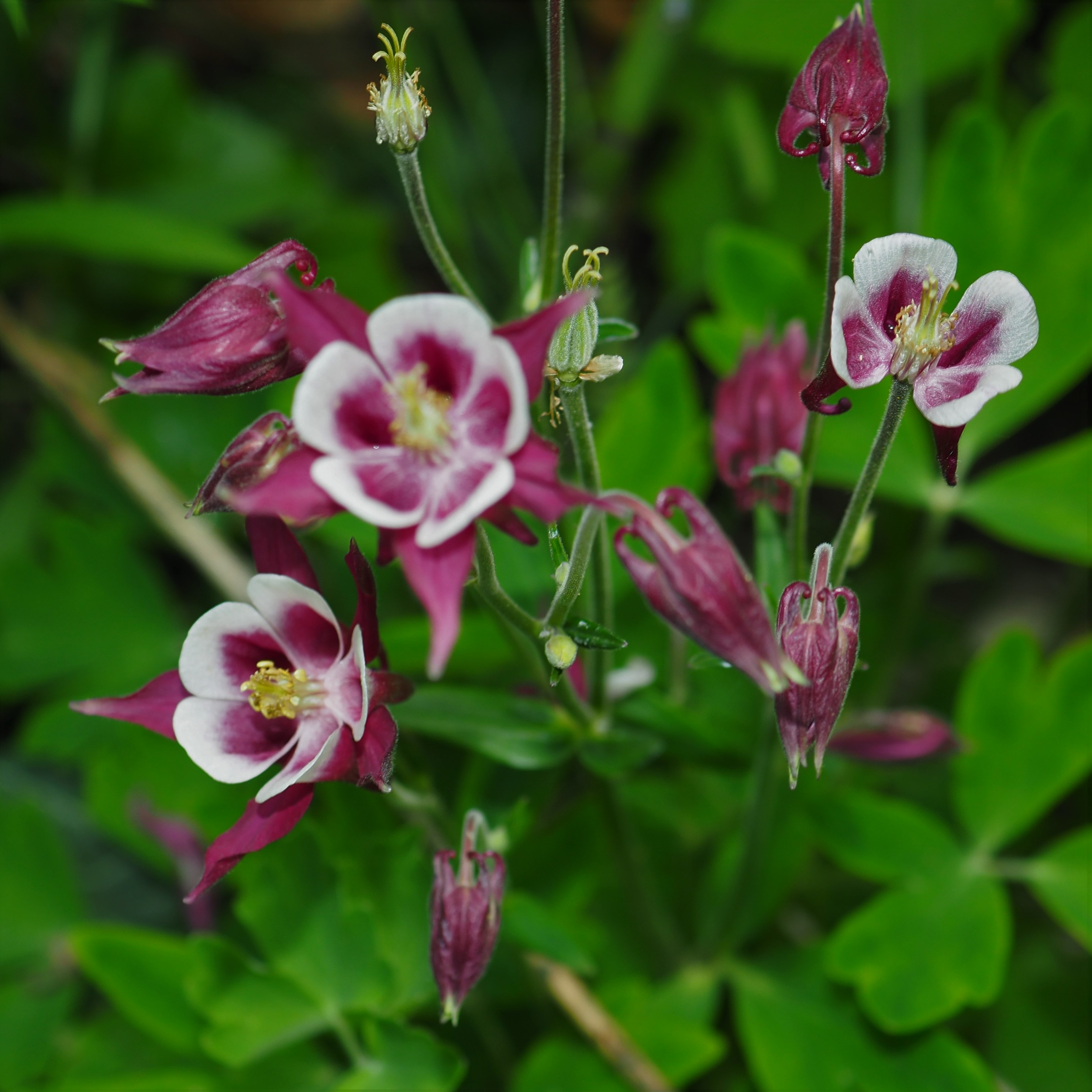


The Columbine (here is the dark red and white variety) comes up each year despite me. And that's what the Dame's Rocket does too. In a while, I expect this lone Crane's Bill Geranium will have friends. It has already shown how it loves to live in the Seelys' yard.
Remember that there is information in the name of the file for each image. You can see it by mousing over the image - look at the lower left of the screen. Or you can click on the image to get to the (usually) larger image. Then the info is displayed in the address line above. Sometimes the second click will actually display a different view of the original image.
Ants. How lovely their ergonomically toned bodies seem in the sun. There are some that can be spotted by a single feature, like the heart-shaped gaster of the Acrobat Ants. Second, the Small Honey Workers are notable for their Large gaster, and two little round segments between head and gaster. The Eastern Black Carpenter Ants are at home in big groups and known for the yellow spiky hair on their gasters.
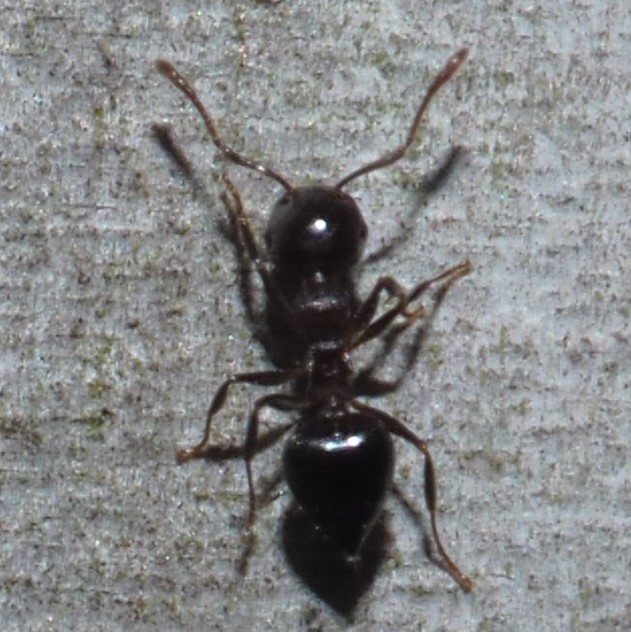
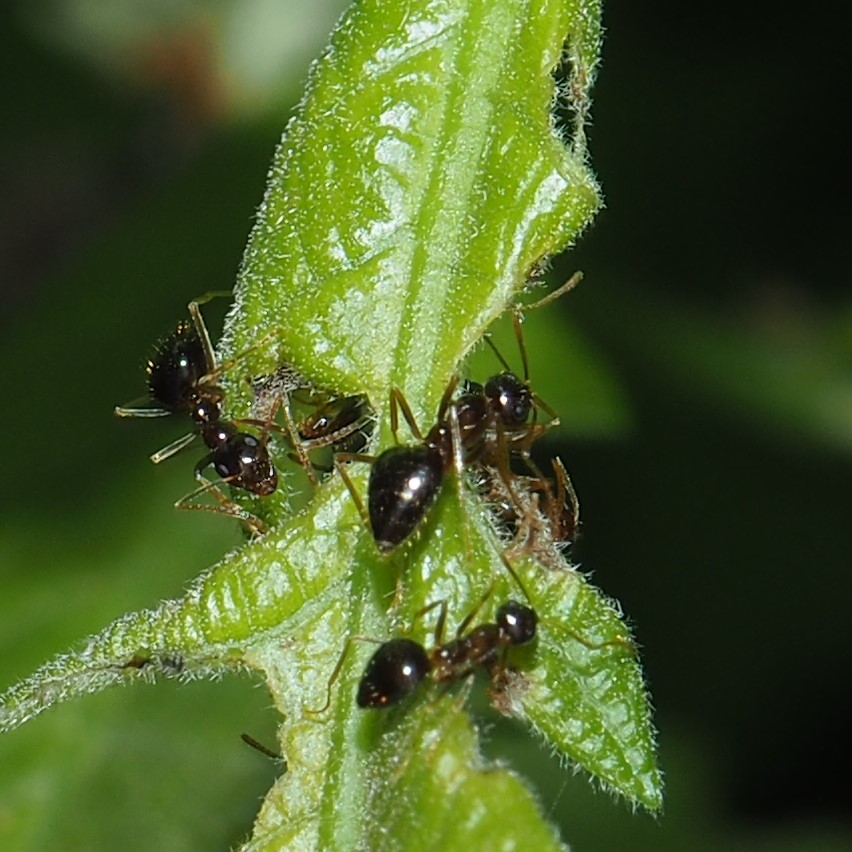
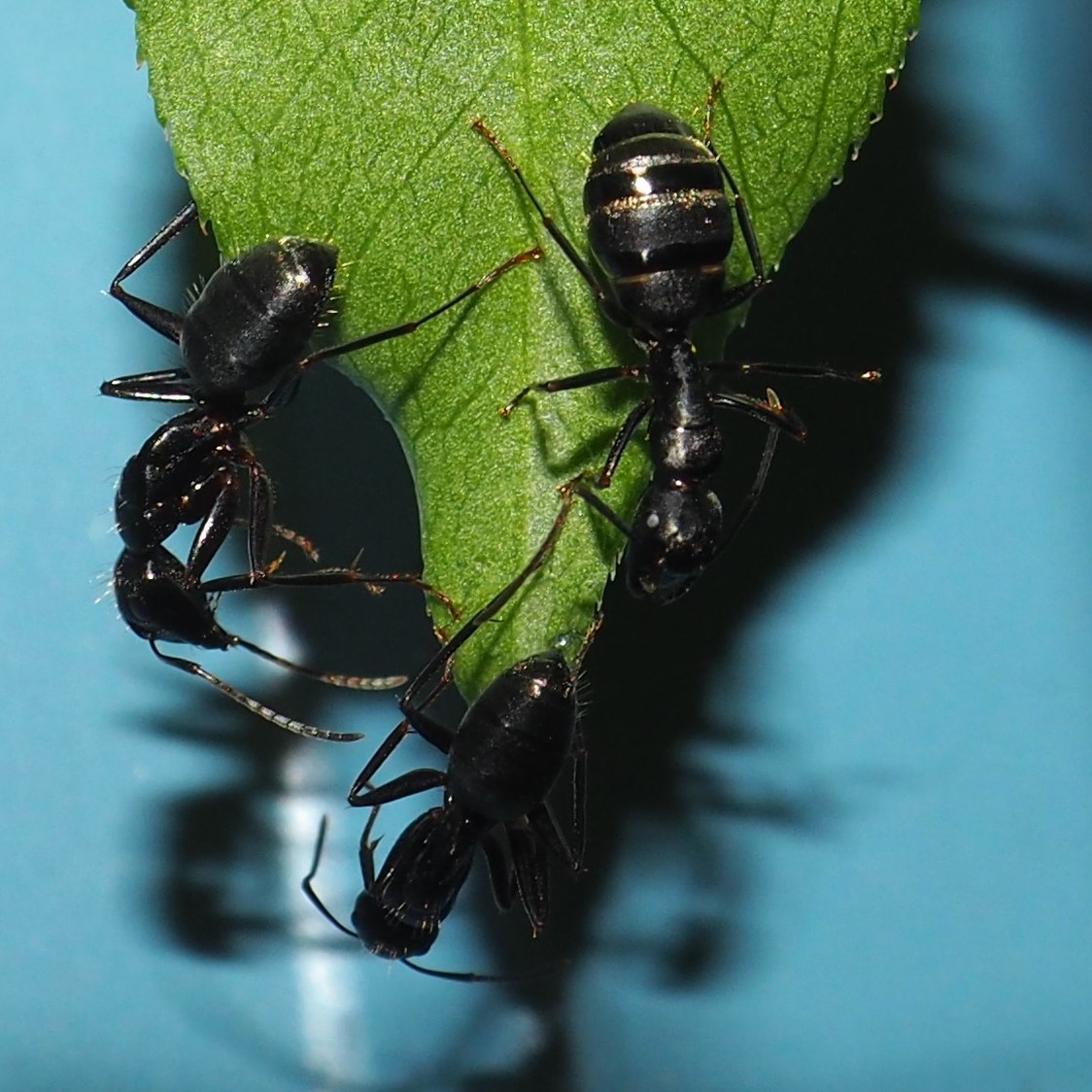
The little ants with the longish gaster are probably the Odorous House Ants. (Some say they have a slight smell, but we chronic sinus-suffers don't have the joy of that sense.) Second is probably the mystery ant of last week. It may be of genus Myrmentoma, which also houses the Bearded Ant which served as the heart of a discussion last week.
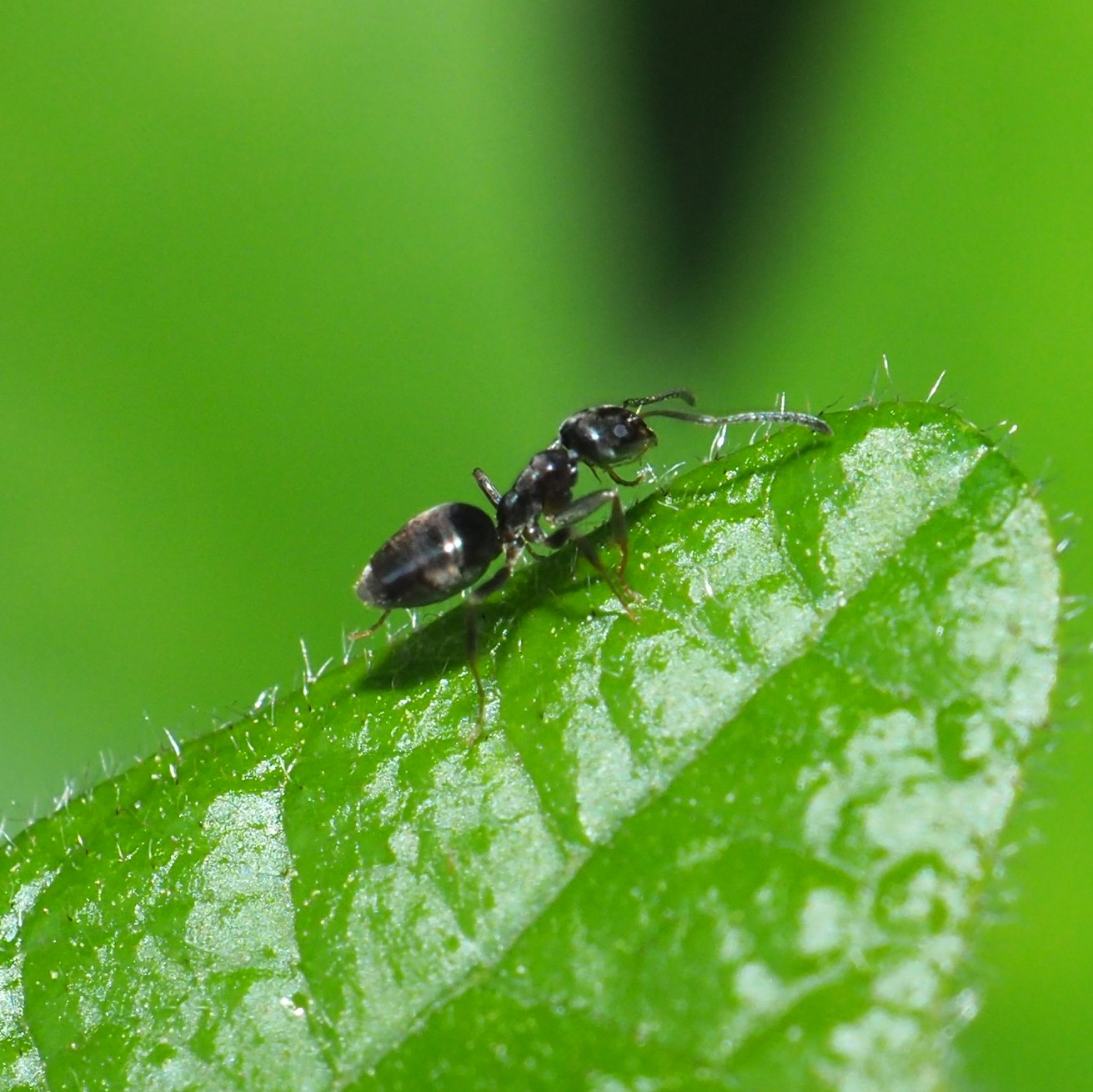
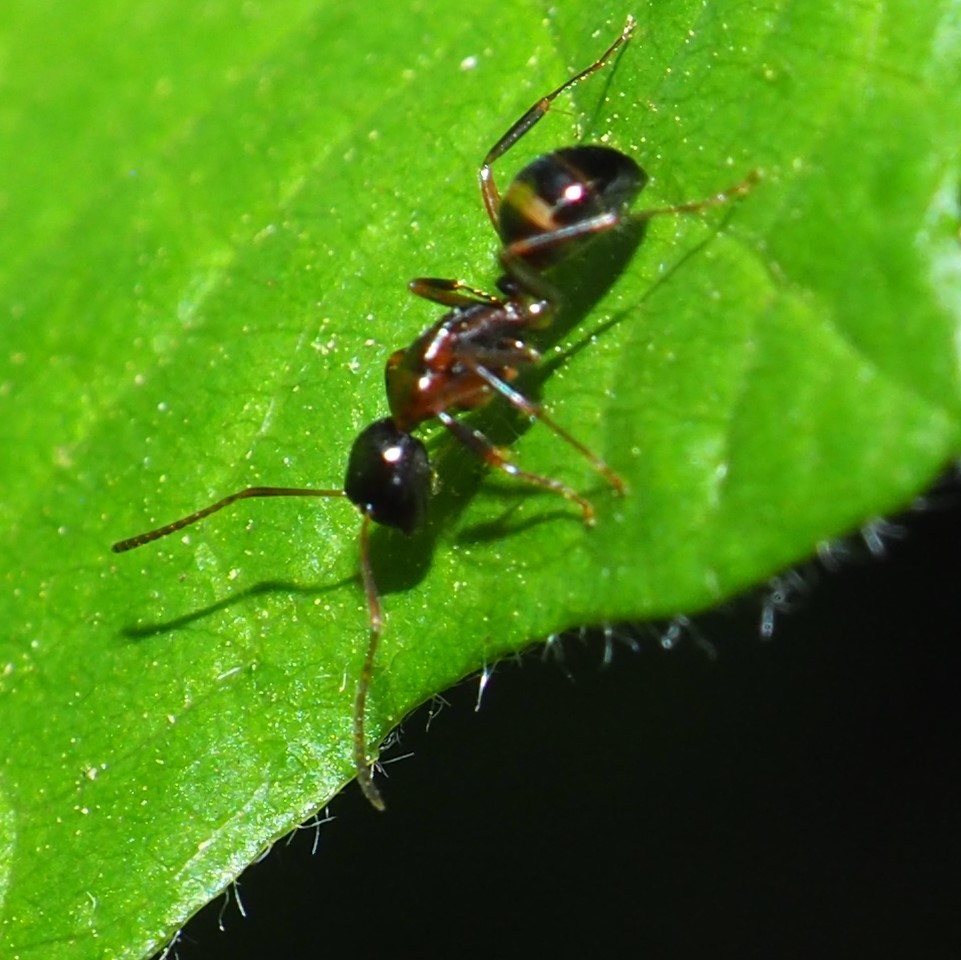
The Barklice continue to amaze me. You'll remember that there seem to be two kinds of nymphs. First here is one of the East Wall batch. As they have gotten larger, they have slowly migrated around the corner onto the North Wall. First, on the East Wall. Second and third, on the North Wall. They don't seem to need many more days until they are adults.
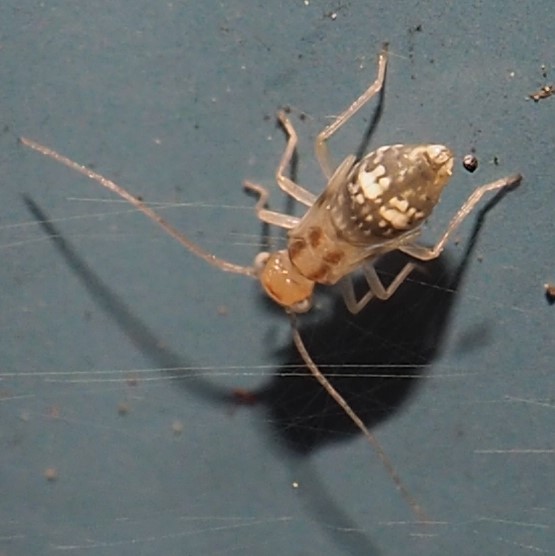
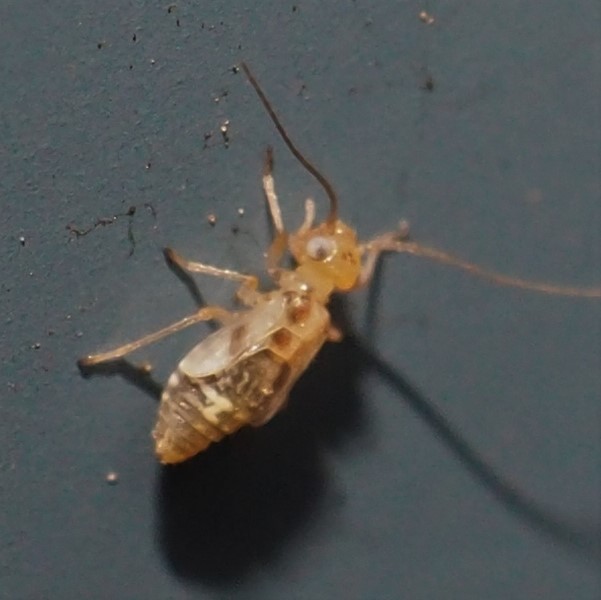
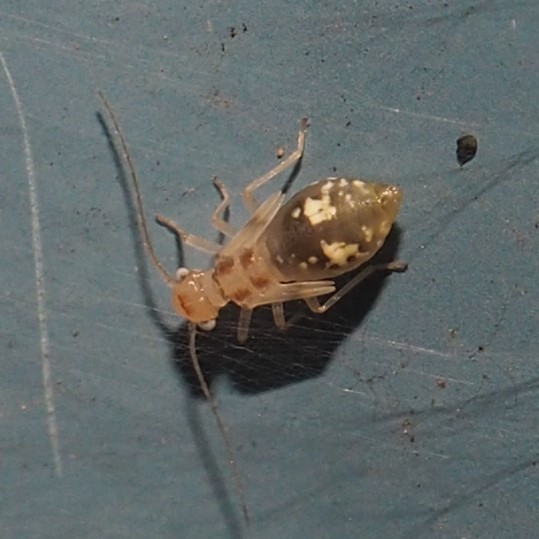
The littler nymphs from the North Wall are slowly growing. I can now make an educated guess as to whether a certain little dot is a Northern Barklouse Nymph or a piece of dust. But in the second picture, you can now see that the members of this community have begun to grow their wings.
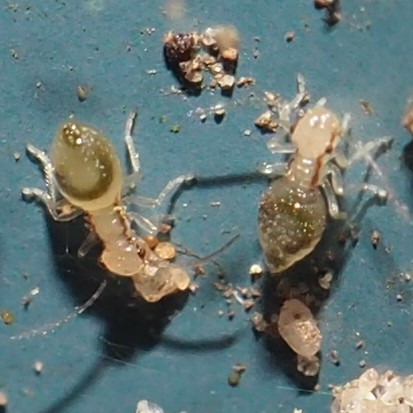
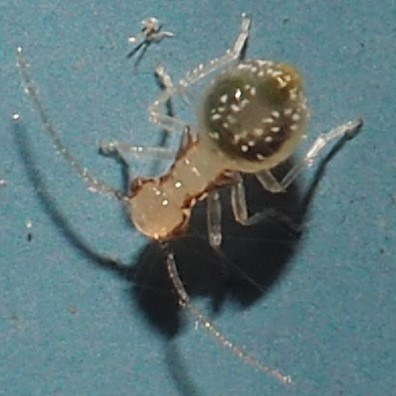
Do you remember way back in April 2, when I had caught a little nymph alongside the Leafhopper I'd been aiming at? I thought it was a coincidence that this little one was yellow, unlike either our present East and North Walls colonies. Well, on May 27th, I found on the East Wall this yellow fellow. It turned out to be a fast runner and I haven't seen it since. This leads me to think that we are actually following THREE strains of Barklice. But where have the yellow ones been developing all this time?
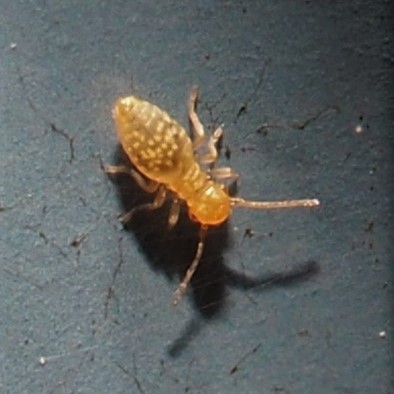
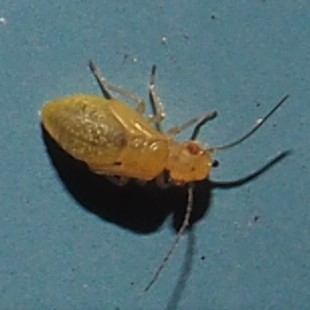
To further complicate things, two Barklice Adults showed up on the North Wall this week. One, this yellow Barklouse, which I remember from last fall as Valenzuela flavidus. Second, an adult Graphopsocus cruciatus. I'm just waiting to see if a third kind of Adult shows up soon.
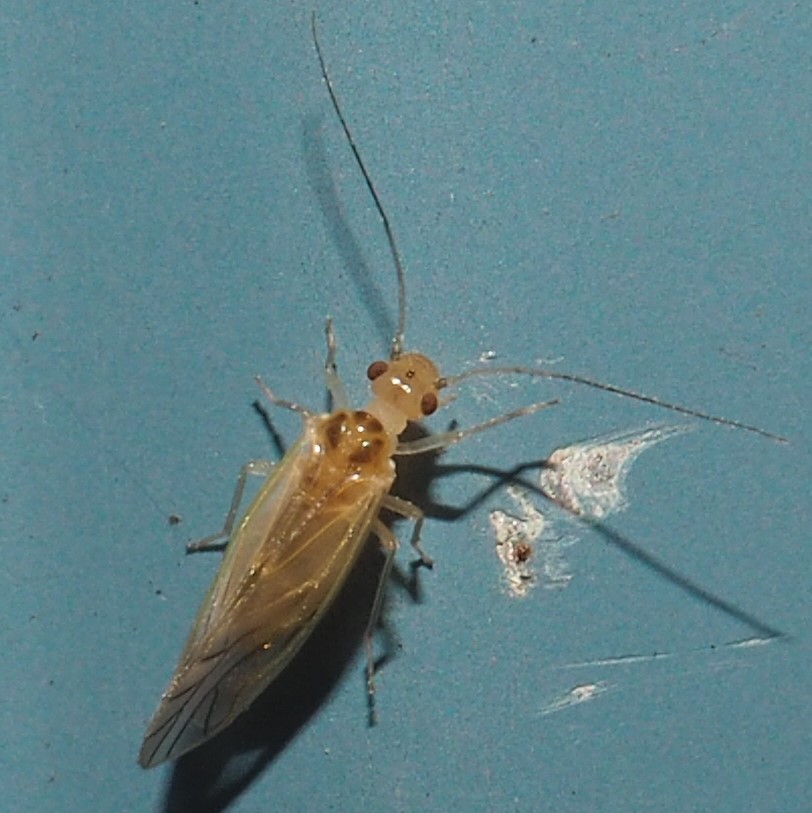
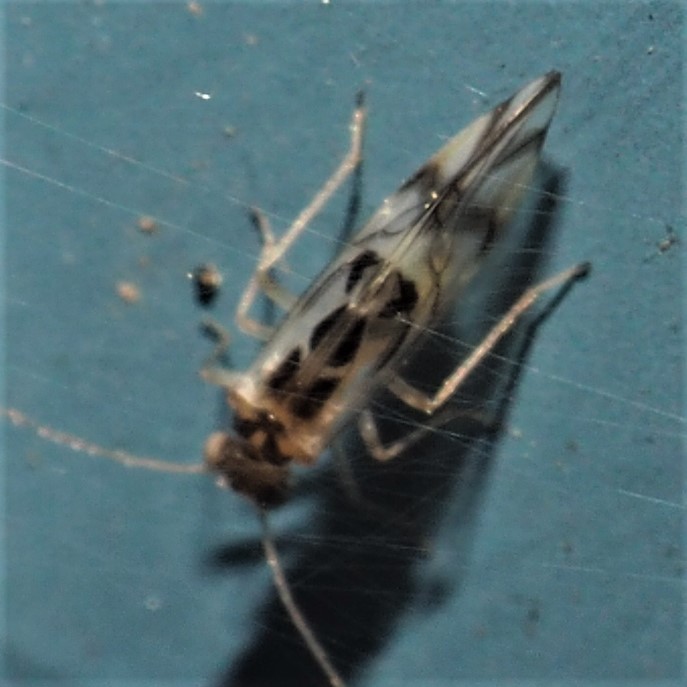
News Flash. I did some picture-taking today after deciding I'd said all I wanted to say about the Barklouse nymphs and adults. I began to notice several adult Graphopsocus cruciatus Barklice. Meanwhile the East-Side type nymphs began to disappear. Do you remember how the East-siders had been making silk webs to protect themselves? Today for the first time I suddenly noticed that many of the little protective tents contained not the East-side nymphs but adult G. cruciatus. Honest! Now we know that the East-side nymphs are the nymphs of G. cruciatus.
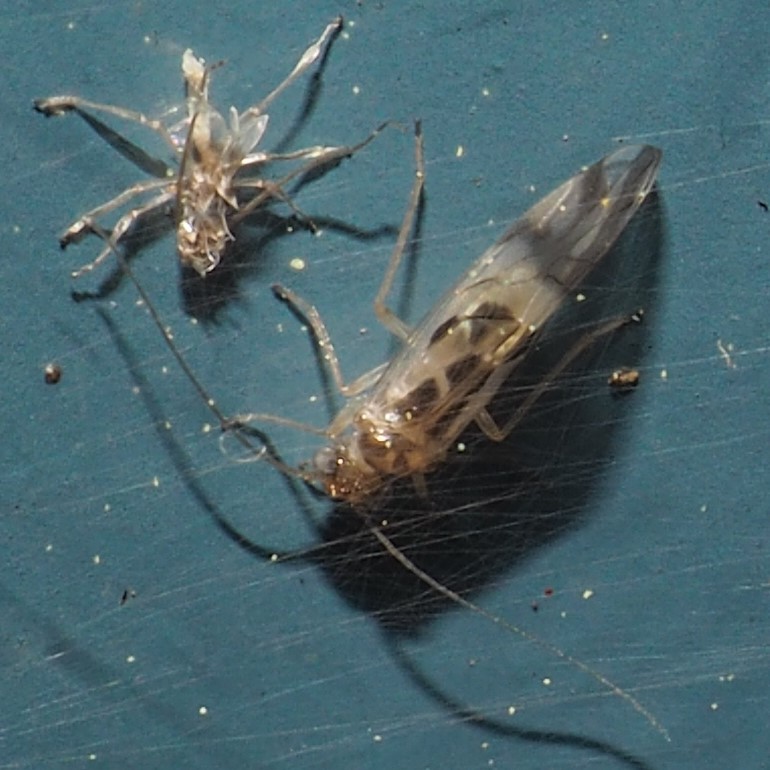
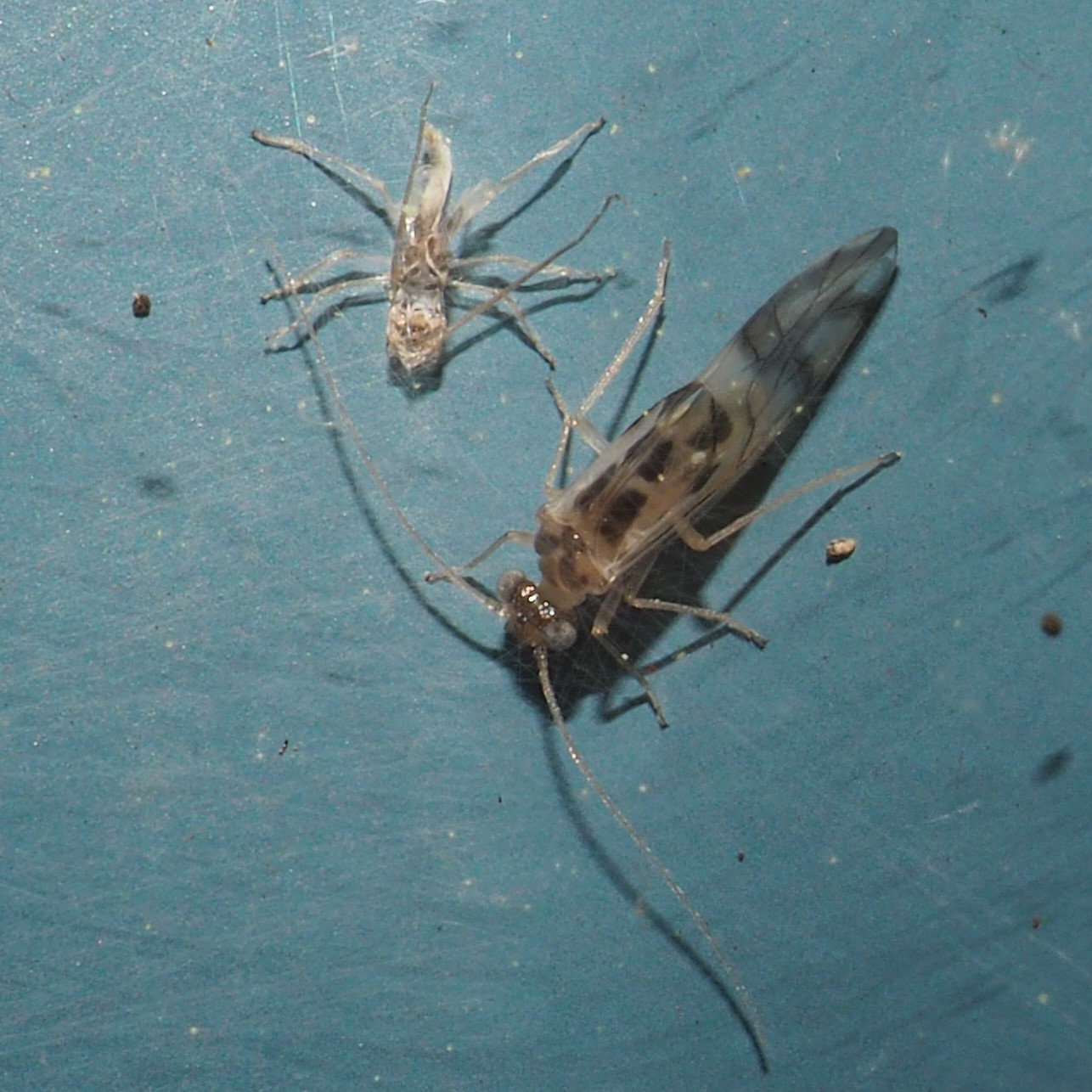
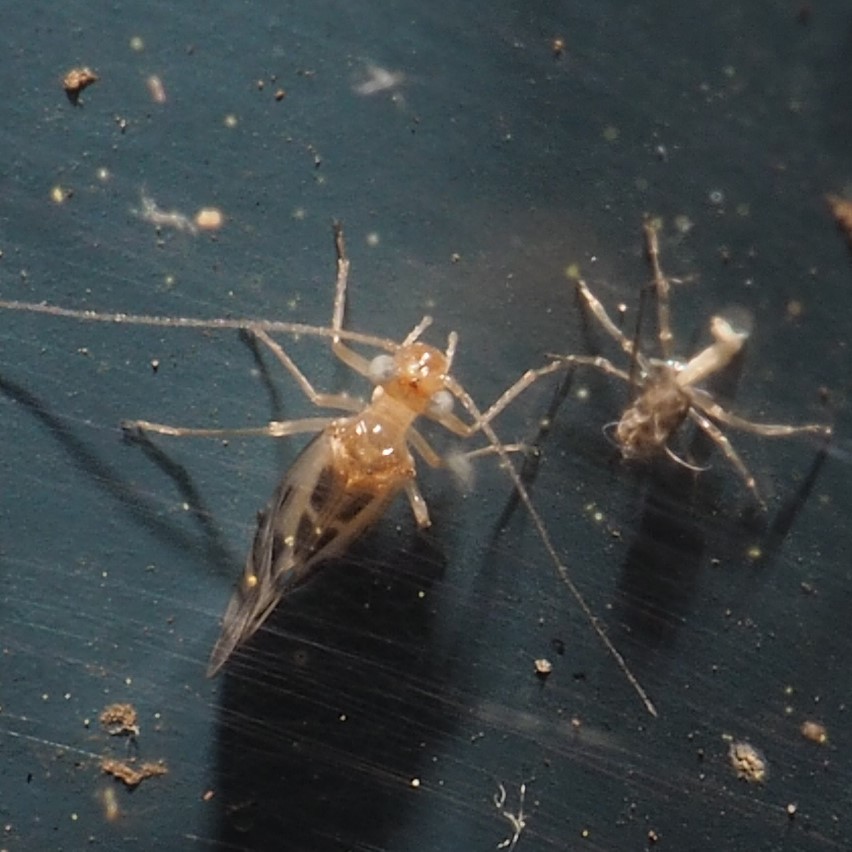
I got as close as I could to the little bee in the Dame's Rocket in this first picture before it took off. Click a couple of times to see it better.
I think this second Bee is a Miner Bee in the genus Andrena. I think this because of the two vertical white marks on the head and the placement of the pollen.

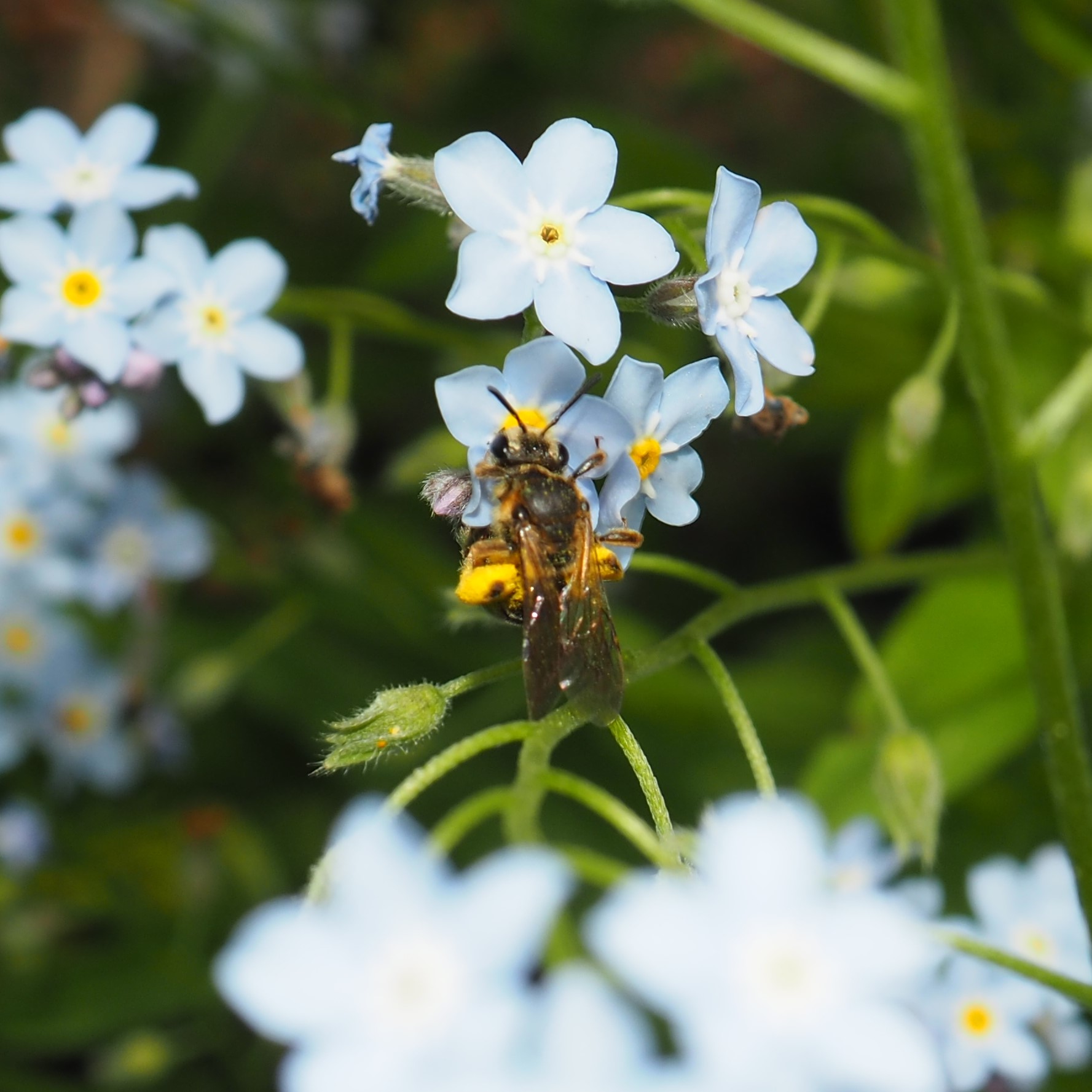
First, a Beetle the size of a Flea Beetle. Second and third, a pair of Oulema genus Beetles mating in the fold of a lily leaf.
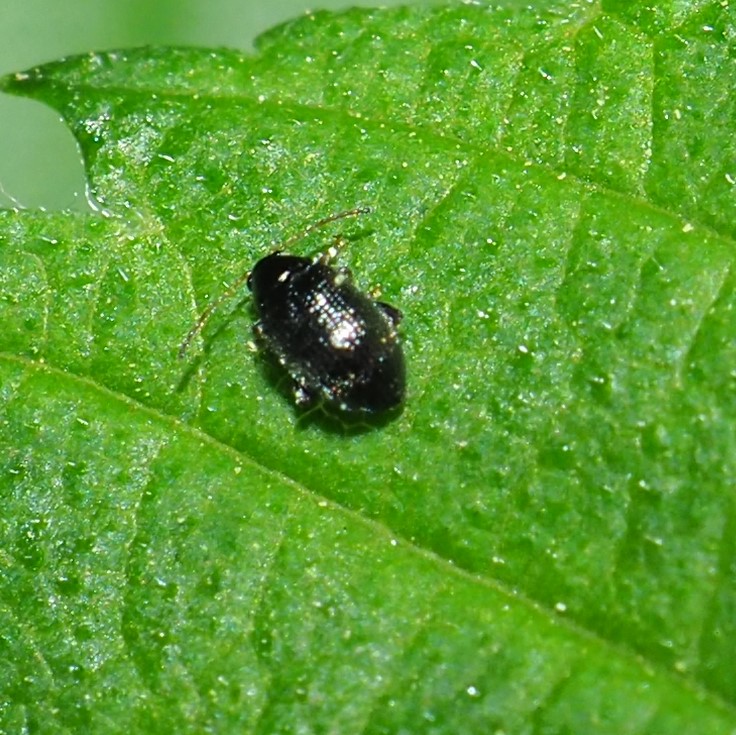
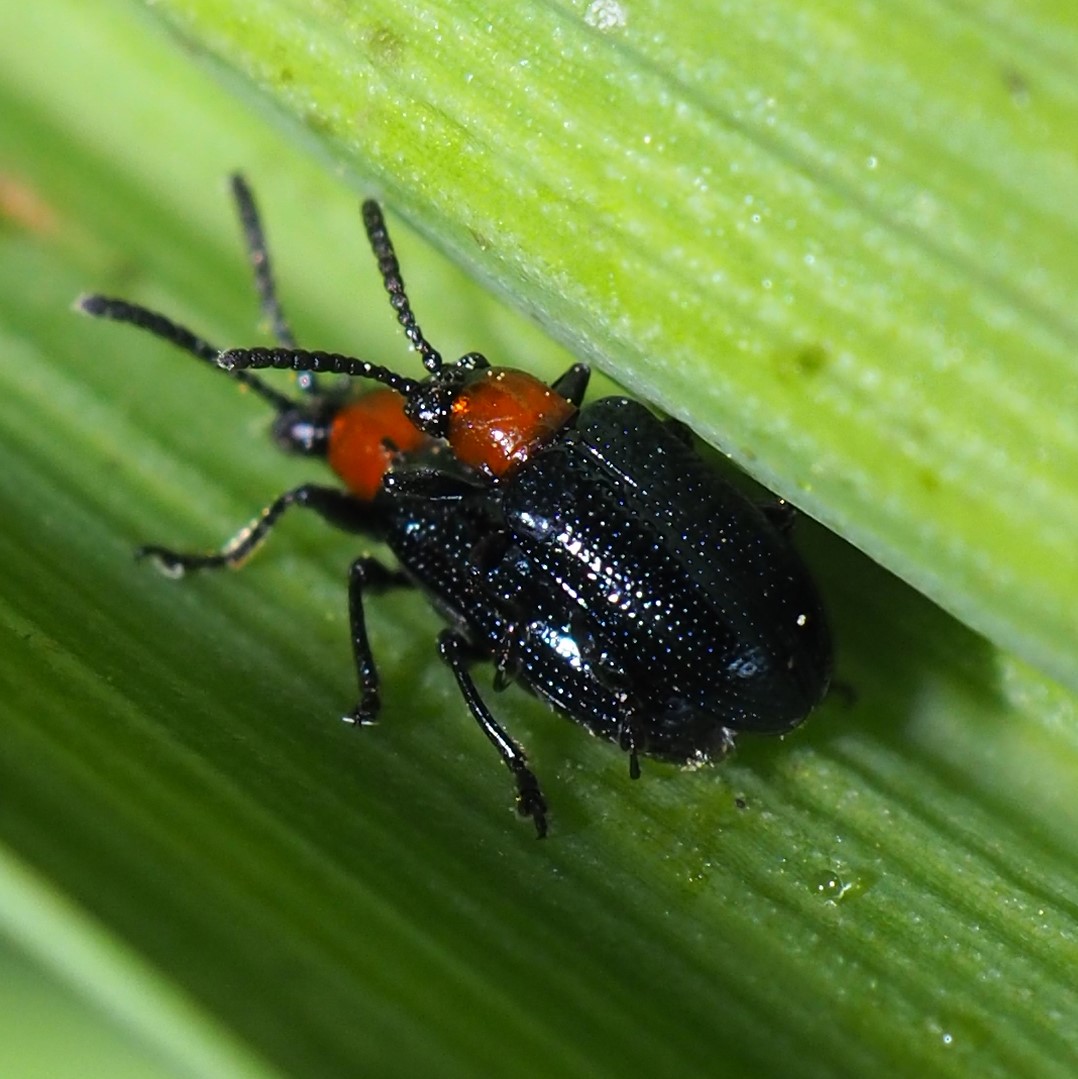
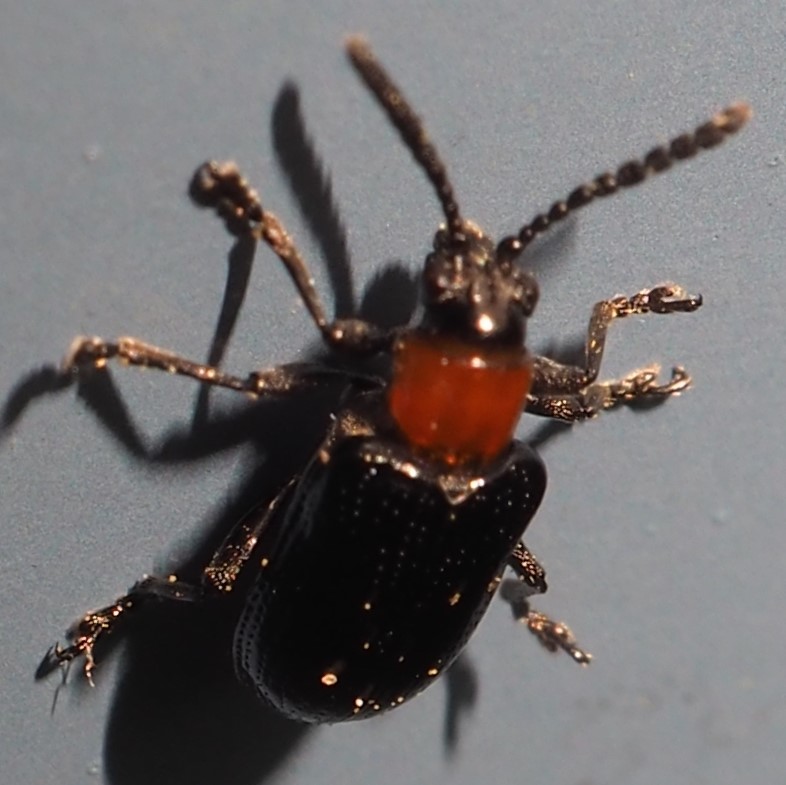
This mystery Beetle is one of the Ground Beetles. Look at its amazing mouthparts. And in picture 3, look how flat it is. It immediately reminded me of the Flat Wasp from last week.
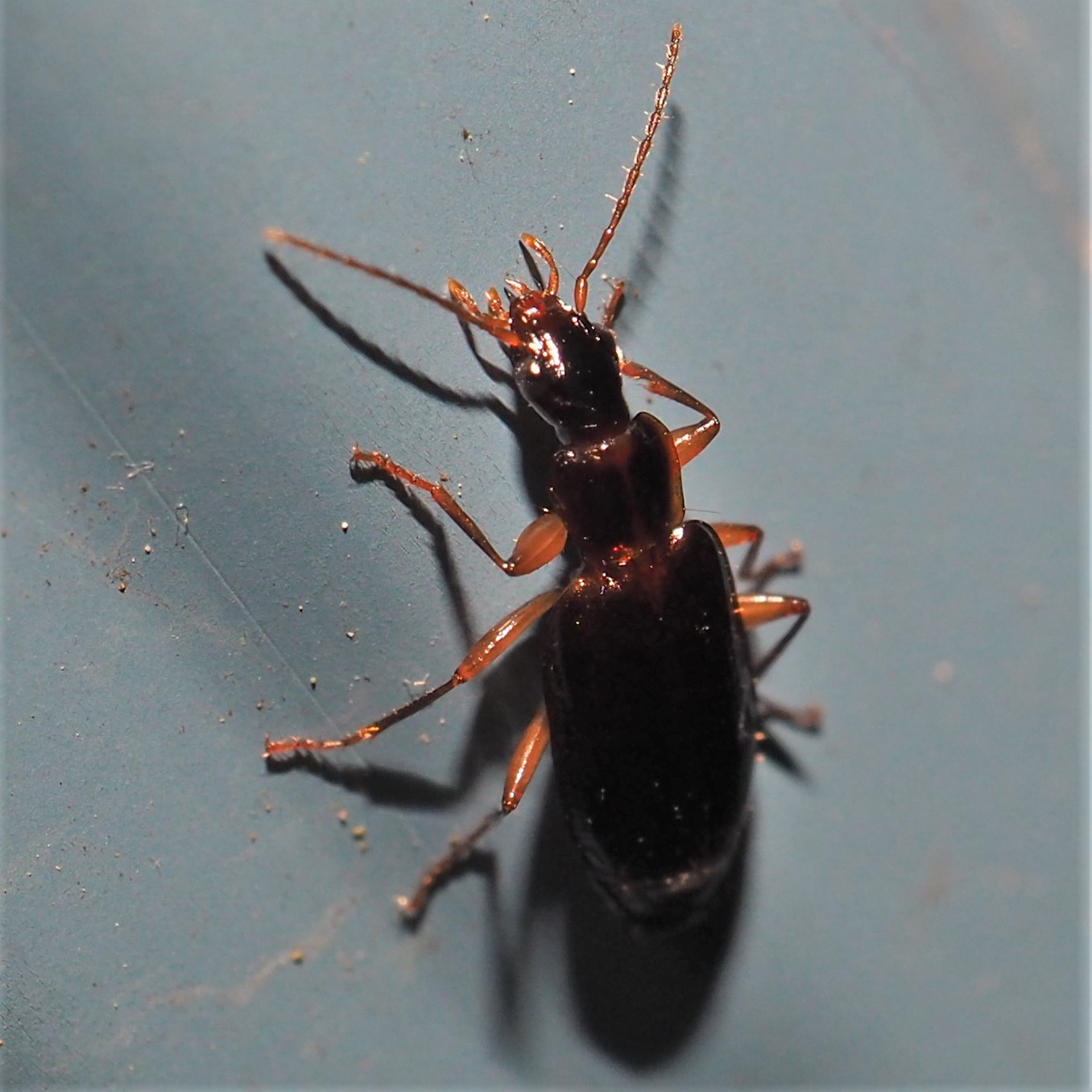
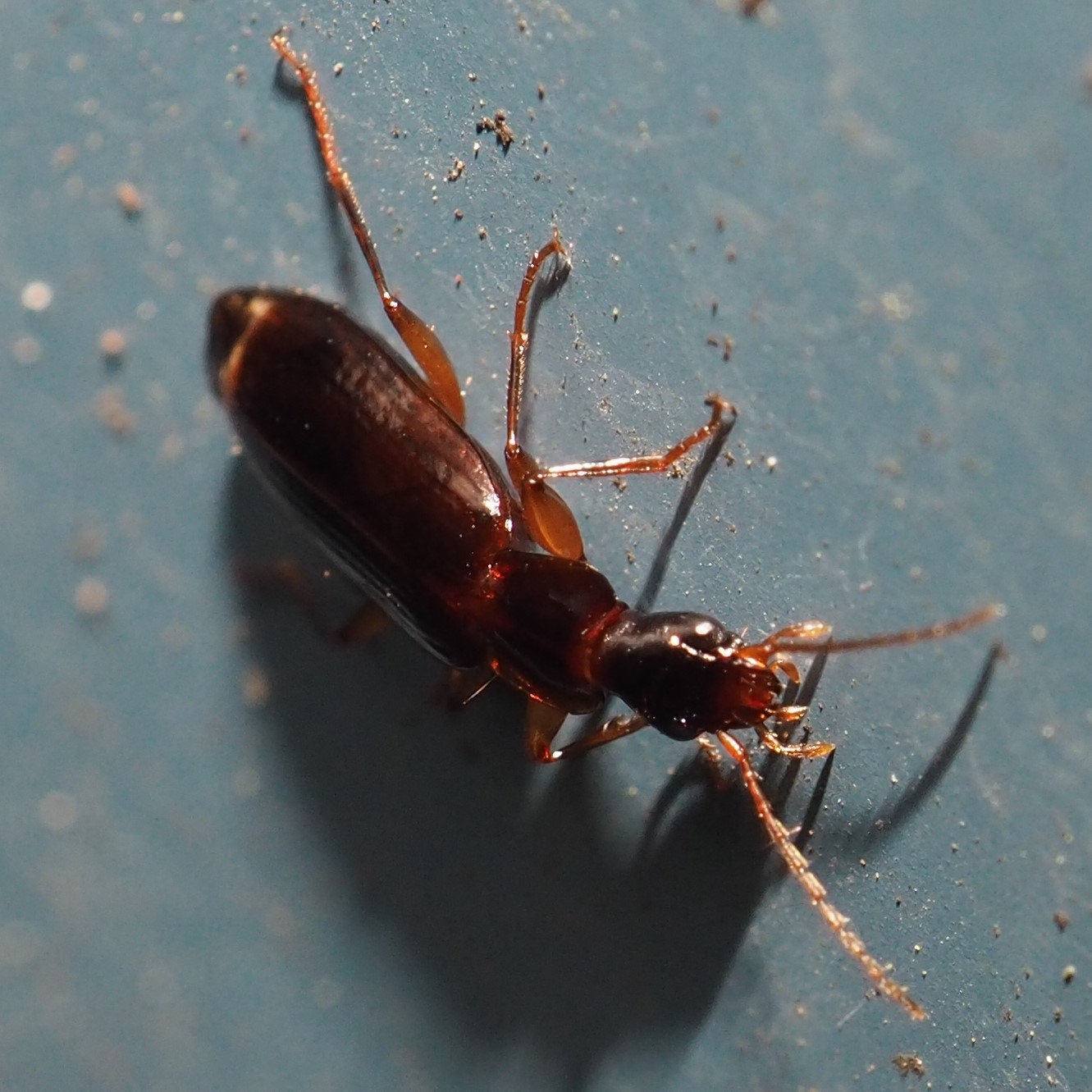
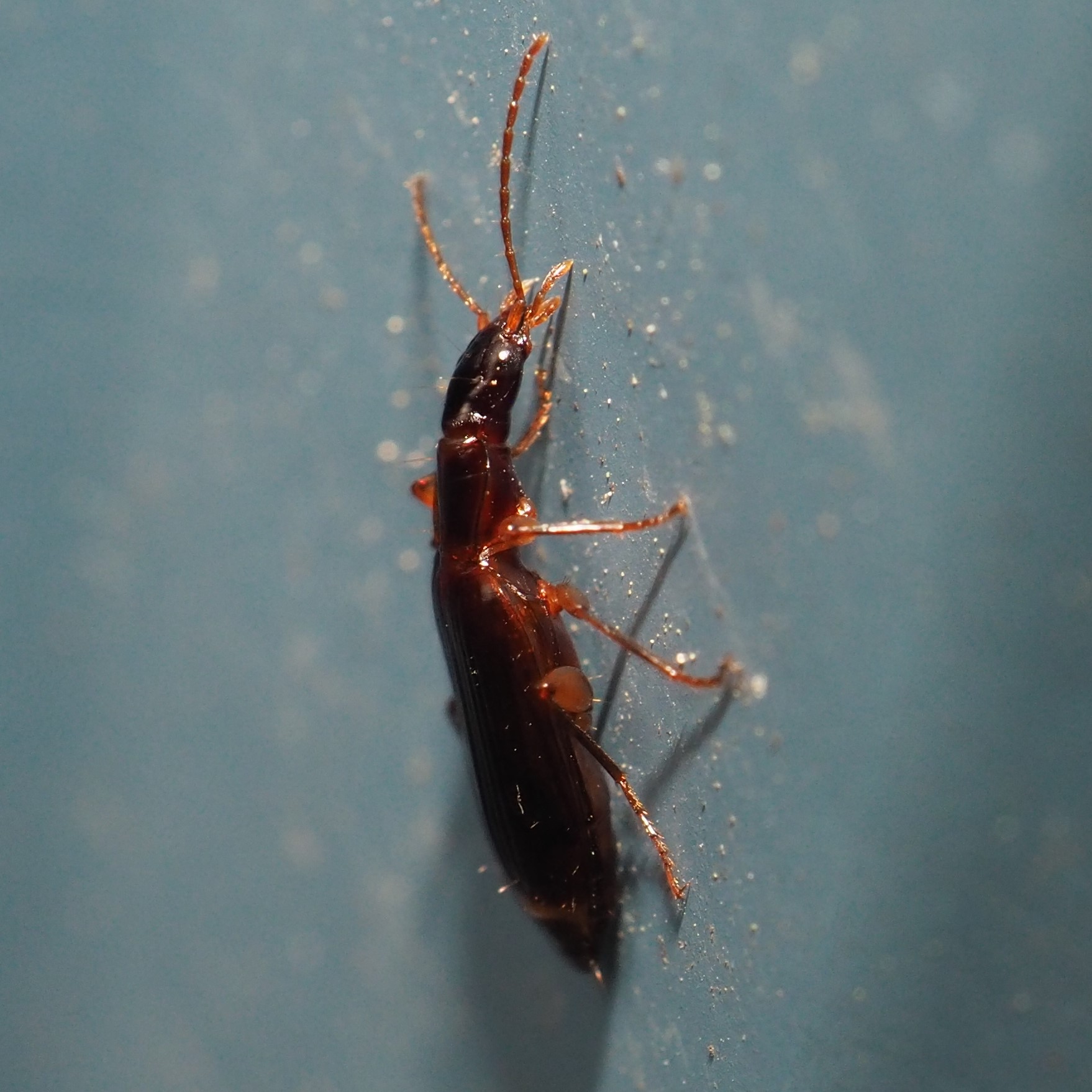
A few days ago, Jan and Ken Fourn sent me a picture of a metallic greenish-blue beetle scurrying around at their place. Just to show how these things work, two days later, I was out at the sidewalk and saw a metallic greenish-blue beetle scurrying past me. On the thirst shot, I actually captured this amazing beetle, the Six-spotted Tiger Beetle. I had sort of thought I would forever miss having seen and photographed this beetle. Every time before, I had either not had a camera on me or wasn't able to focus well enough! Thank goodness for AUTO mode. The next two pictures are of a Black Weevil.
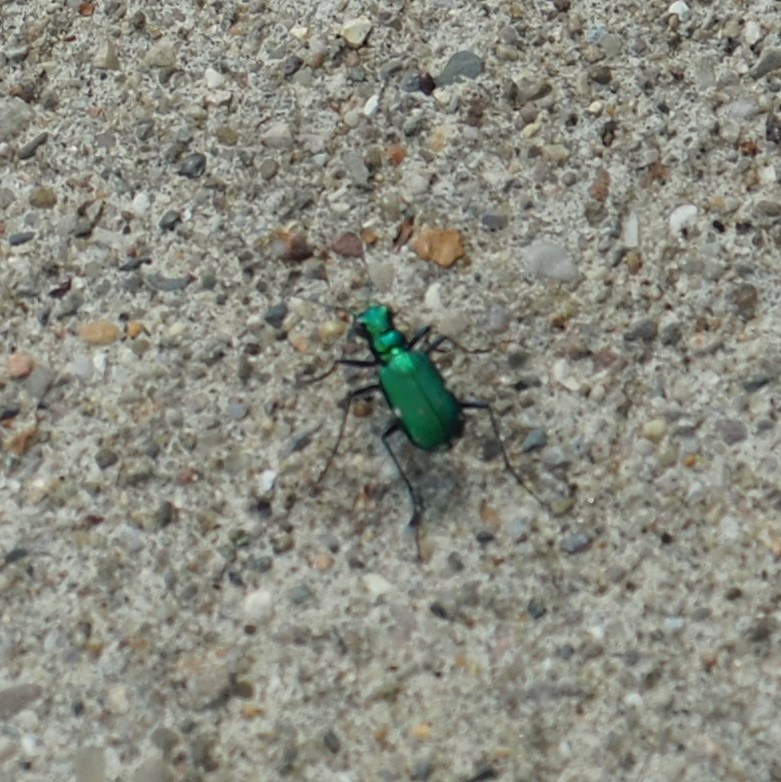
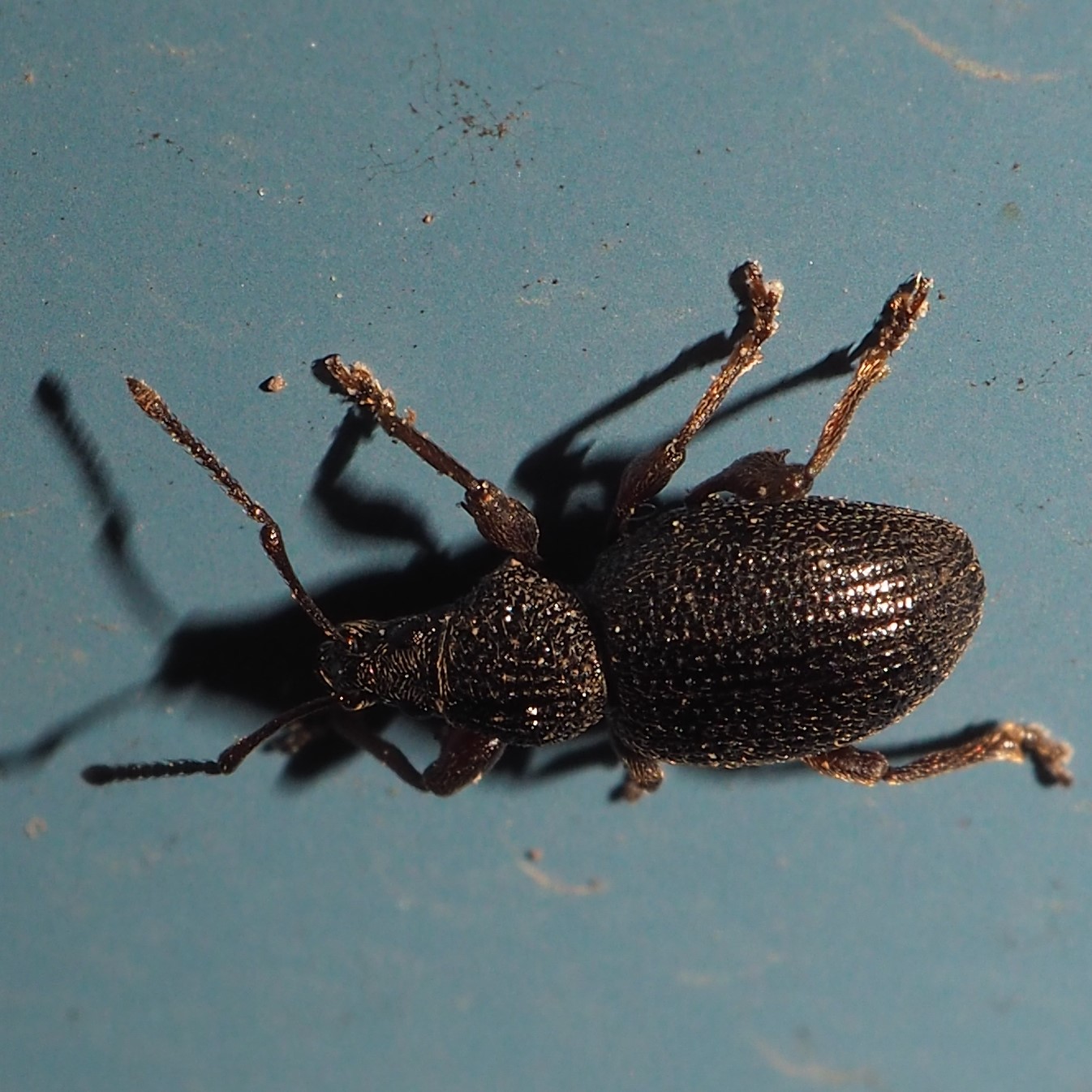
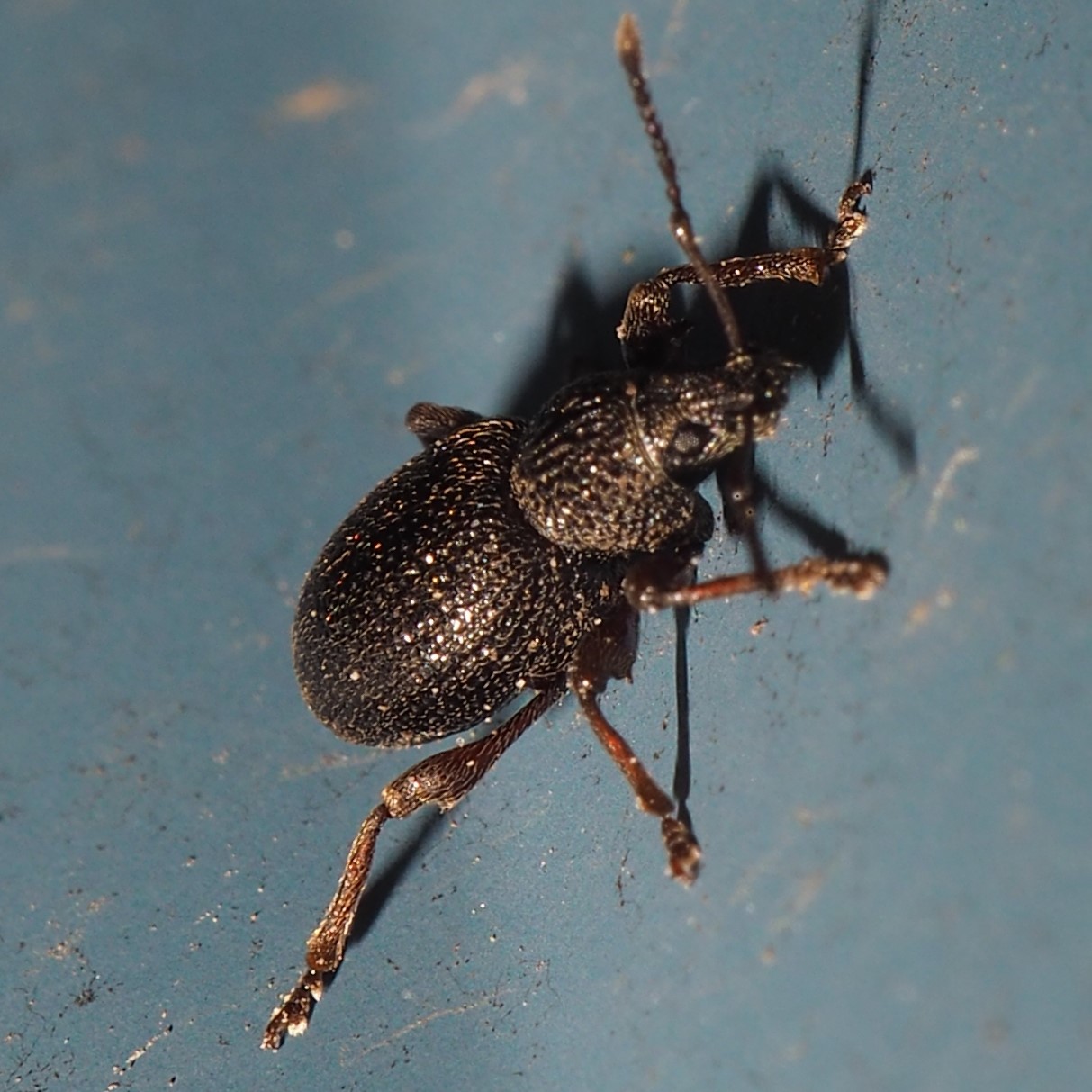
This weevil is called Lechriops oculatus. I love its big eyes and curly proboscis. Third is another light brown Weevil that we see very often.
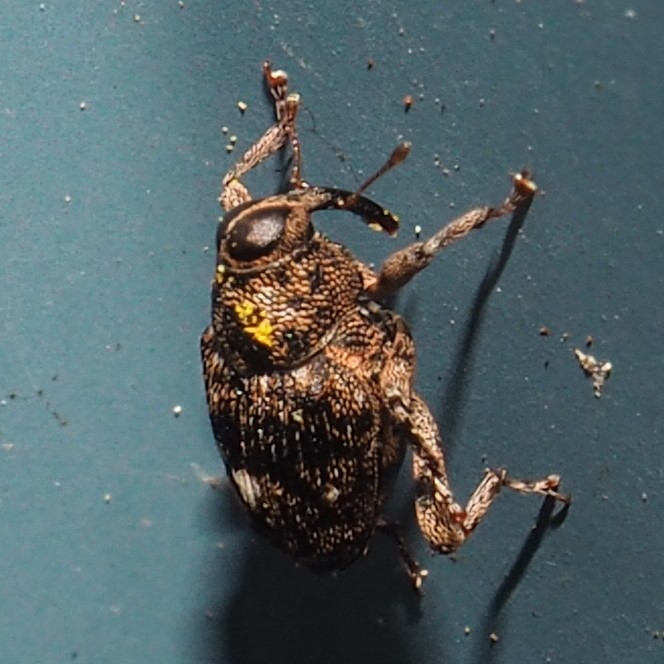
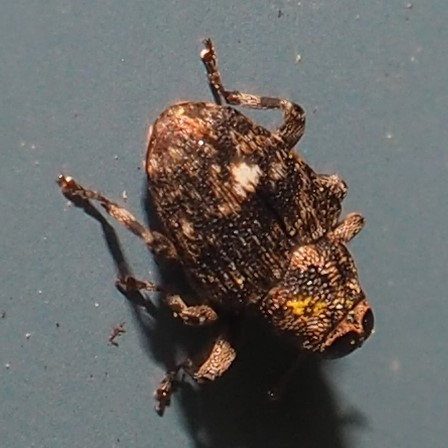
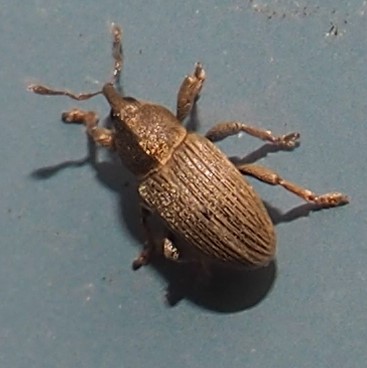
On to the Bugs. First is Aradus robustus, a Flat Bug. We really are seeing a lot of flat things these days. Second is our old Fall Friend, Drymus unus. Third, an Assassin Bug (Zelus Luridus) nymph. You can now see its growing wings easily.
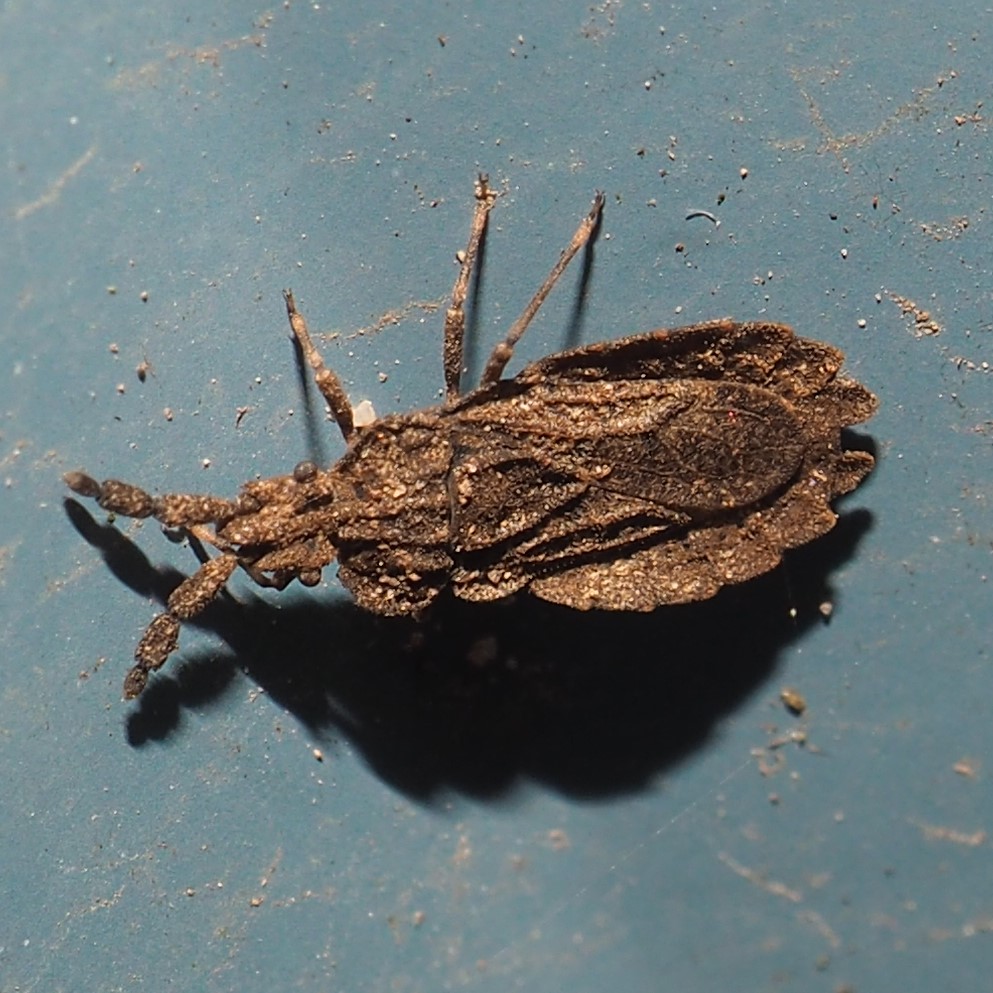
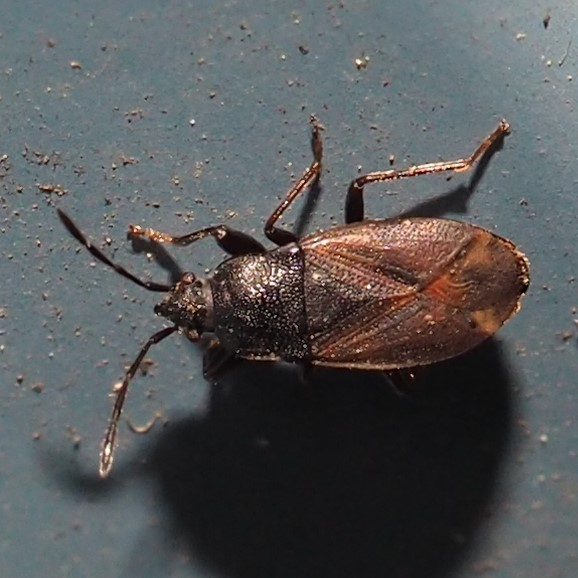
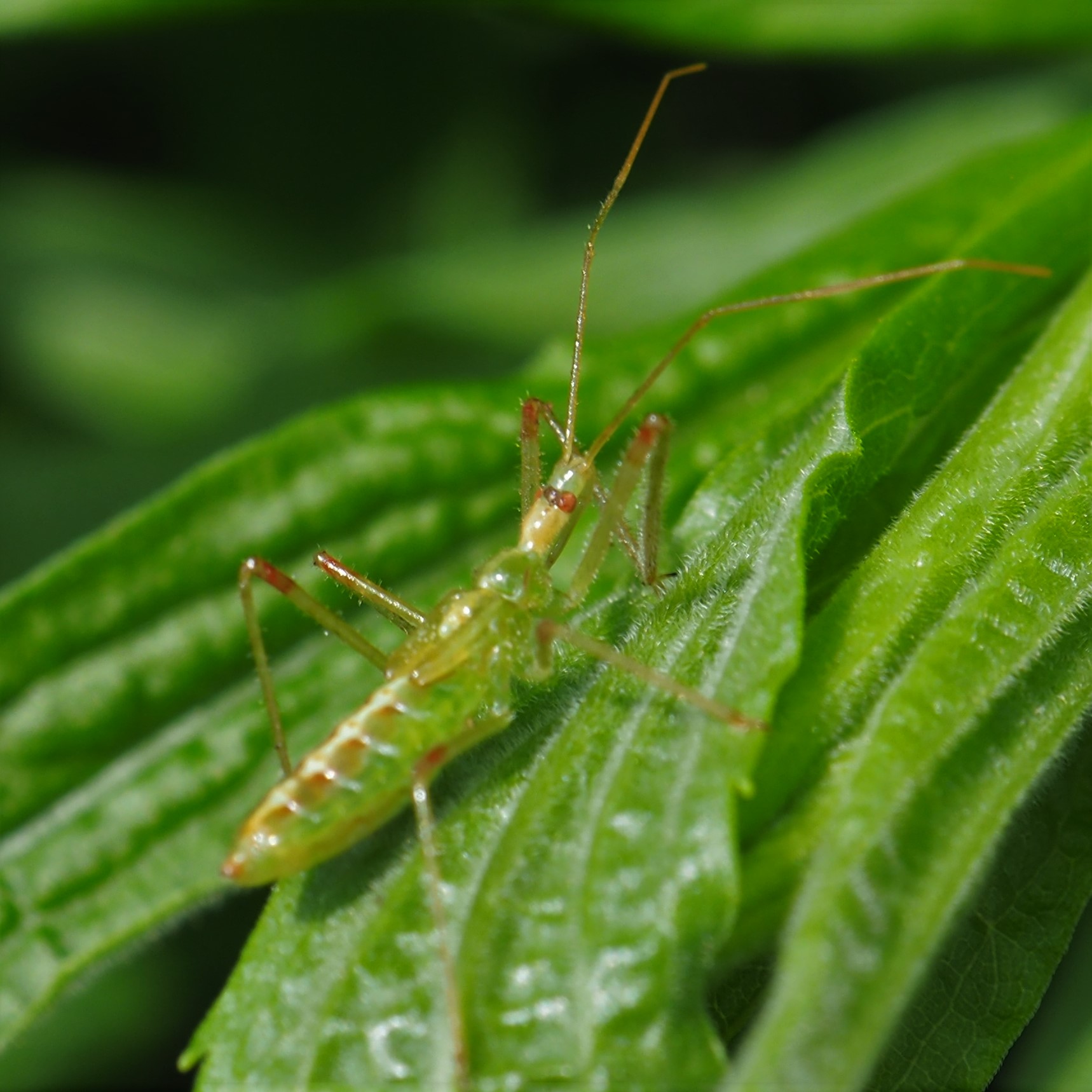
It's interesting how many color combinations the Assassins show. This first one is exactly the same species as the second. Third is an adult. (A quick bloomer, I'd say.)

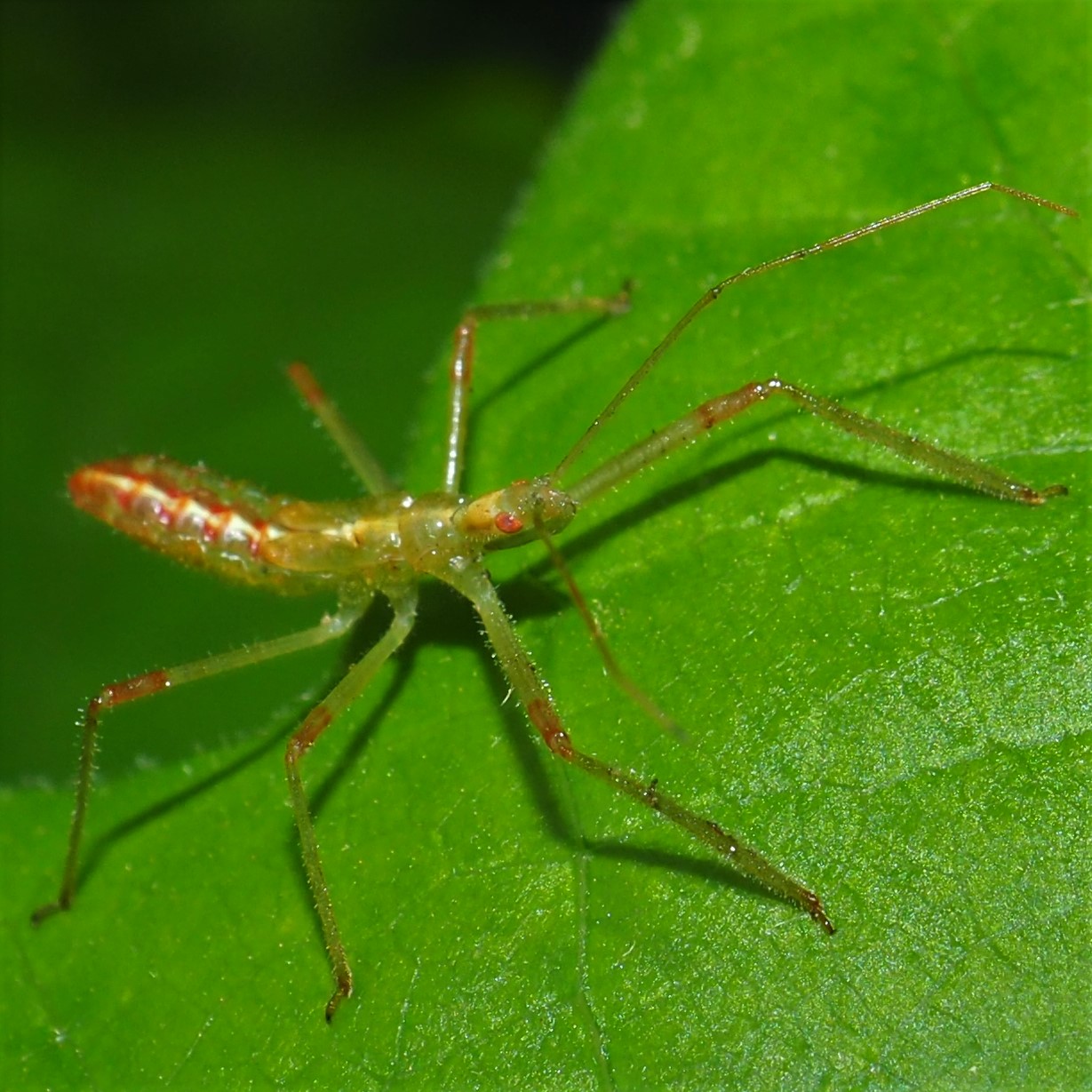
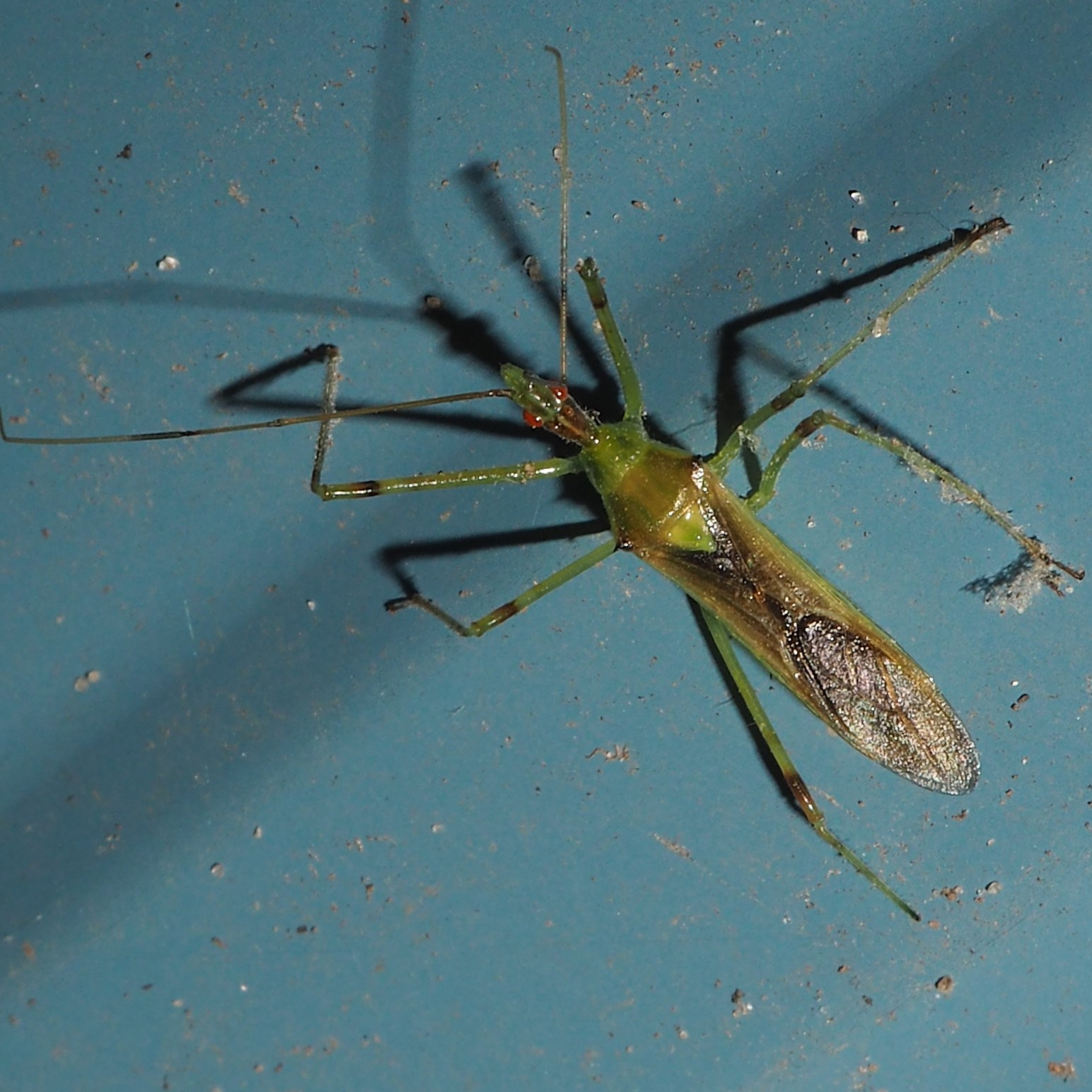
My beloved leafhoppers! First is of genus Agallia, and I think it is Agallia quadripunctata ("four spots"). Second is that rain-wrecked Erasmoneura hopper. And third is Eratoneura ligata. I'd forgotten I'd seen it before.
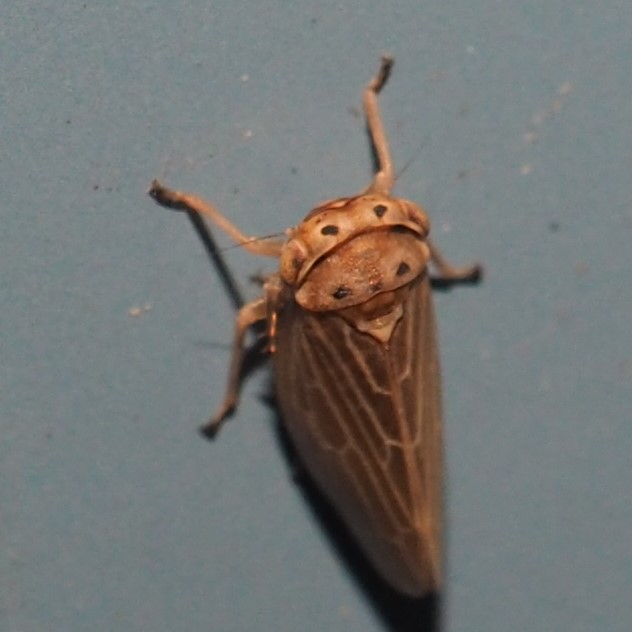
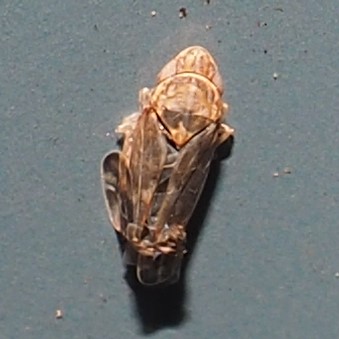
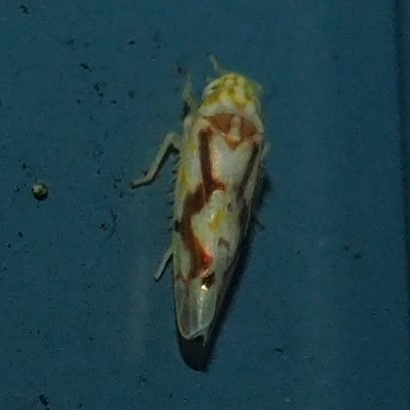
Some Plant Bugs. I've got requests out for ID's for both. Third is the White-margined Burrowing Bug.
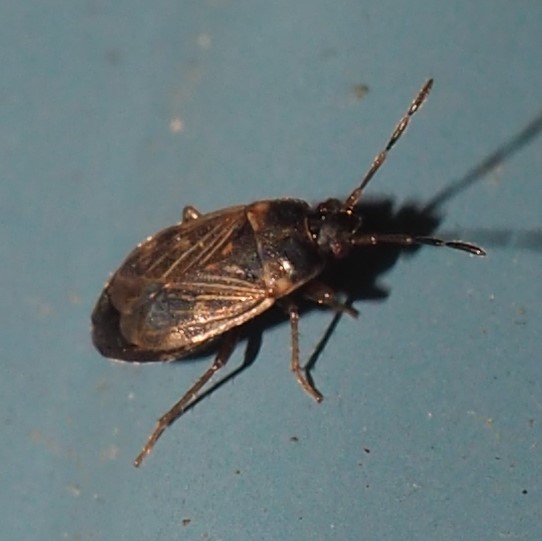
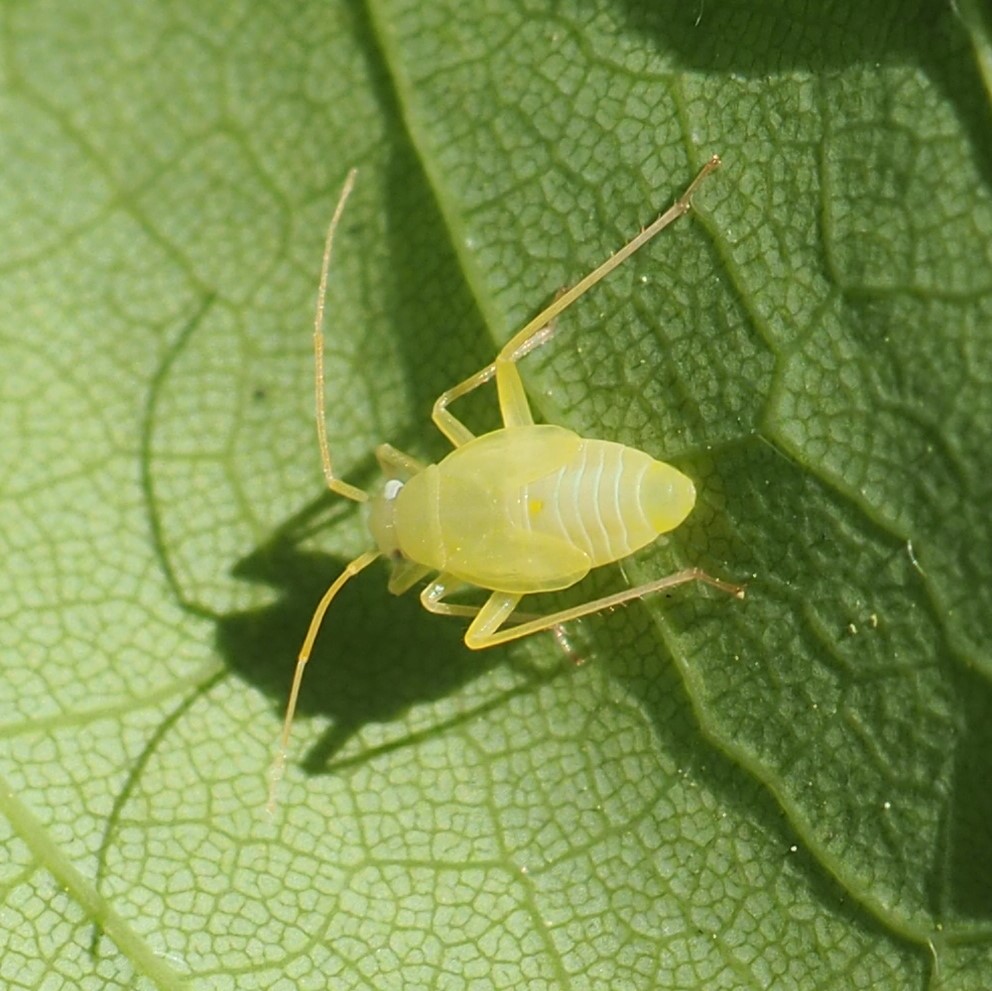
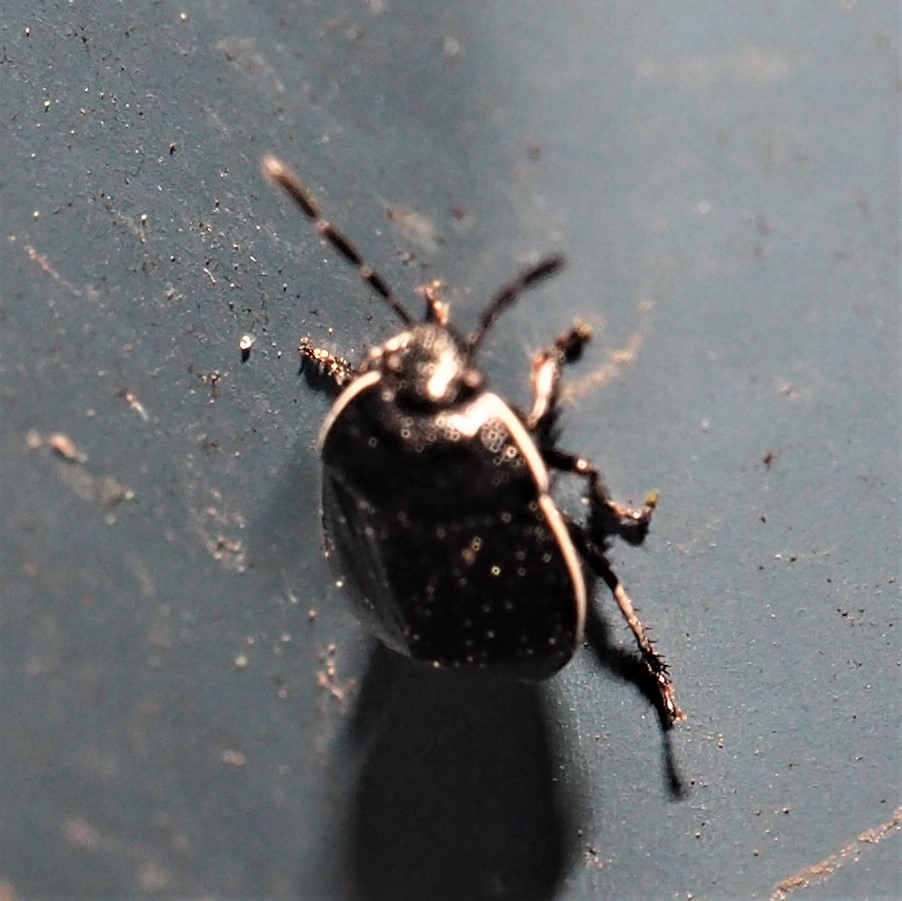
Here is that Green Caterpillar that @k8thegr8 of iNat ID'd last week as an American Copper Underwing, Amphipyra pyramidoides. Next, a Yellow Caterpillar. K8thegr8 also ID'ed that one - as a member of Tortricid Leafroller Moths and Allies, Superfamily Tortricoidea. Then another one of those Leaf Blotch Miners, this one of genus Cameraria. Fourth is a tiny Pygmy Eye-capped Moth, of family Nepticulidae.
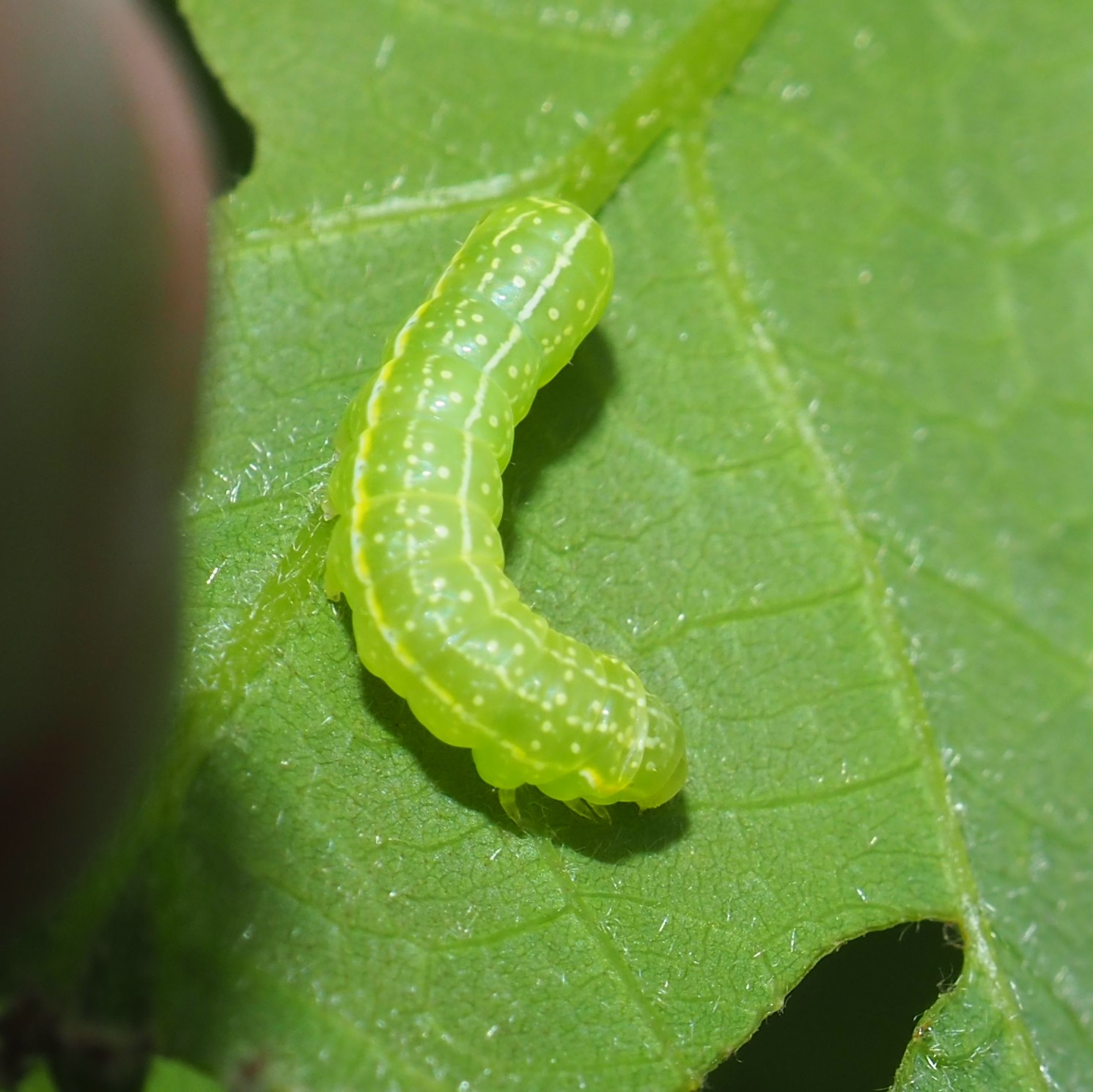
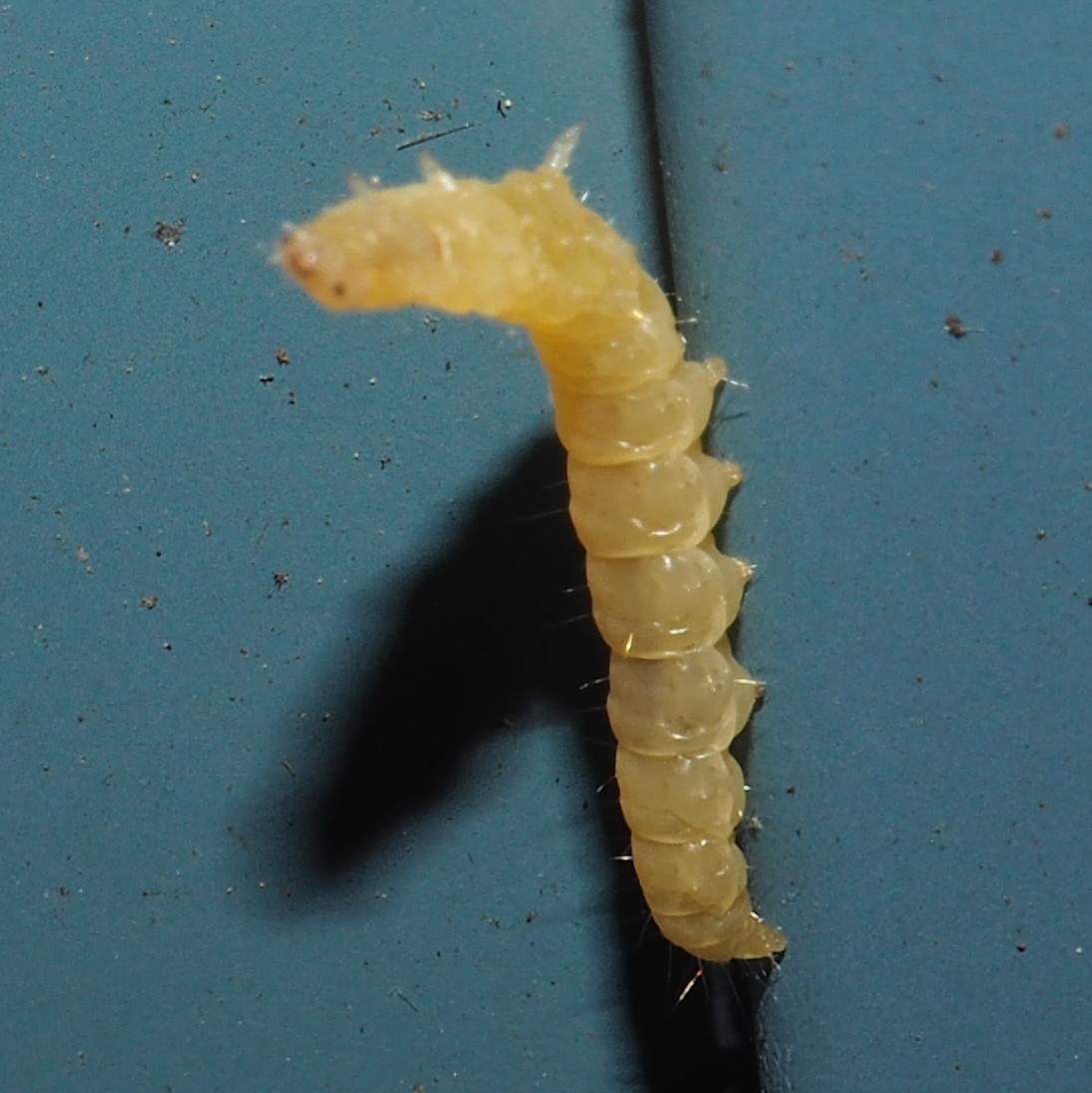
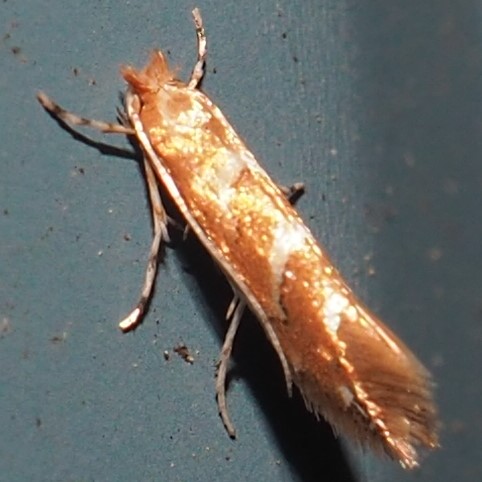
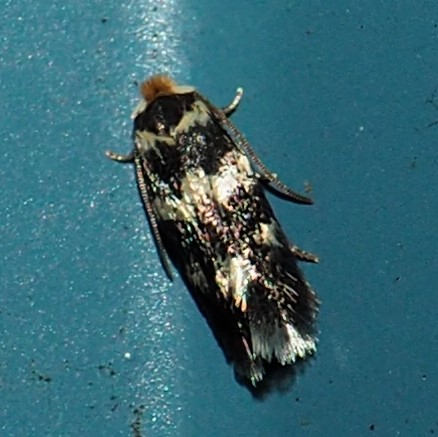
We also had some larger handsome Moths. First here is the Dark-spotted Palthis Moth, then a White Slant-line Moth, Tetracis cachexiata. Third is one that I've seen quite a few times - the Porcelain Grey, Probotoarmia porcelaria. What a lot of name for some very pretty moths.
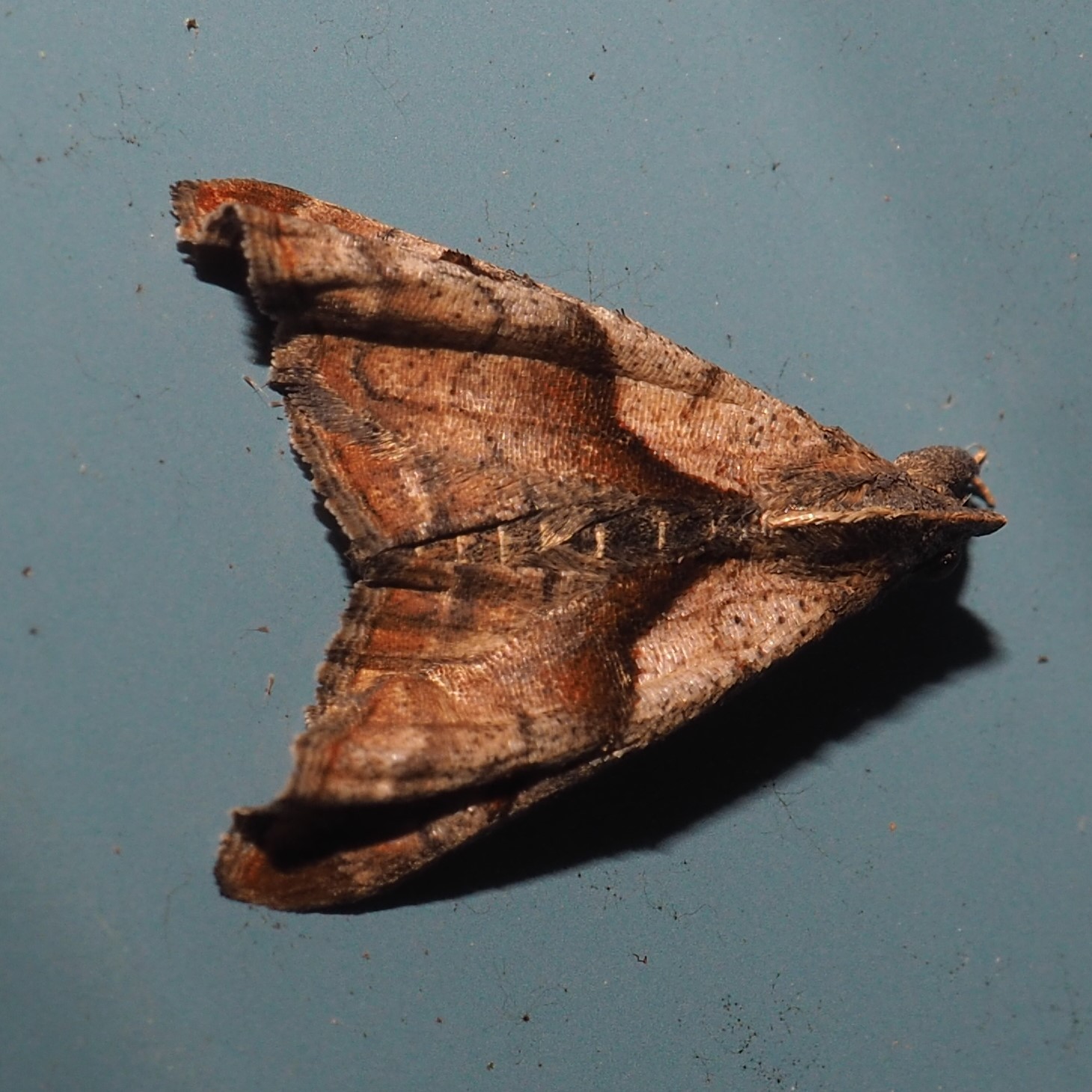

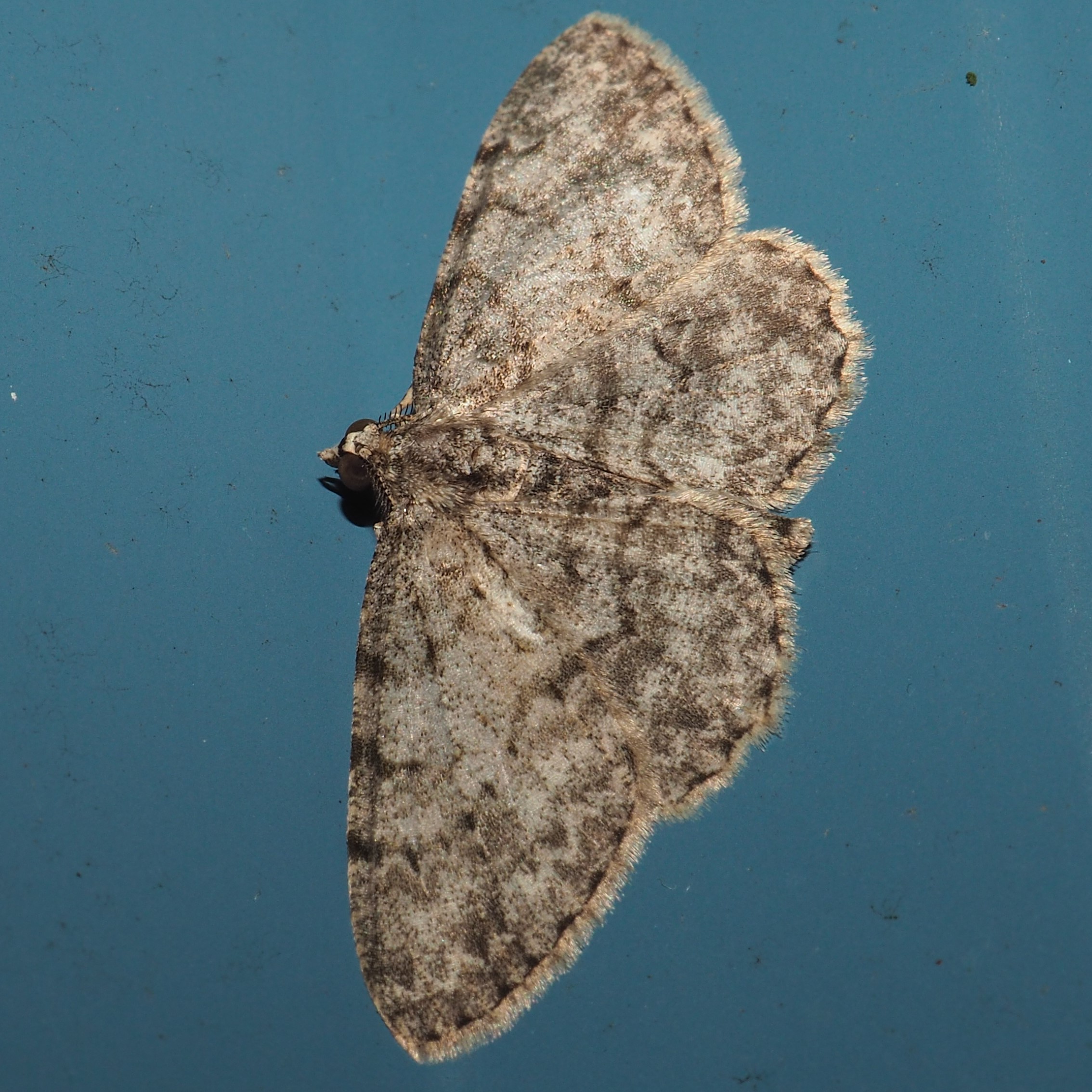
Well, in order to match up the caterpillar with the rest of the moths, we've had to skip the Fishes, the Flies, and the Frogs! To make up for it, here's a very animated shot of the Fishes starring Chico, a (former fellow) female. (Had to do that to continue the alliteration theme.)
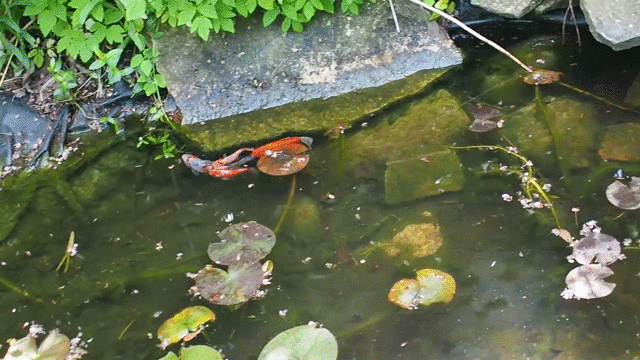
On to the flies. There were a lot of tiny but very lovely flies, so I hope you'll enjoy these. I promise not to show any midges unless they are exquisite. The good news about the Dame's Rocket and Ranunculus that the pretty little Hover Flies adore them. Here we have two very closely related ones, Toxomerus marginatus and Toxomerus geminatus, resp. A little staring at these will help you learn the difference.
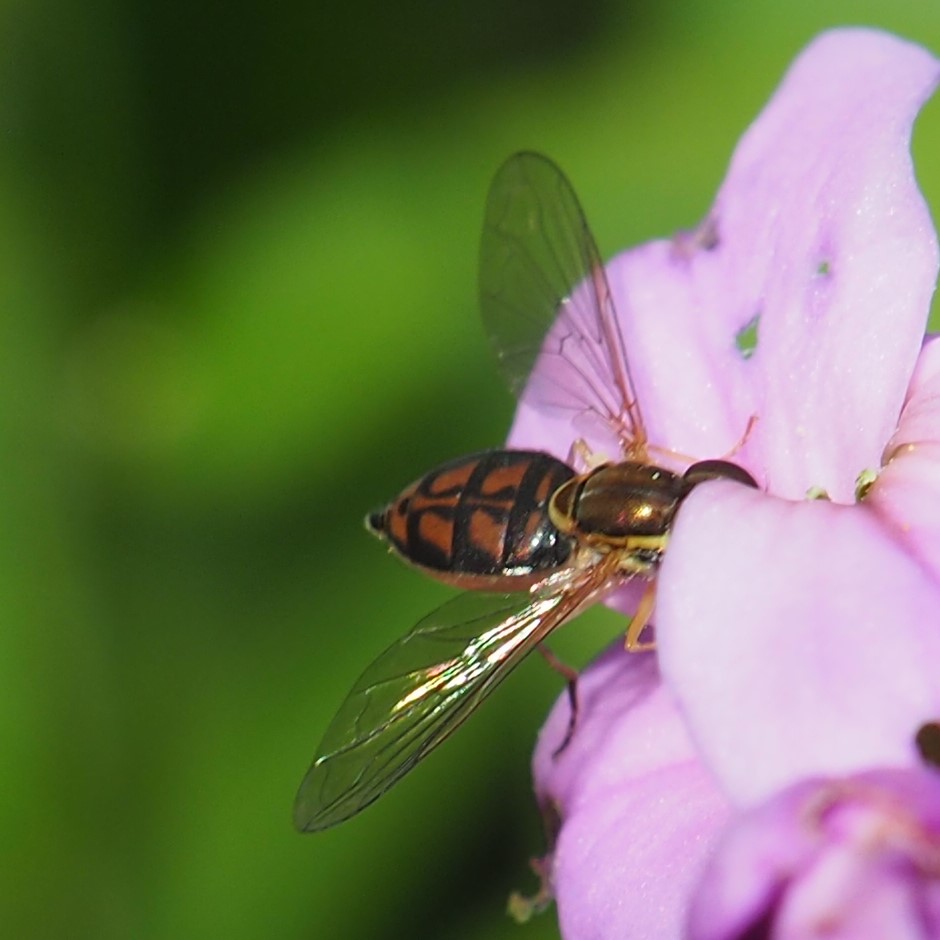
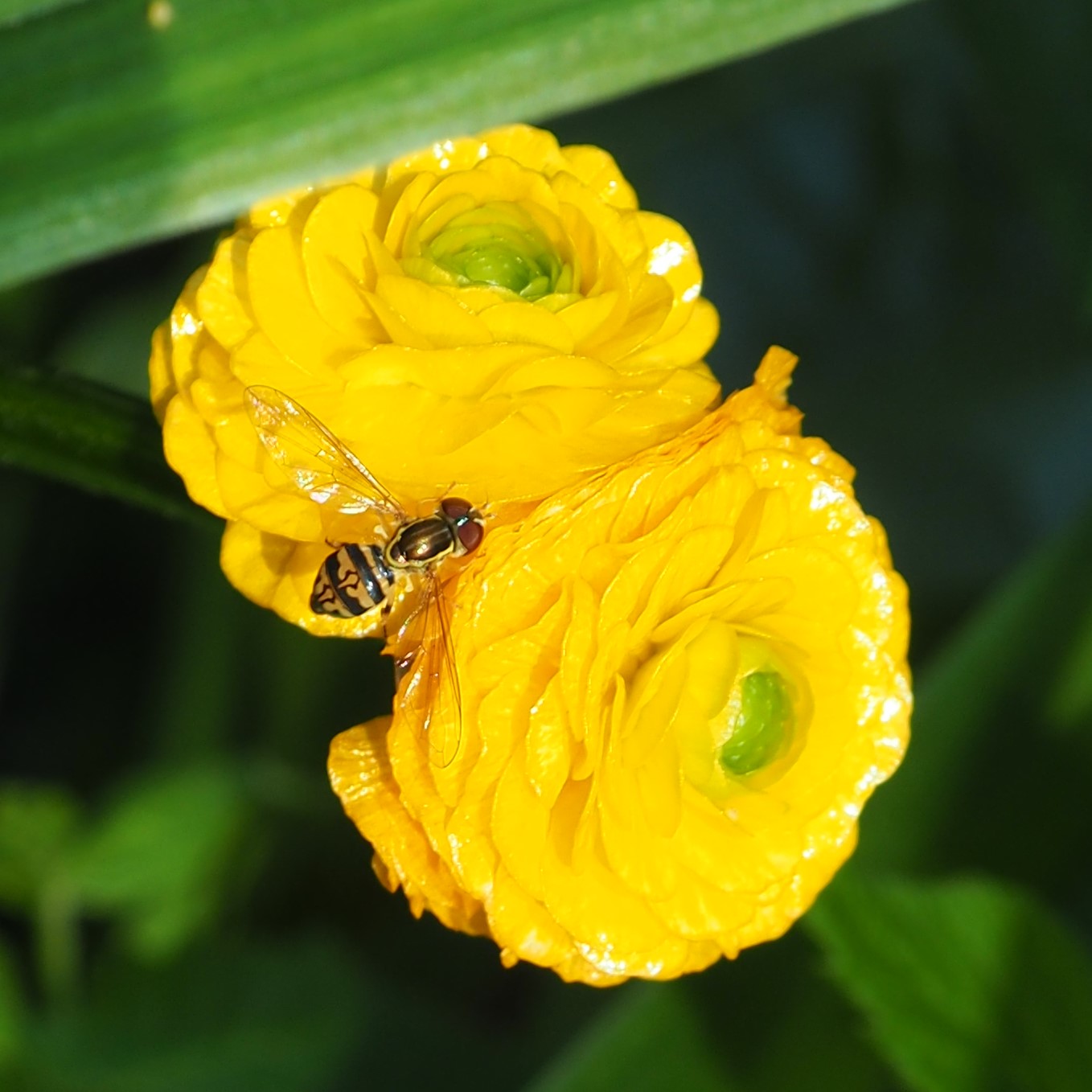
These two male Midges ARE really exquisite if you will but look at them a bit. Oh, the third one may not be gorgeous, but it seems to have some interesting yellow mites on it. Fluffy antennae and delicately sculptured features. Number 4 probably isn't a midge, but it IS a very pretty shade of milky green. Maybe I've been watching Bob Ross too much.
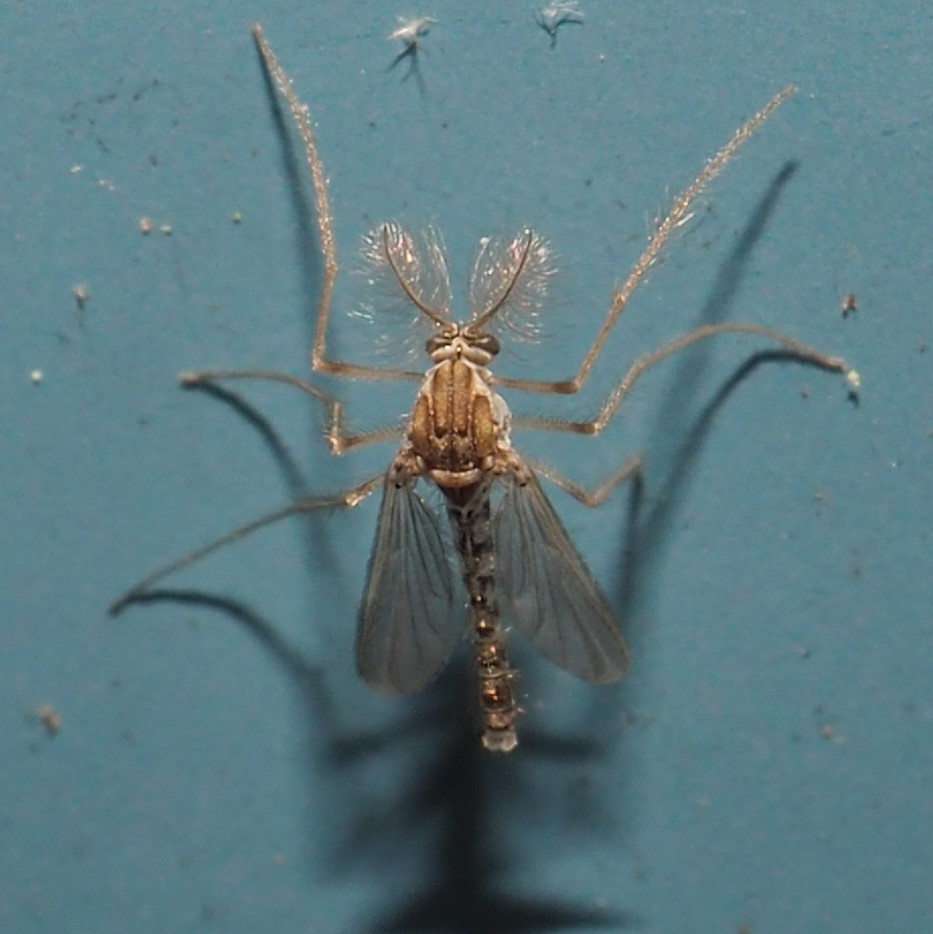
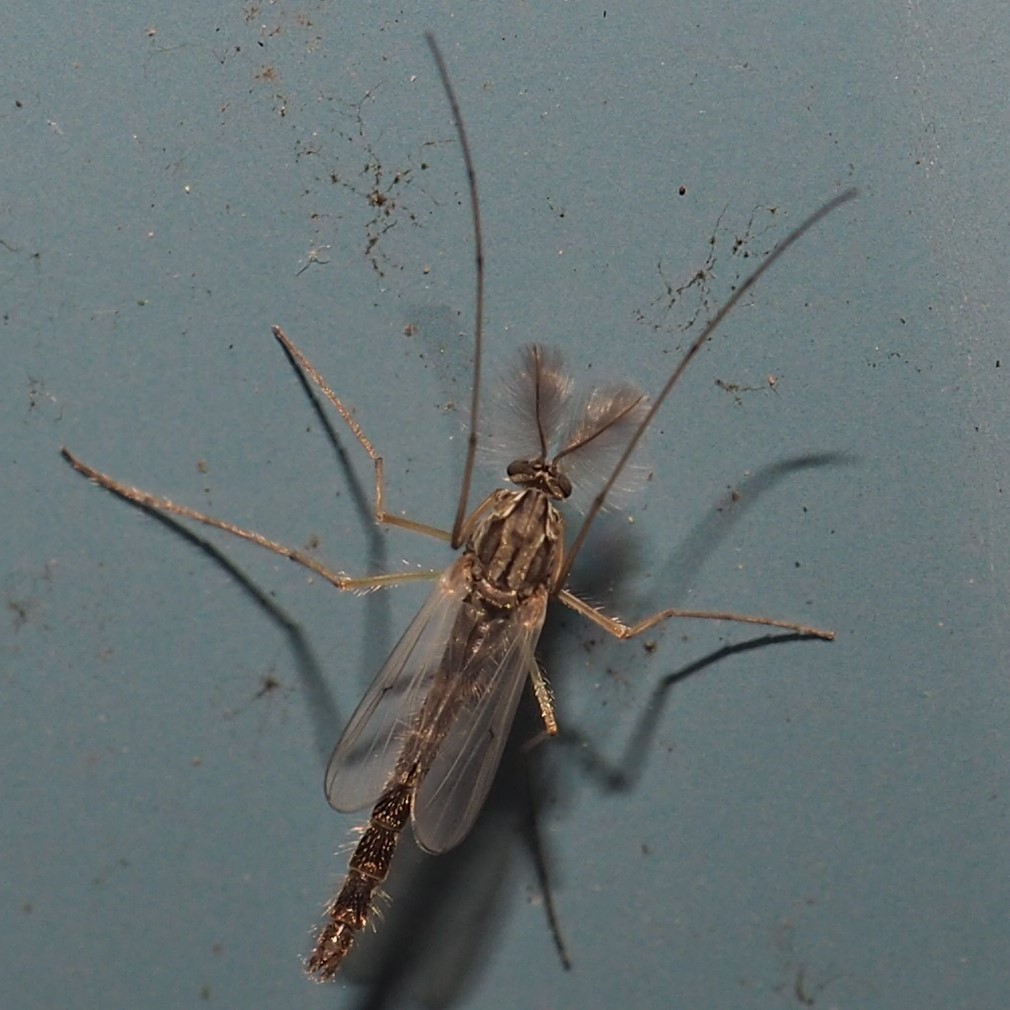
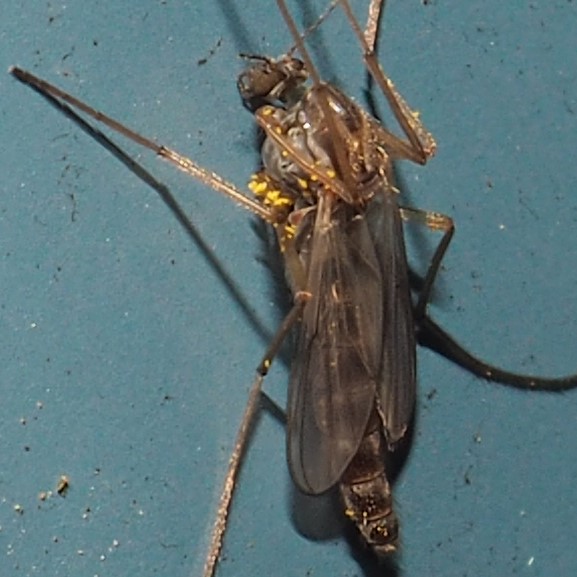
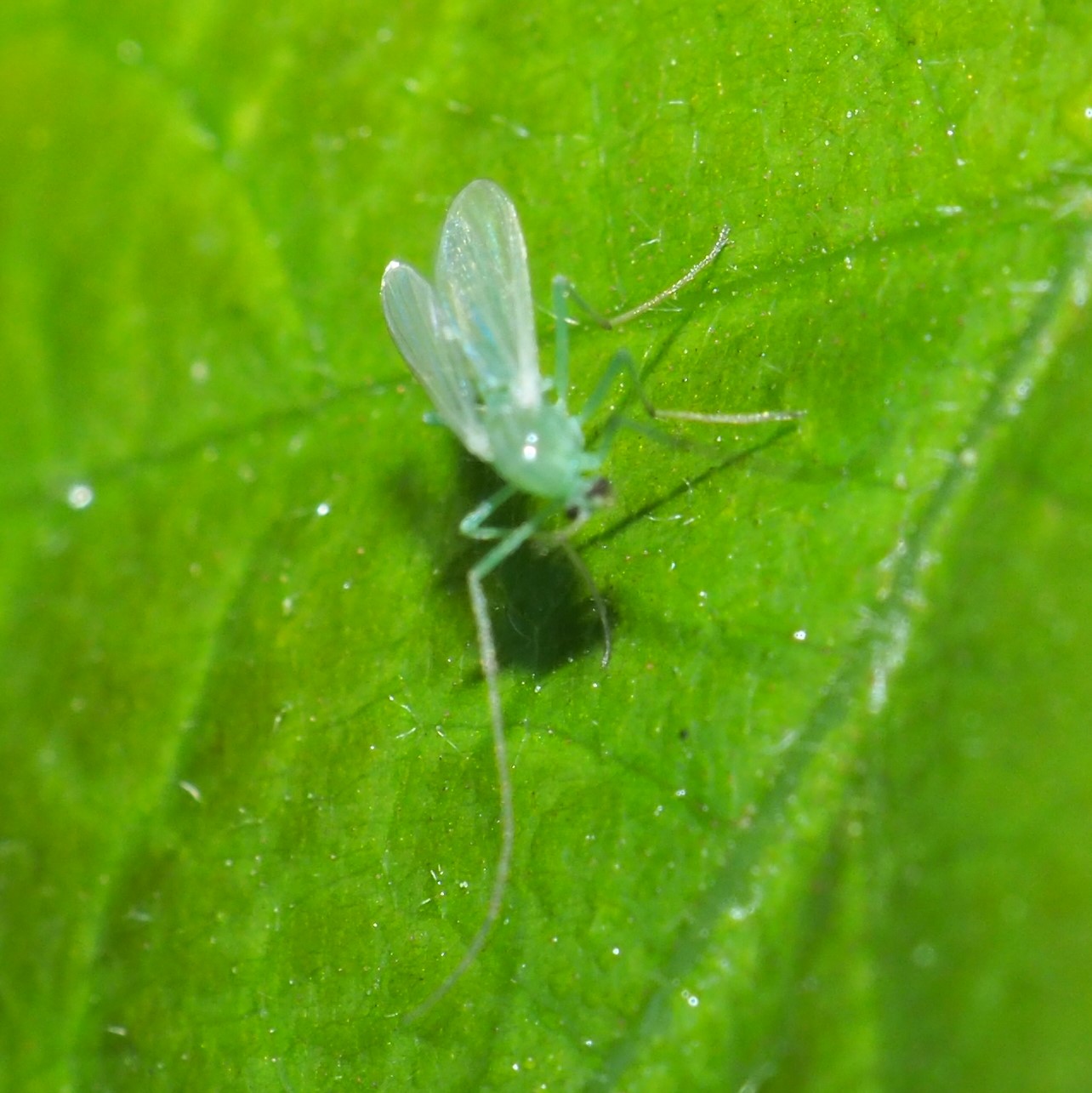
The first two here are open- and closed-winged views of a Moth Fly. They almost look pattable. Third, a tiny elongated fly, is sitting on an elm leaf.
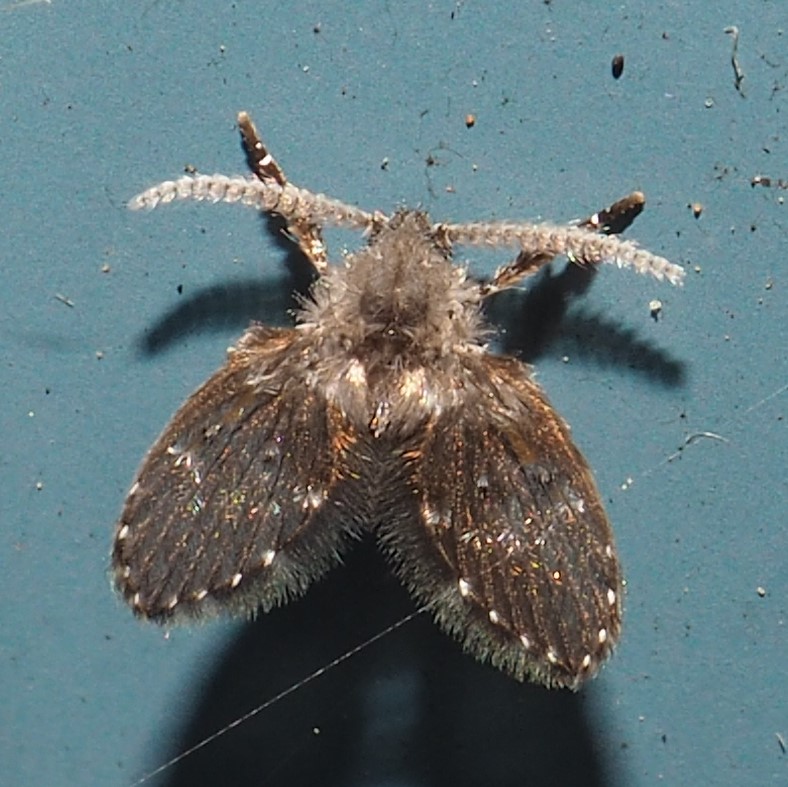
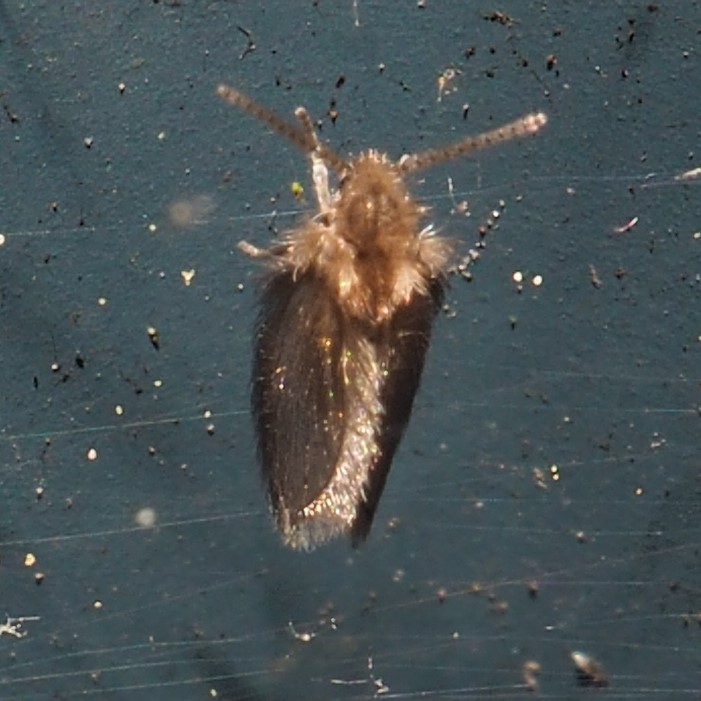
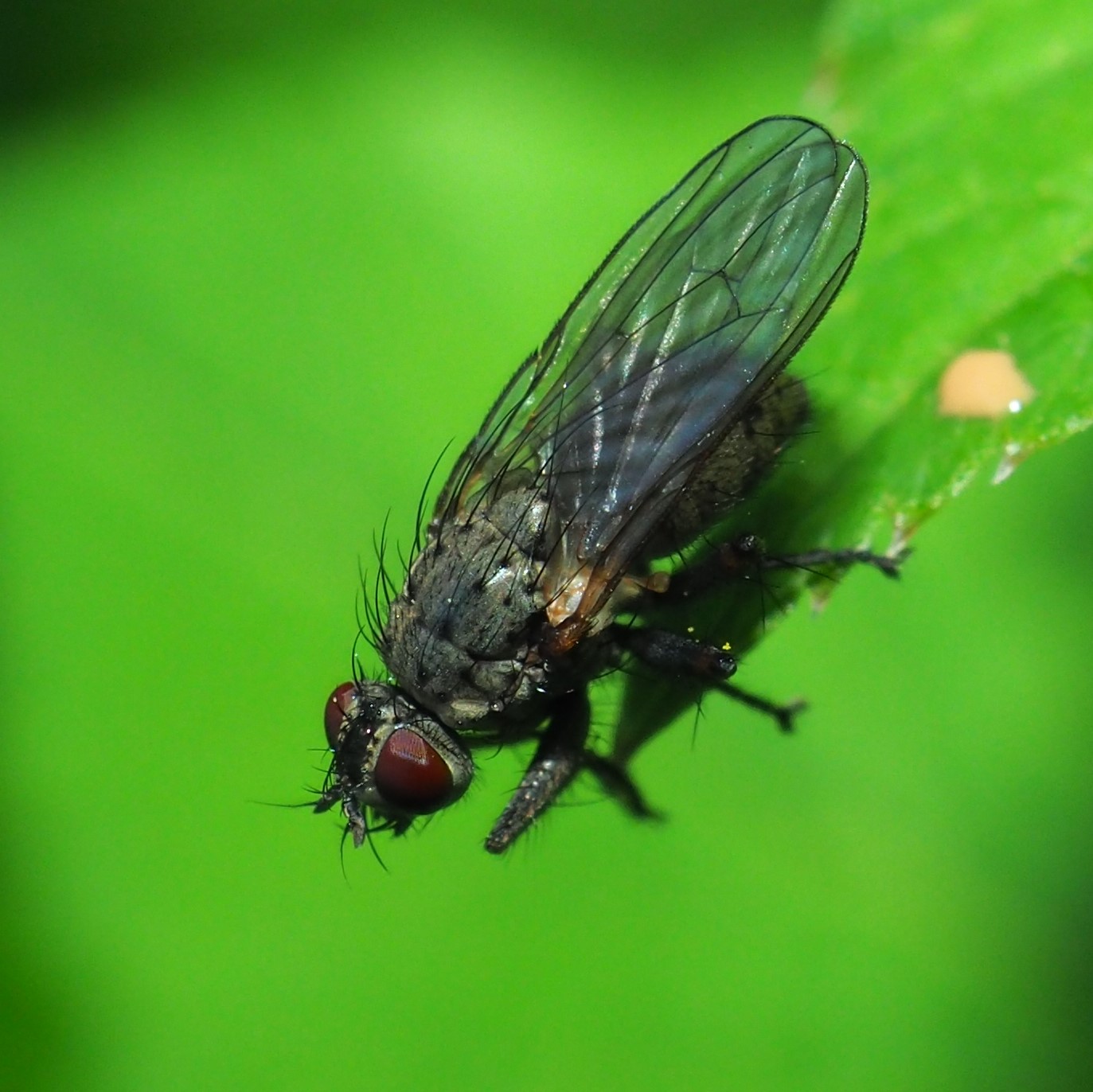
I love it when the light plays tricks with my eyes. First here is a Snipe Fly. Is this what the Boy Scouts had to hunt for? The second one I couldn't decide whether it's a fly or a wasp. Same with number 3.
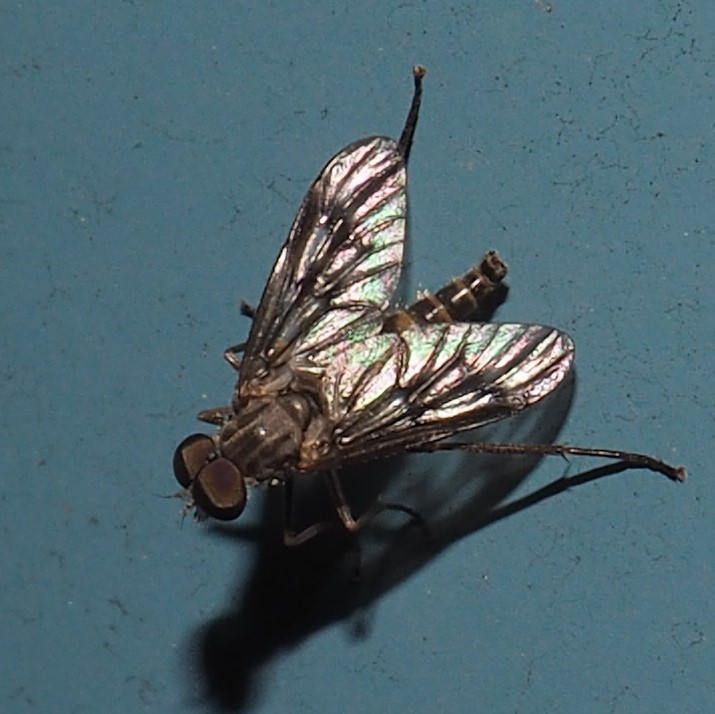
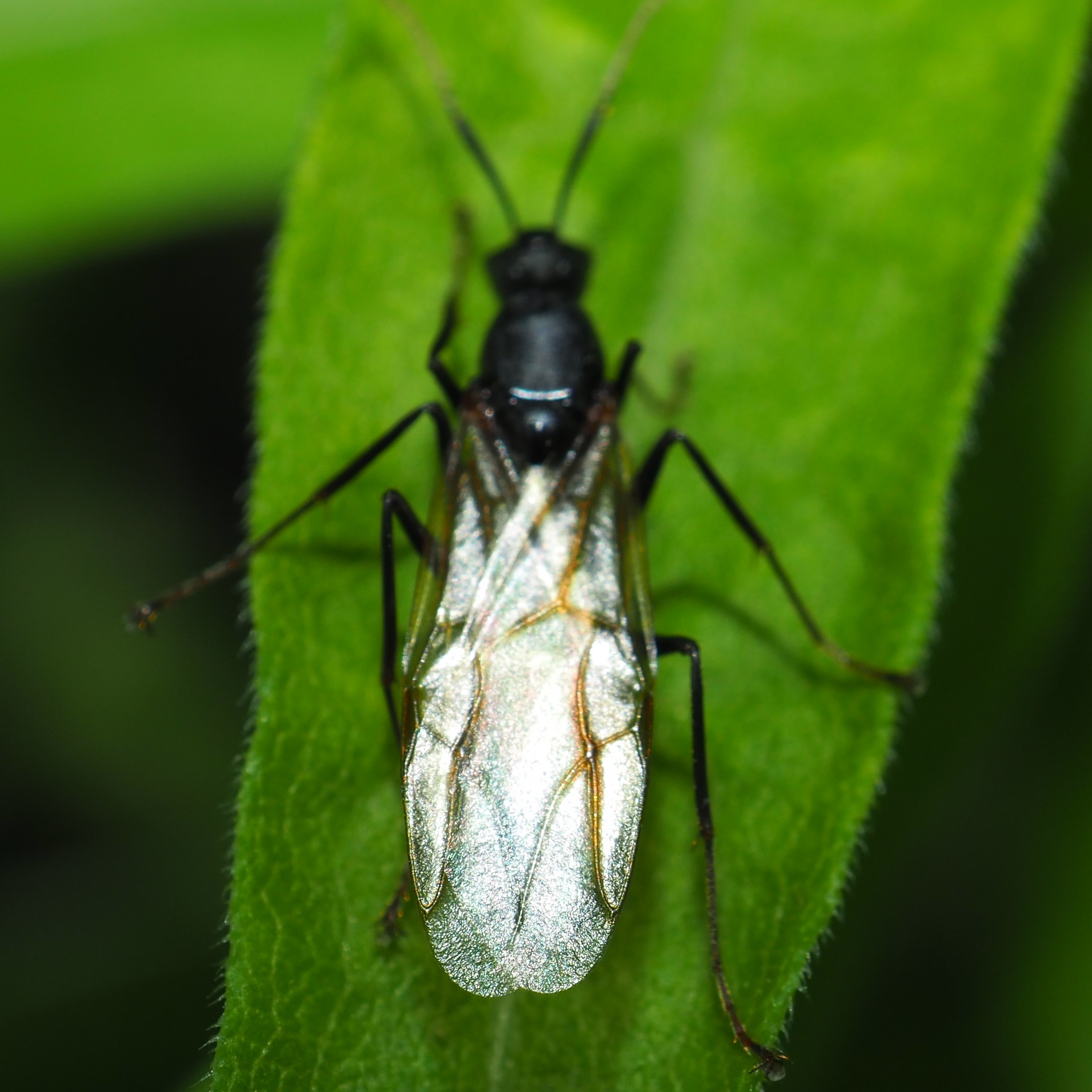
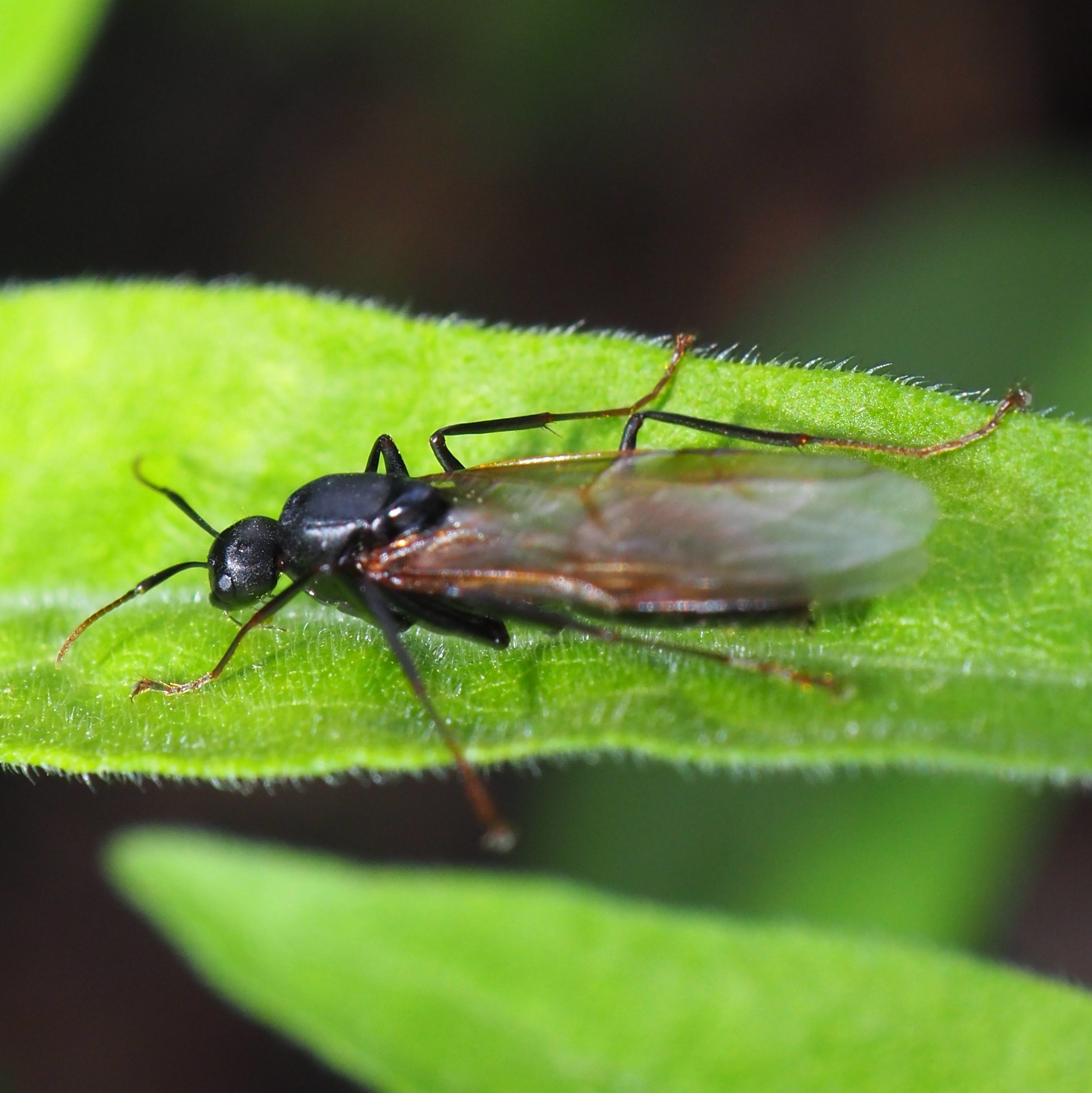
Here's Froggy with his iconic ironic smile. And here's ONE pair of two that came to spend the night a couple of days ago. This time I neither saw nor heard any sign that the Raccoons came to exploit their visit. Third is a set of eggs laid by the Toads. You can see the spaced egg-gel-egg-gel-egg-gel... The eggs are laid in two strands, and each strand is made of that staggered packaging of egg with food for hatchlings, egg, food, etc. Am I clear? Picture 4 is a surprise. It is the tadpoles from the former mating. They weren't ALL lost in the fight. They are VERY much alive.
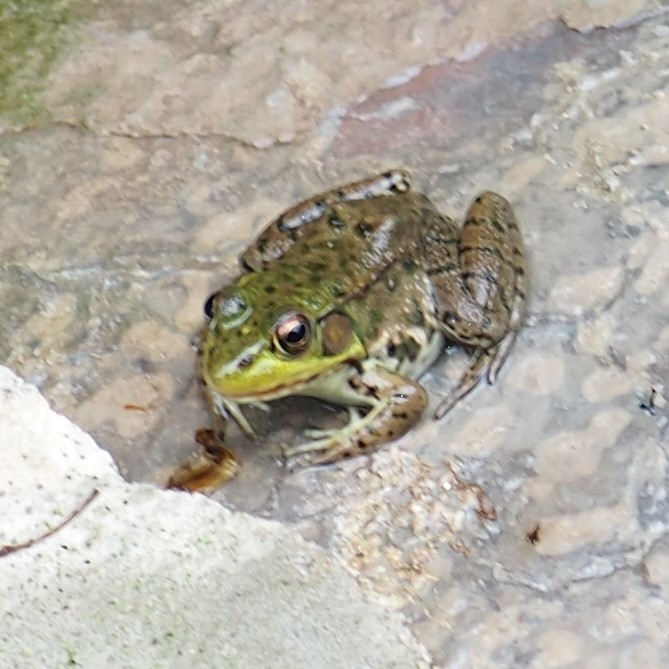
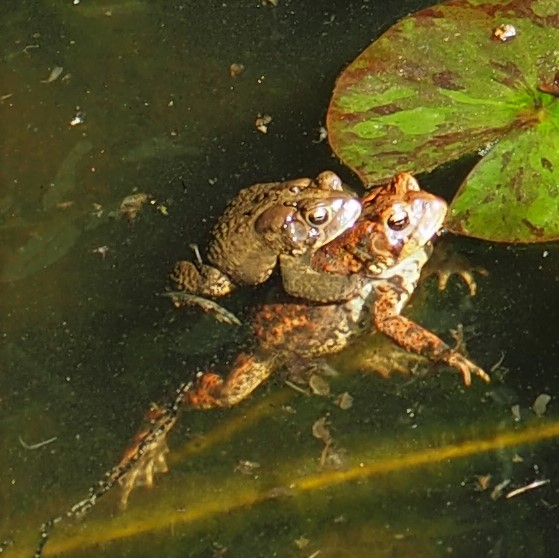
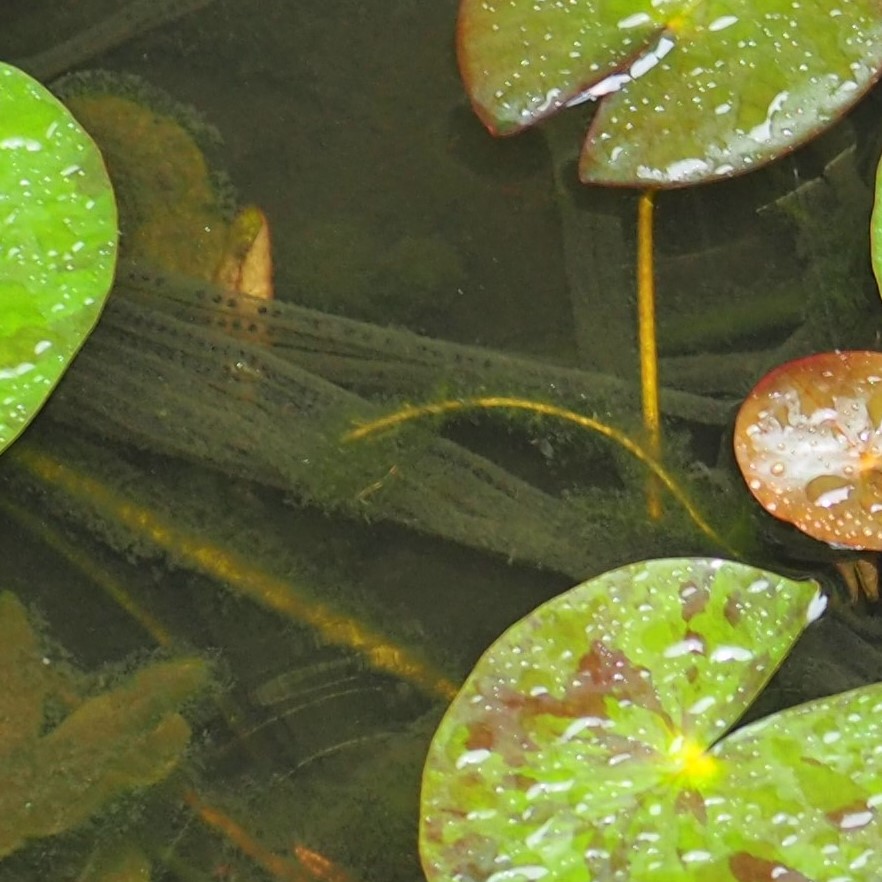
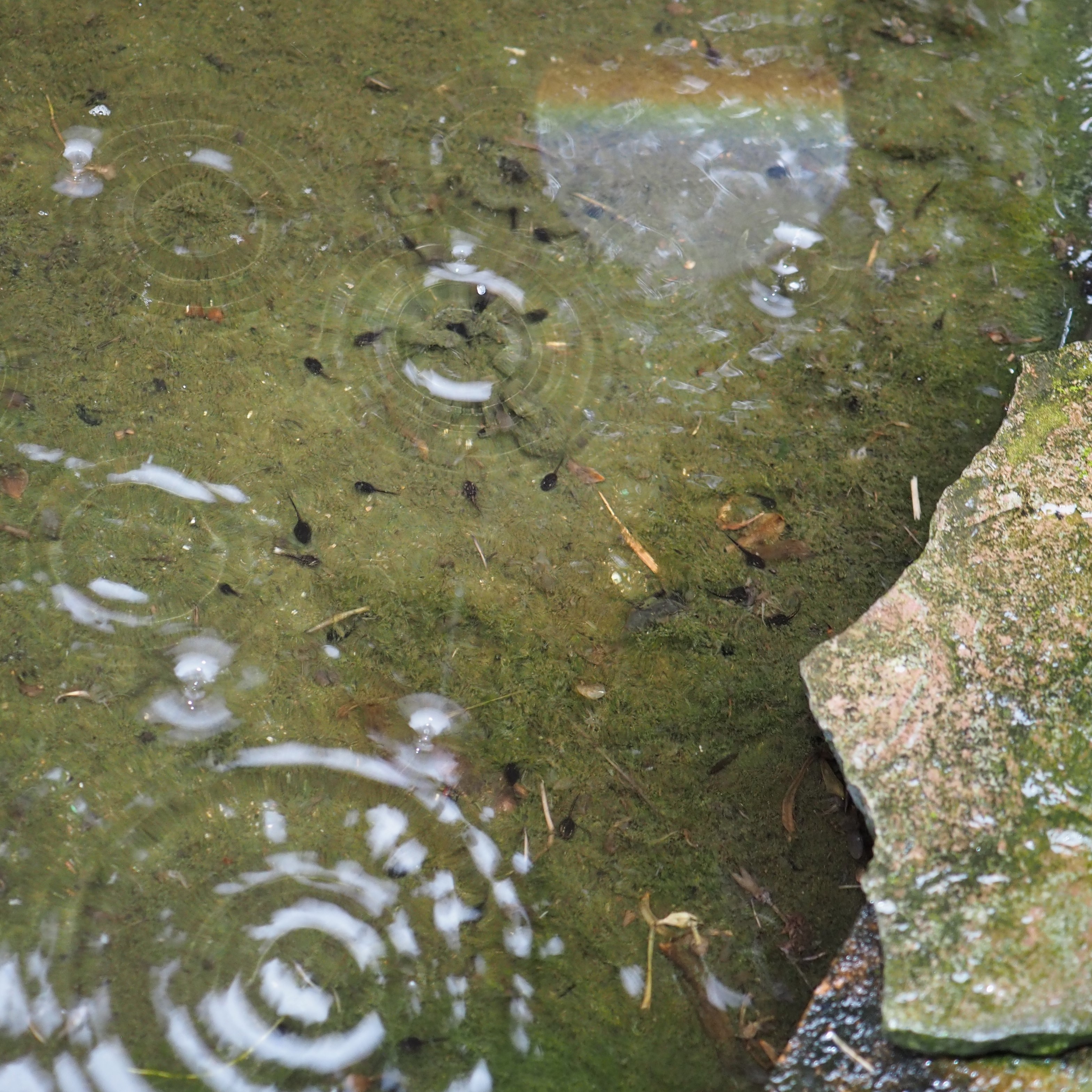
Some young Harvestmen. Look at that spooky eye.
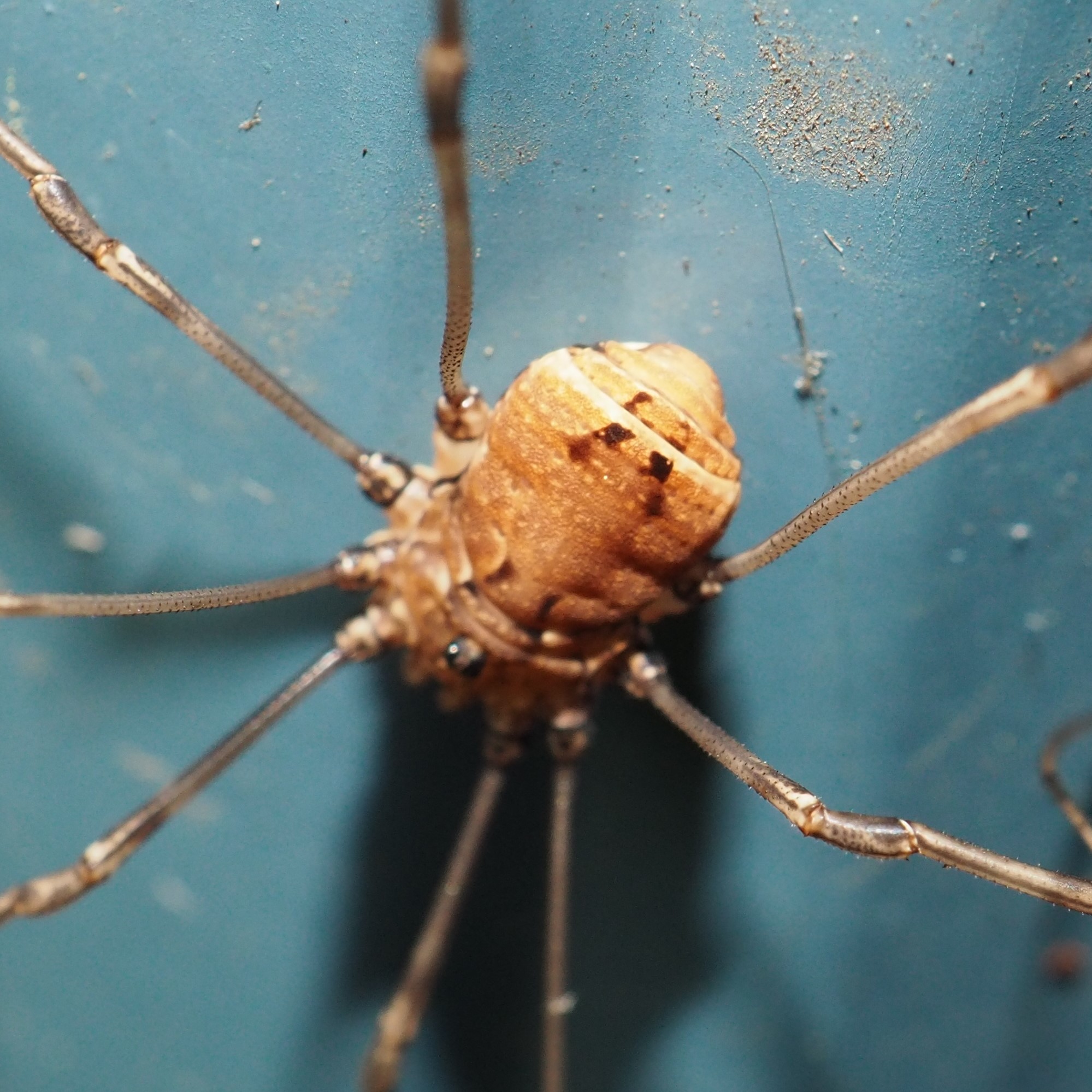
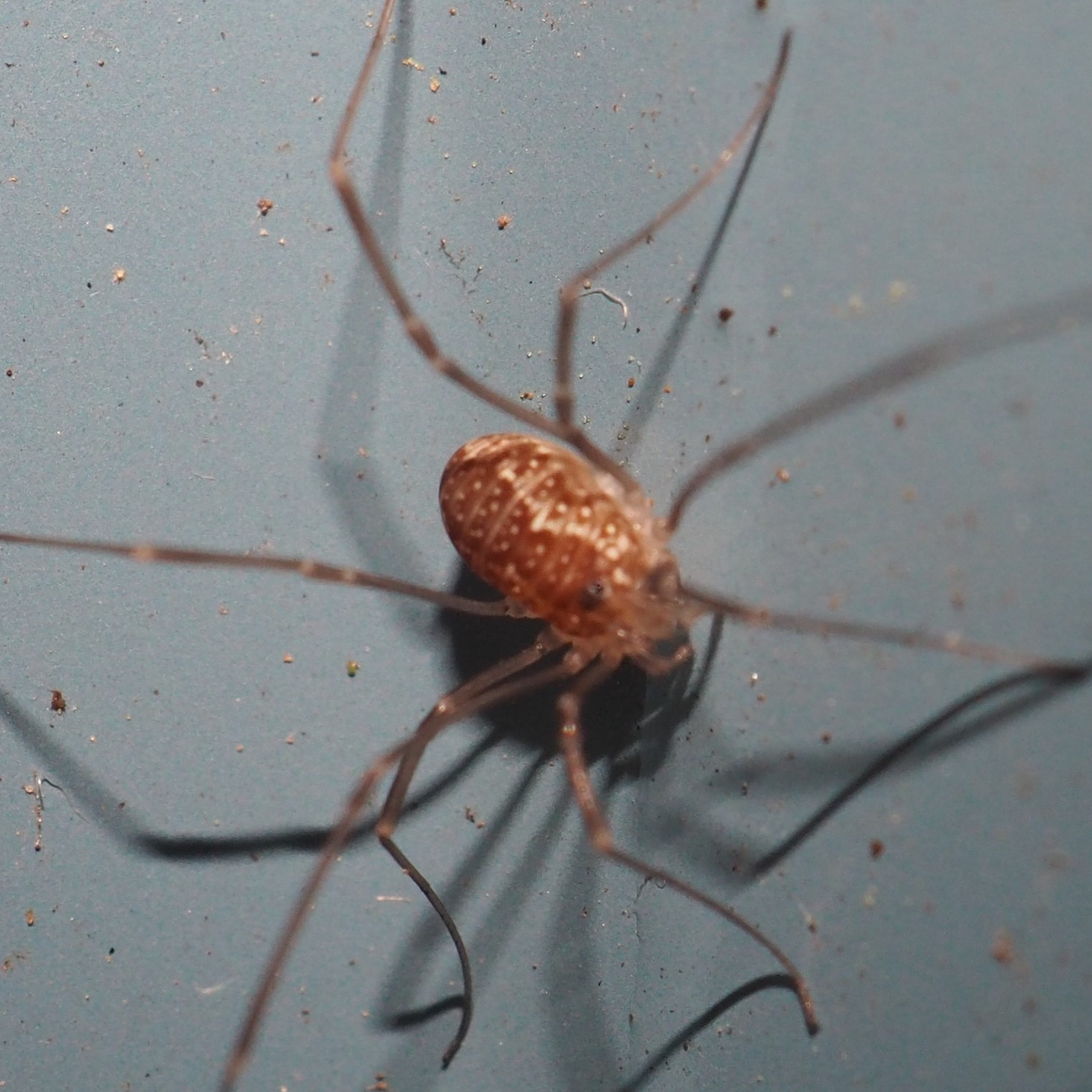
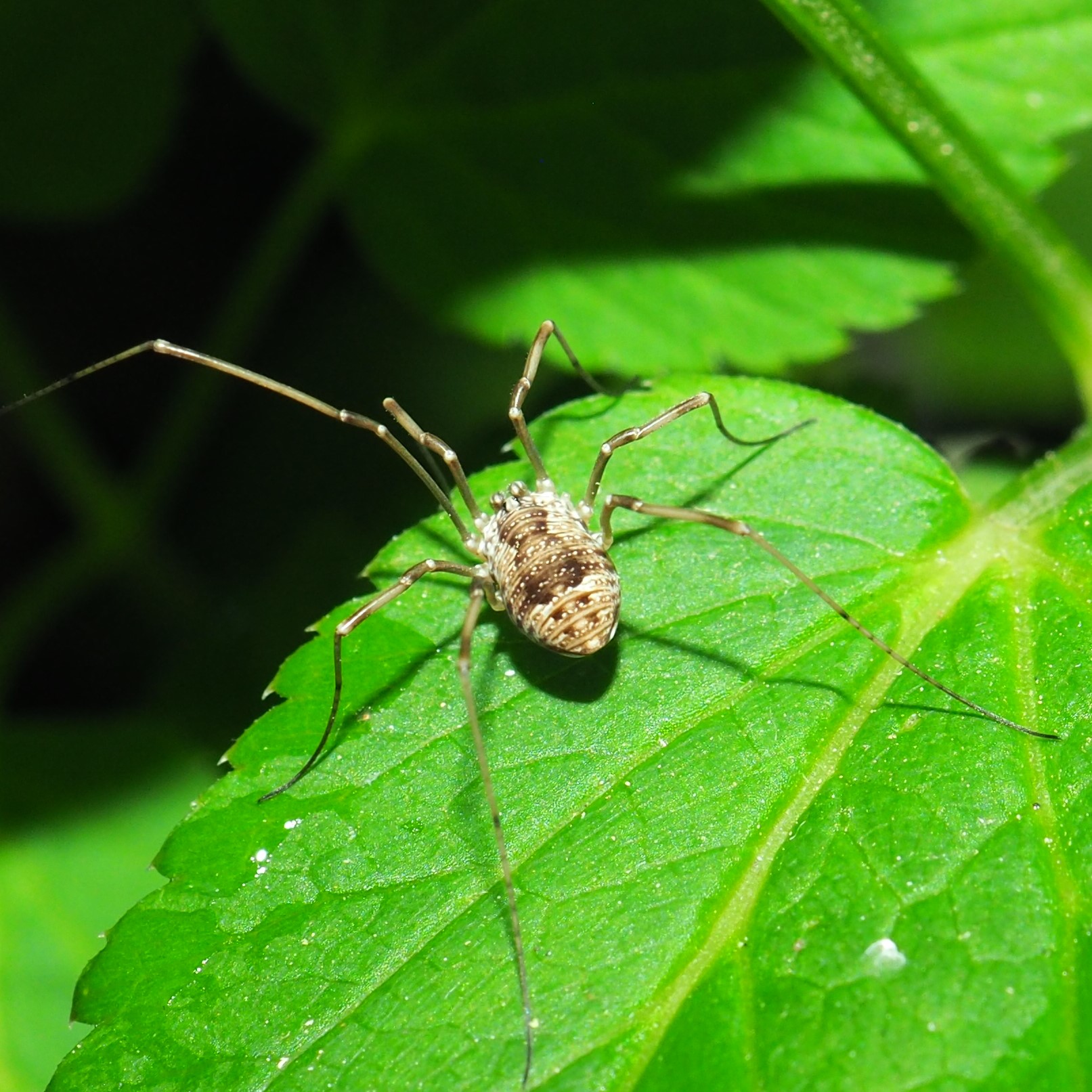
This might be a Whirligig Mite.
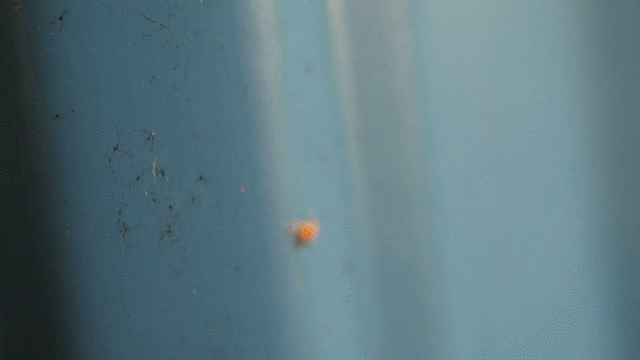
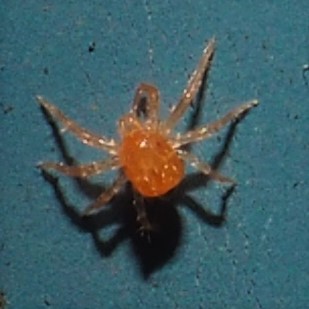
More flowers! More flowers! These big Poppies only bloom for a couple of days, but what days! The Ranunculus (a fancy word for "buttercup") is so bright and cheerful among the driveway pebbles. Third is Rough Cinquefoil, Potentilla norvegica.
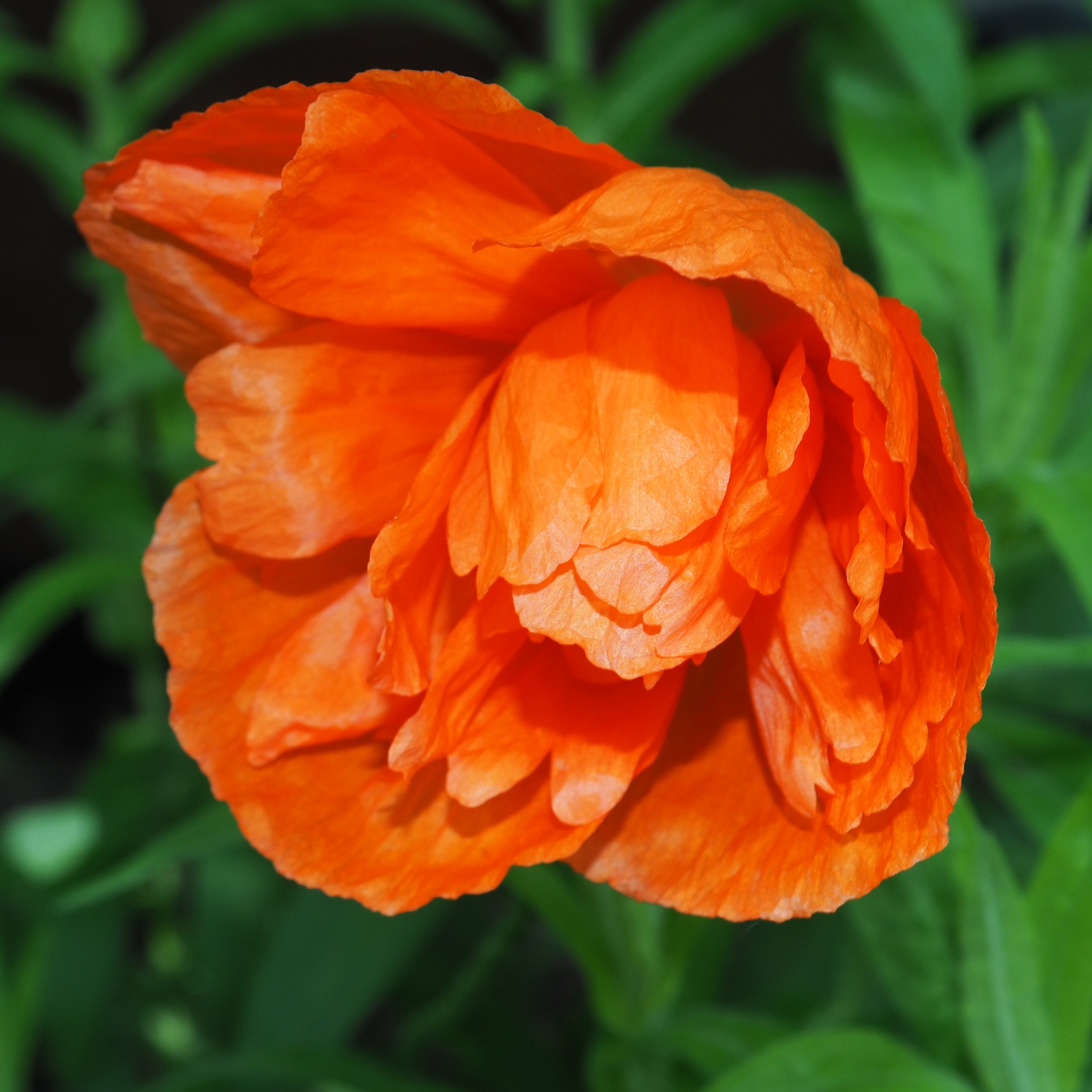
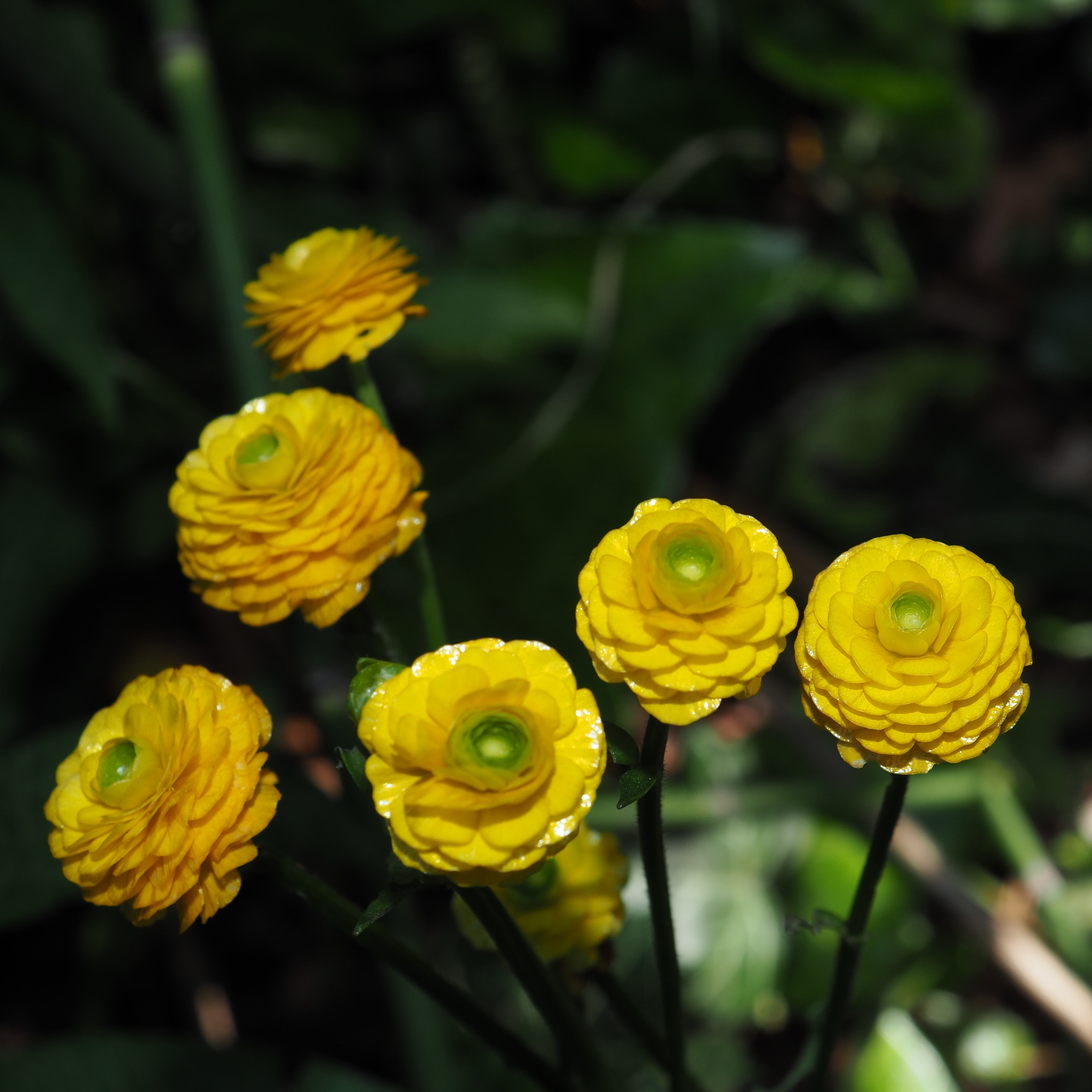
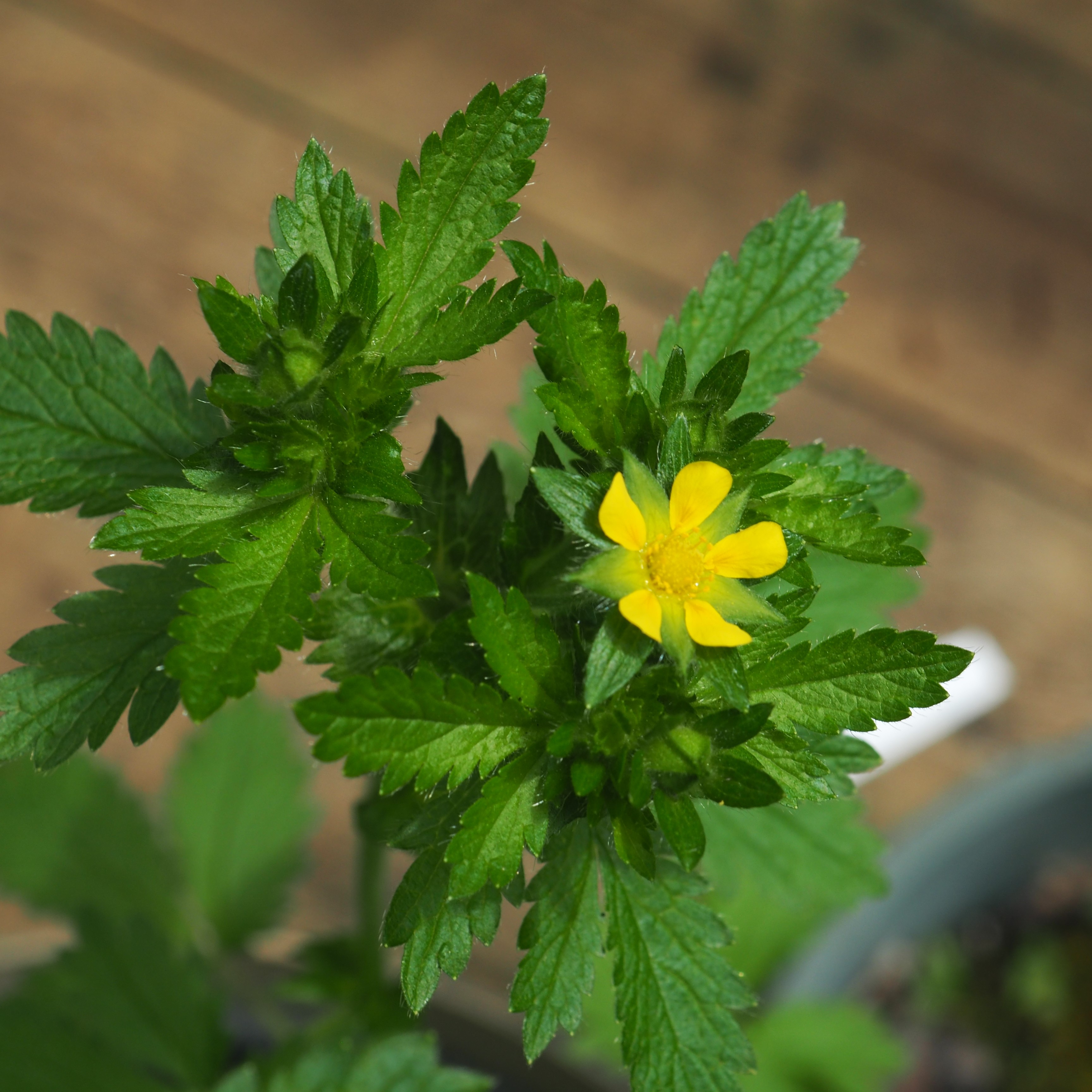
At last - On to the Spiders! The Common House Spider is having Wraps again. Then here are a couple more Cobweb Spiders.
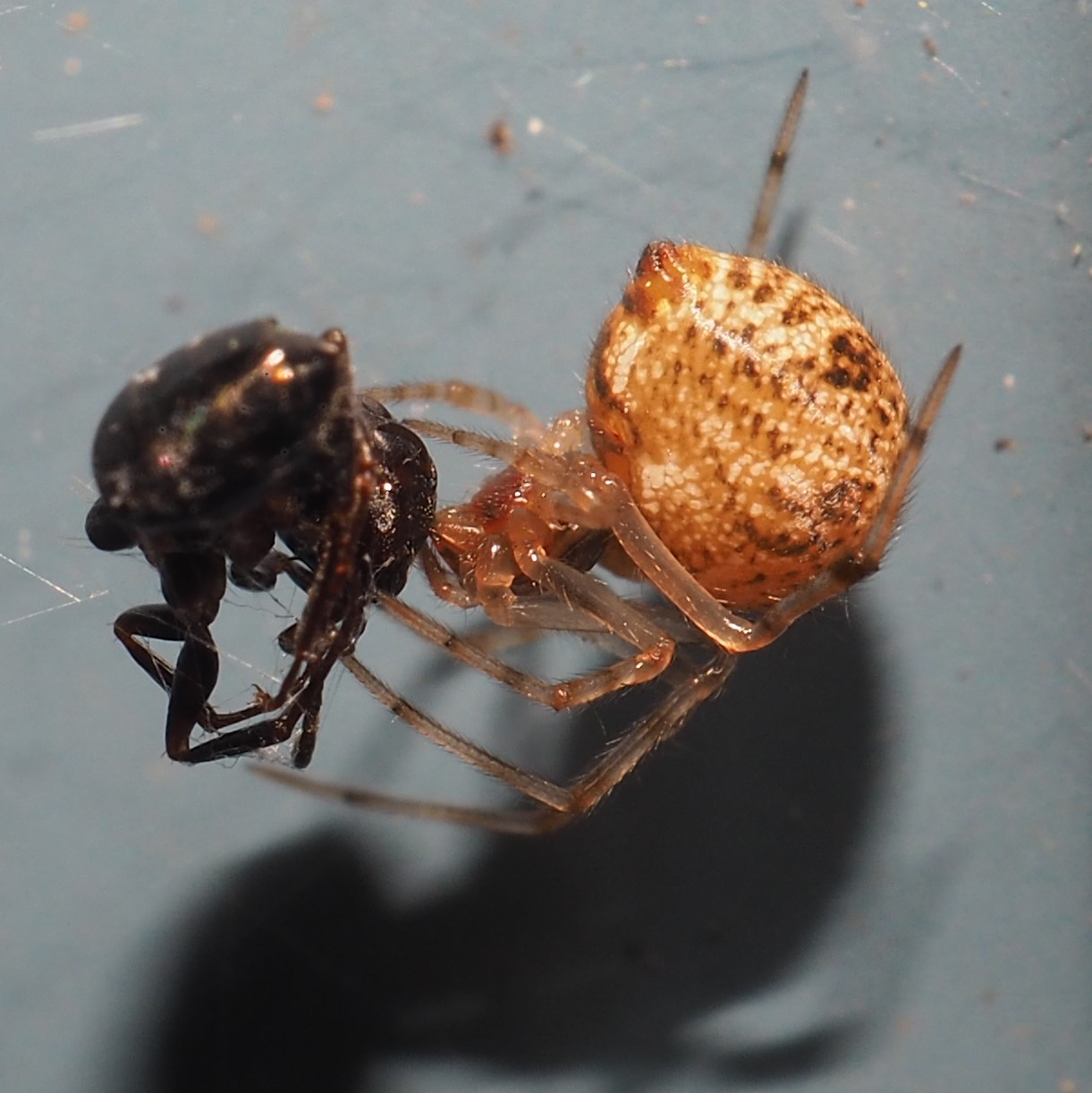
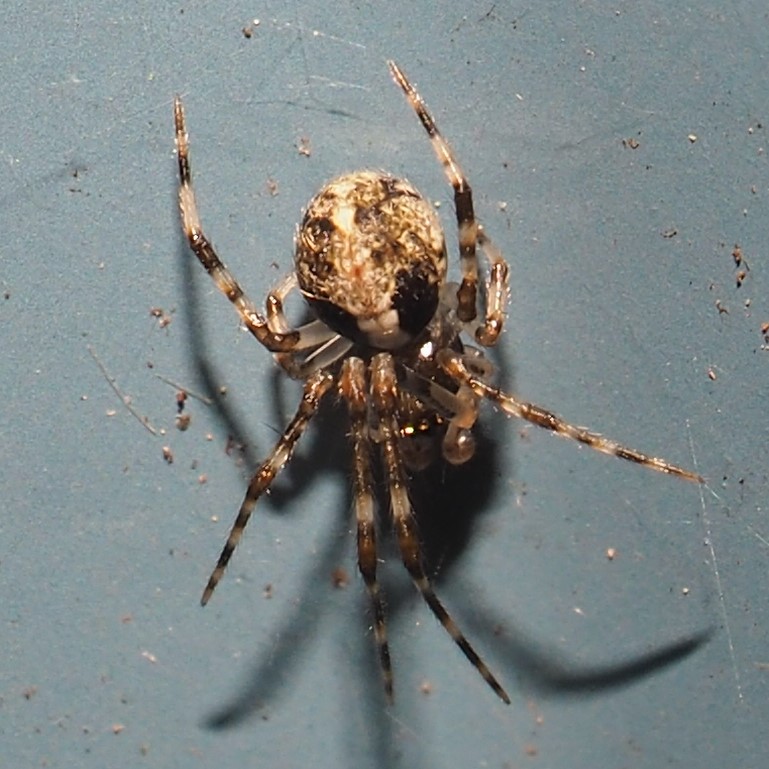
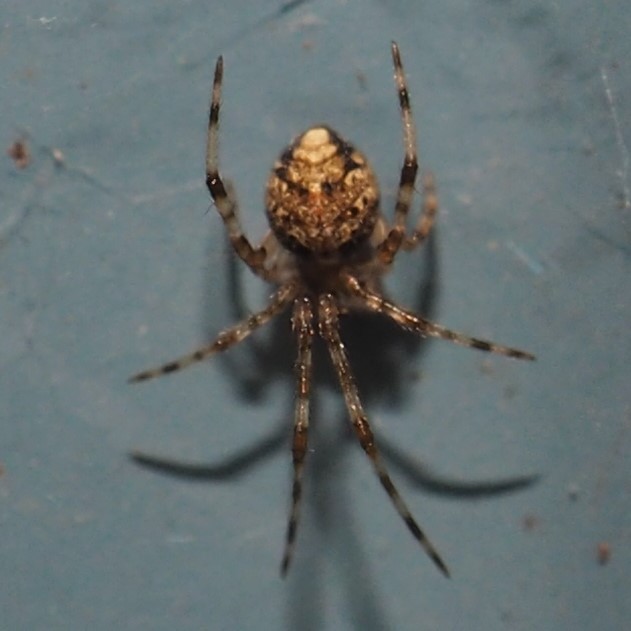
This is probably another Cobwebber, but I'm not sure. I'm going to get Matt Claghorn to check these out! Thanks in advance, Matt! Number 2 is an unusual one. And number 3 is a real beauty but what is it?
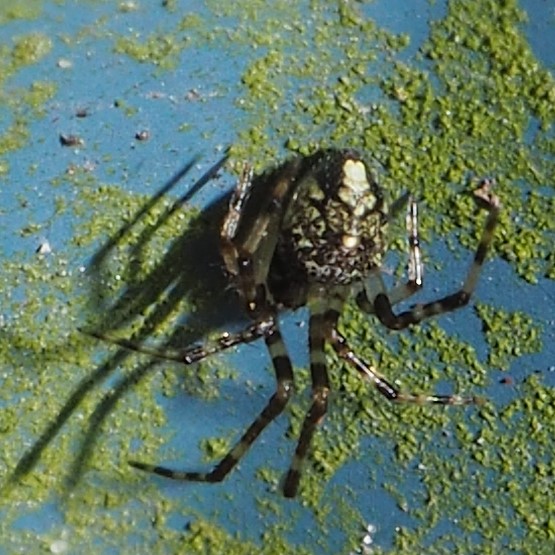
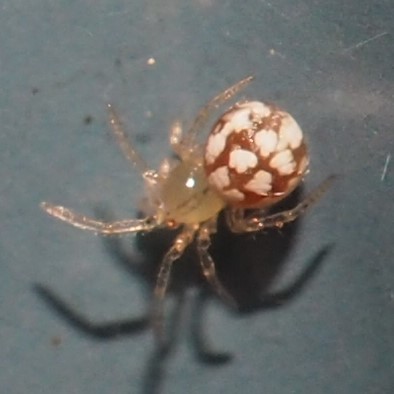
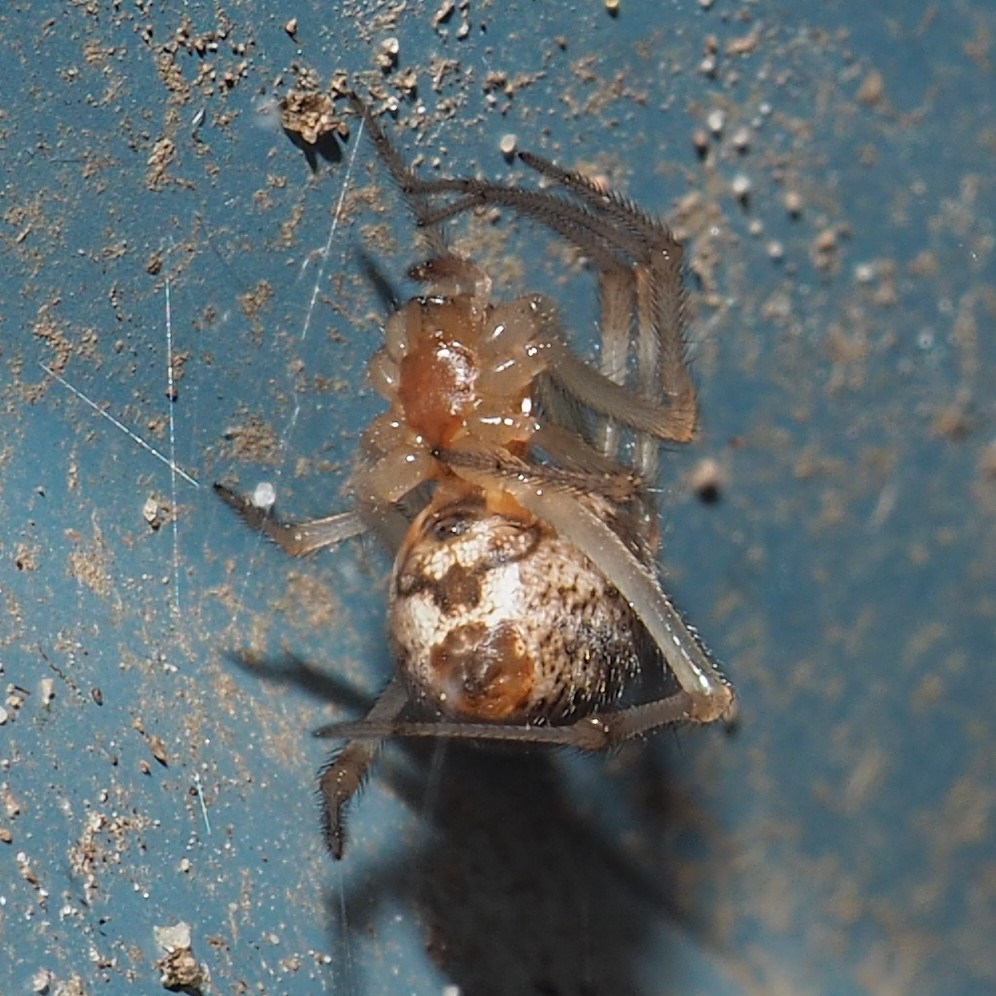
The first Spider seems to be describing the one that got away. Next, yet another Cobweb Spider. And last, a real mystery. Did you notice that we didn't see any Grammanota Spiders this week?
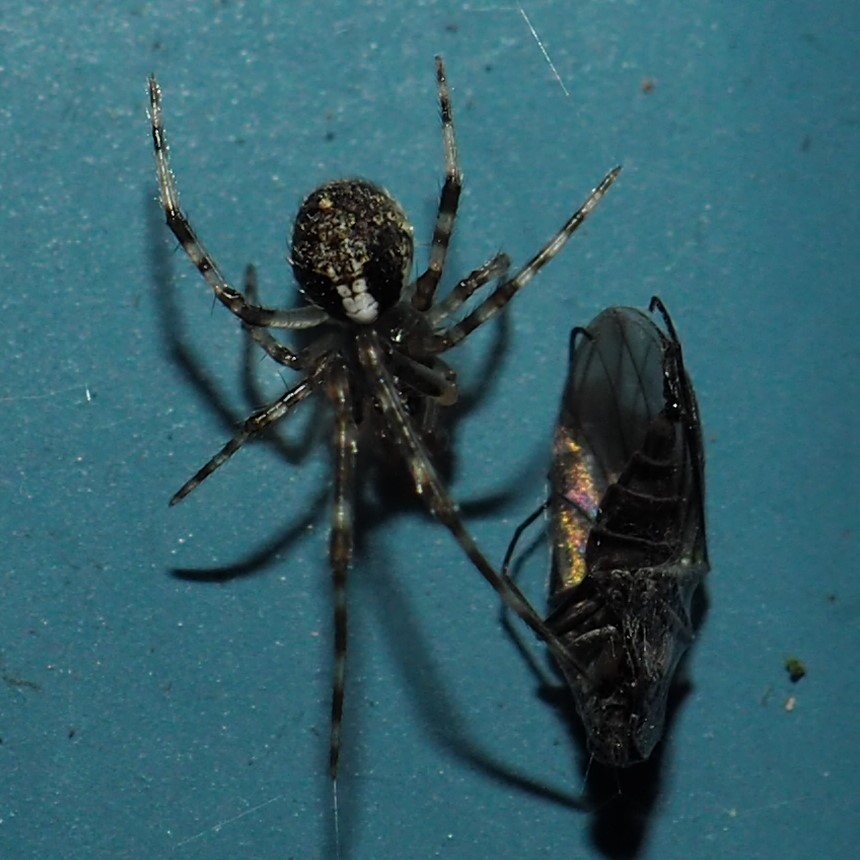
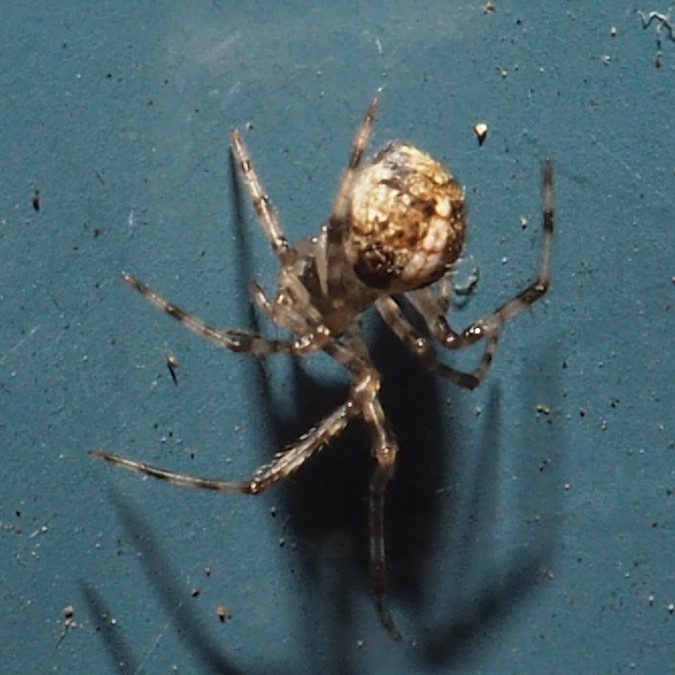
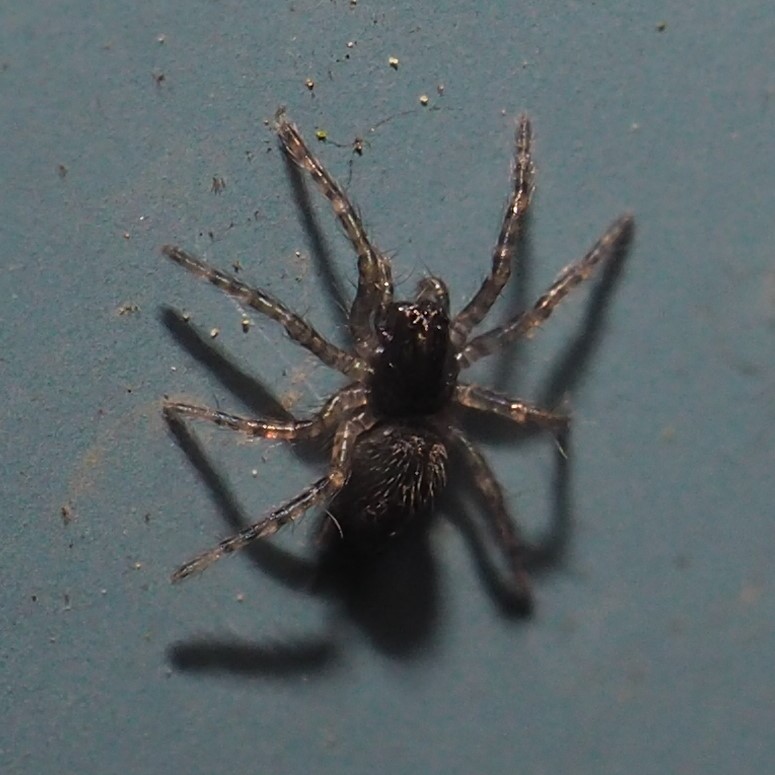
We did have some cool Jumping Spiders. We probably had three or more "Flea Jumping Spiders", Naphrys pulex. This is one of my favorite Spiders because of its lovely furry pattern.
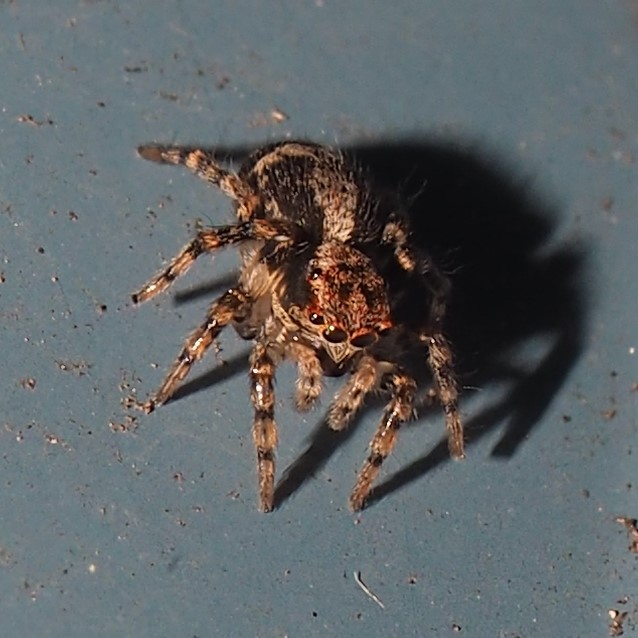
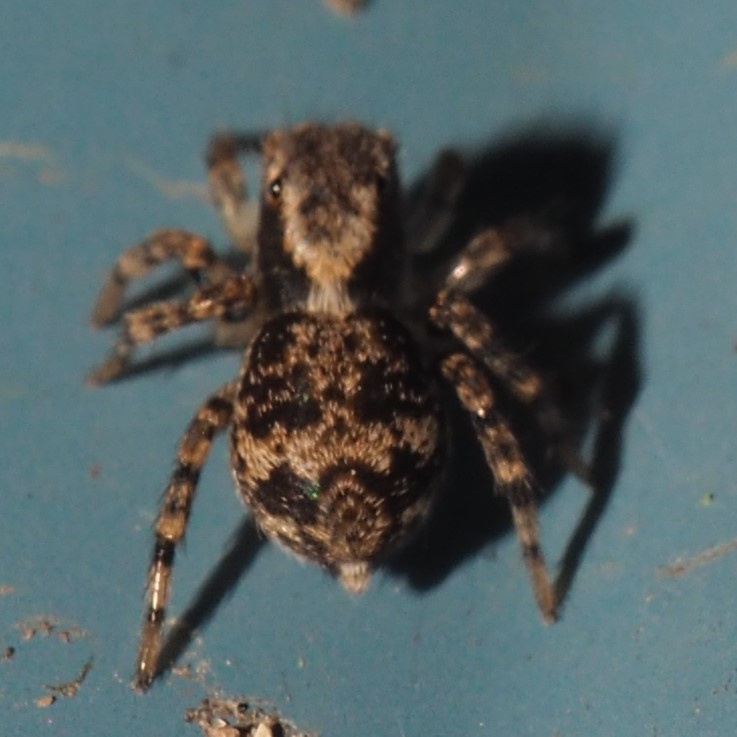
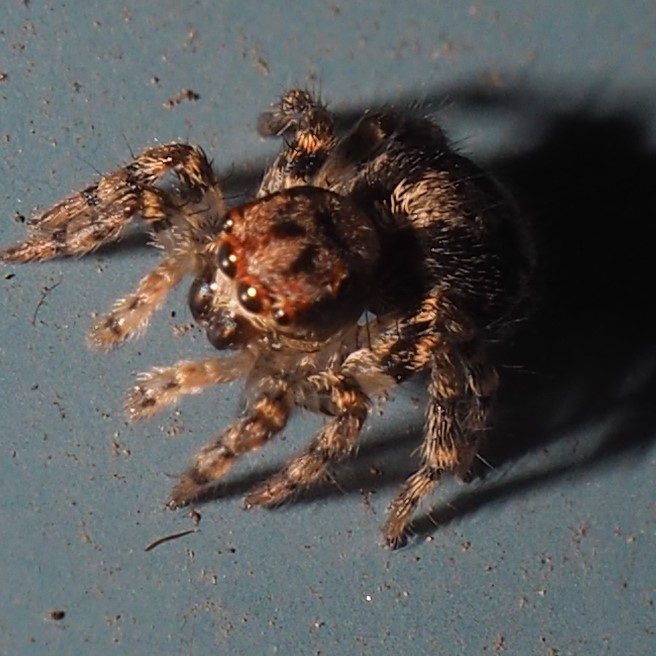
This little Jumper may or may not be another Naphrys pulex. I think it isn't right now. For one thing, the pattern on the abdomen just isn't the same.
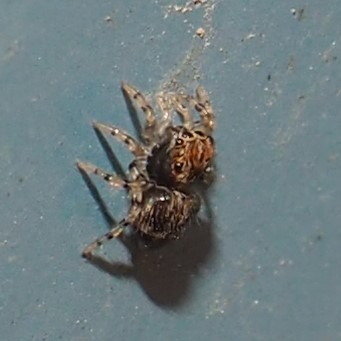
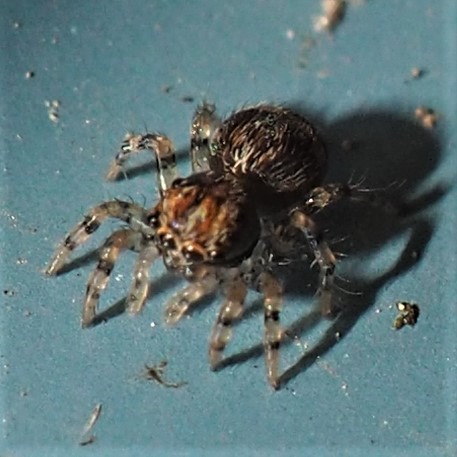
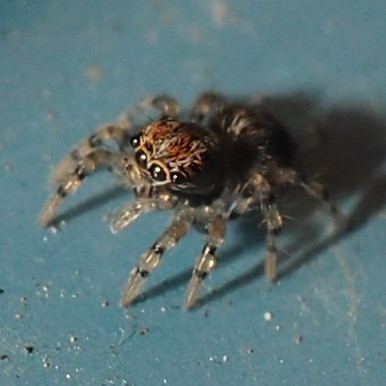
One last little Jumper. This one was very little and had a lot of places to hide in that Goldenrod. Maybe it's the same as the one from last week, Pelegrina proterva.
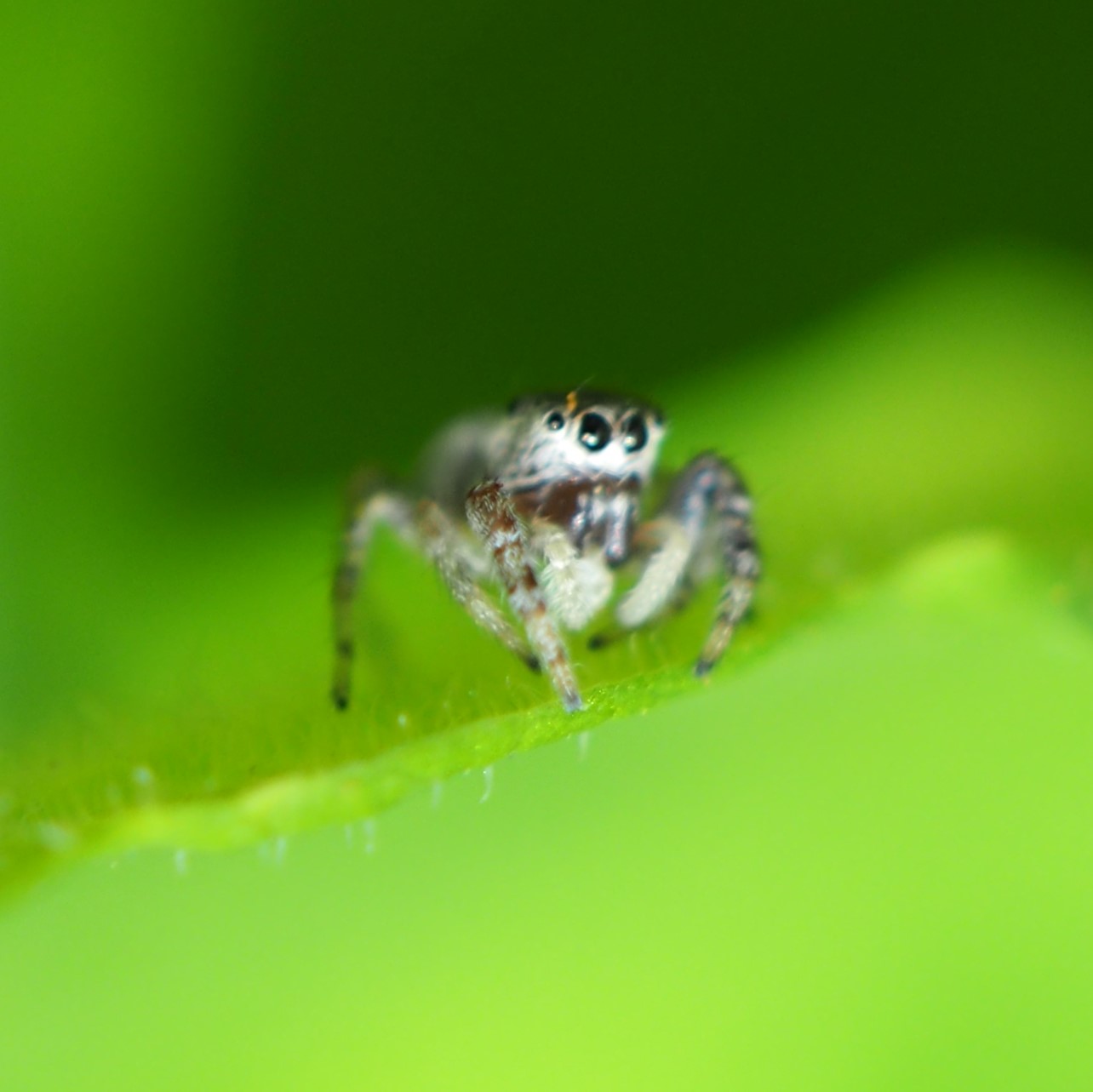
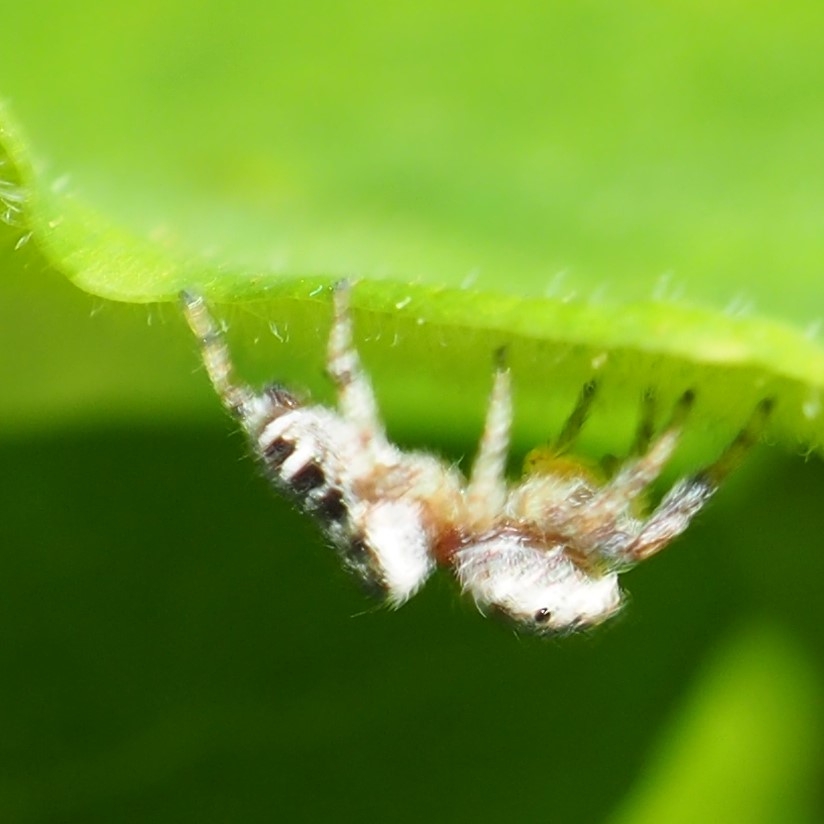
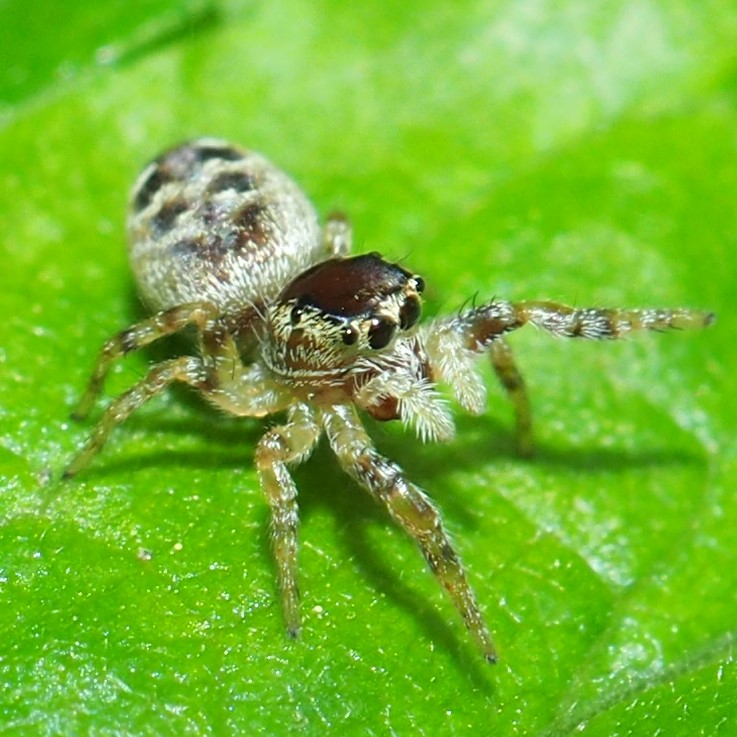
These are Cellar Spiders, probably of the genus Pholcus. One was way down near the bottom of the siding where the North Wall barklice were hiding out.
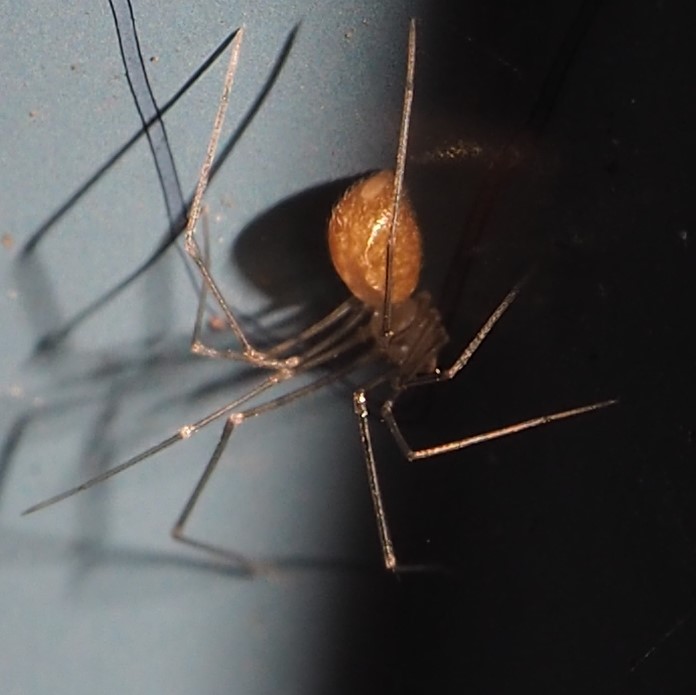

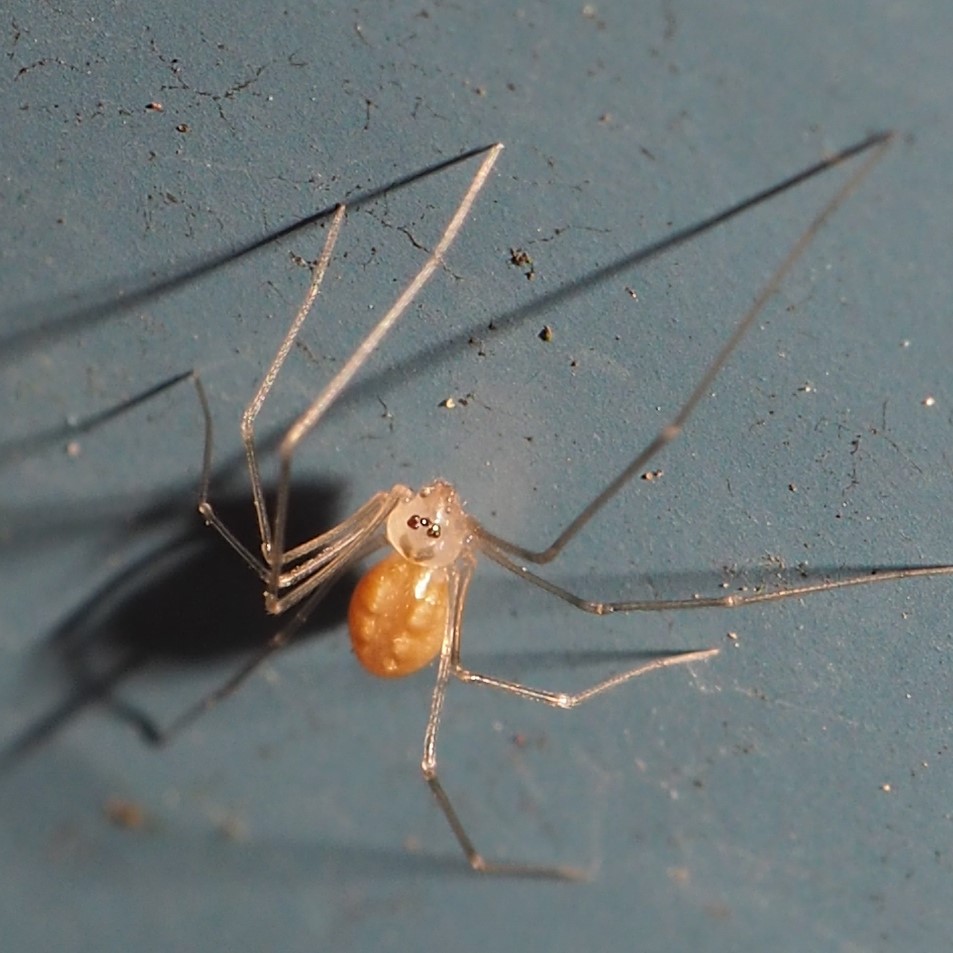
This spider was clearly an Orbweaver, but I couldn't recognize it. But then Jeremy Hussell identified it as a juvenile and suggested a number of Orbweavers that might look like this one as juveniles. The Cross Orbweaver was both on his list and one of the most frequent Orbweavers to visit the Wall.
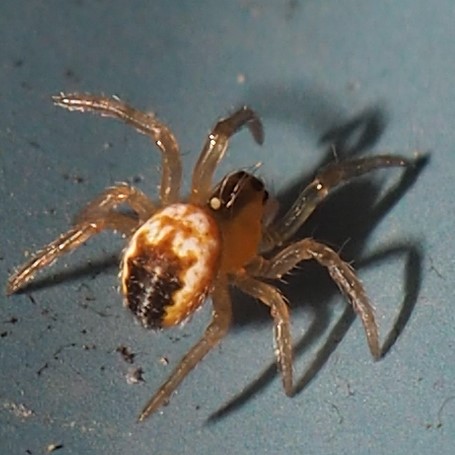
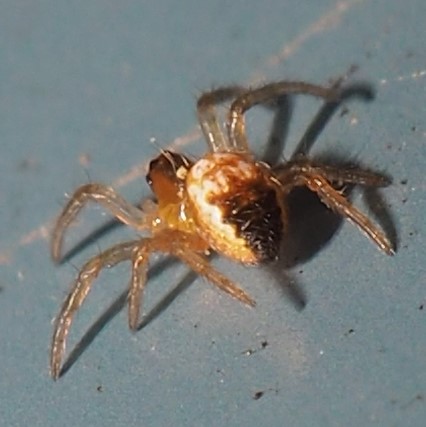
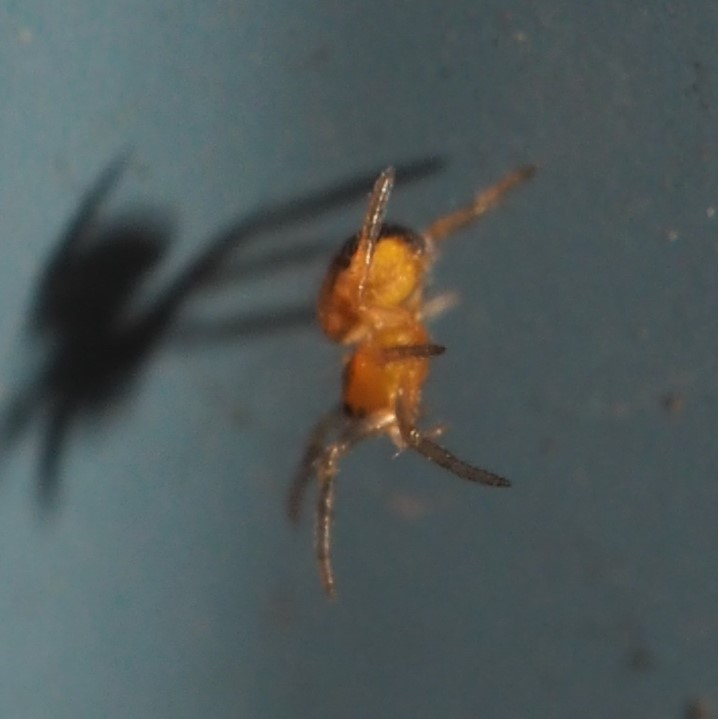
Just a couple of the wasps that grace the Wall! The other day I saw a very flat ant on the Wall down near the ground - it was very acrobatic and racing all over the place. But when I wrote to Steven Wang, he said it wasn't an ant, but a Flat Wasp (the actual name). That's why I mentioned Flat Wasps at the beginning when we were talking about that very athletic and very flat Beetle. Last is an Eastern Yellowjacket that got into the attic. Chaim was a good friend of nature and brought it downstairs. I let it cool off for a while in the fridge so I could take its picture, then let it out the bathroom window. Look at that sweet pensive little face!
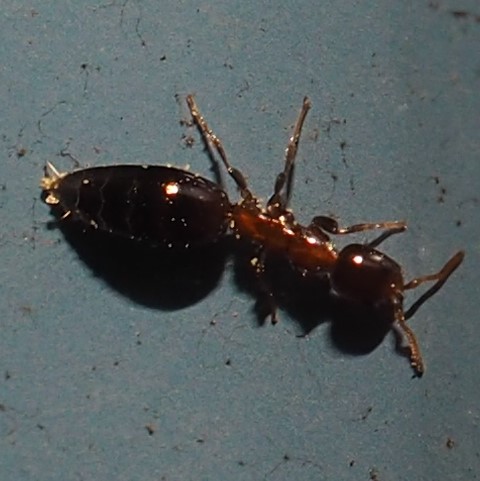
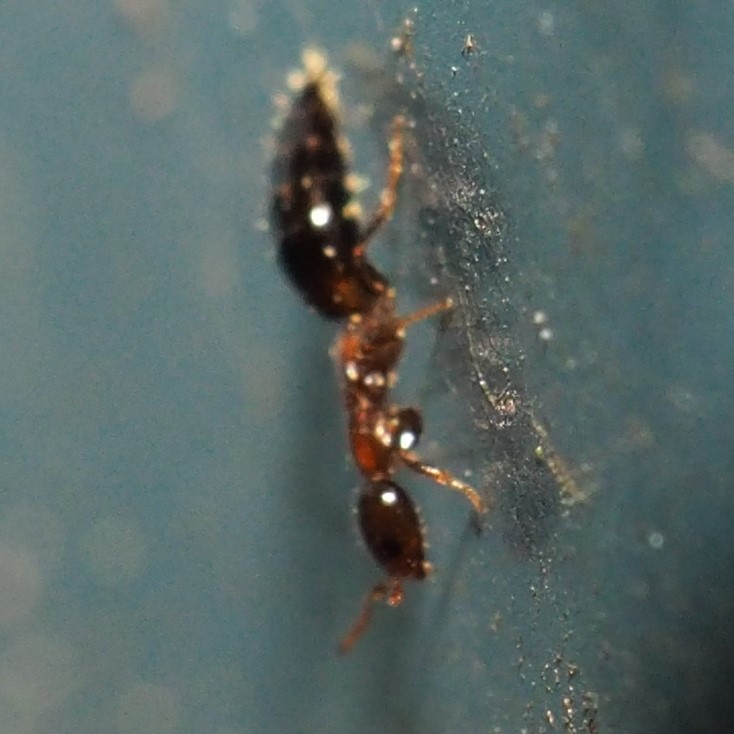

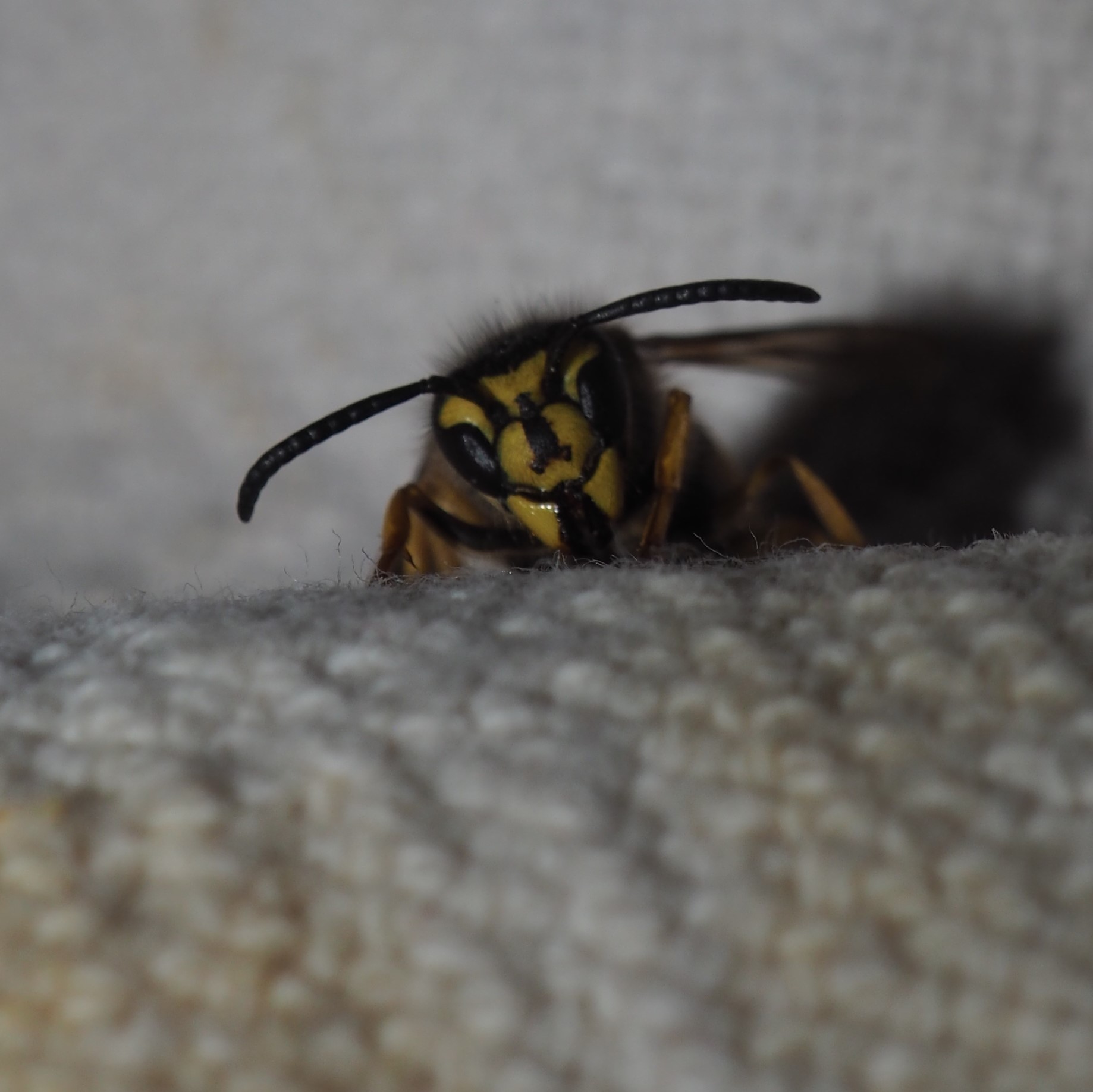
I hope you are all doing well and having some fun along the way. I get to have a Covid test on Monday so that I can have my RFA (nerve-killing by way of radio frequencies directed at the lower back nerves) and they won't do this if I have the virus. So by hook or by crook I will be tested. :-)
I hope everyone has many things they enjoy doing - like some sleeping! Until next week,
Love, Martha
PS. A few more flowers to cheer us all up! It seems amazing that they come and go so fast! Anyway, the Pink Columbine is coming into its glory, and the red and white one clings to life. And the dianthus (pink) is from a plant that came back from the dead after a long winter. By the way, I planted the 25 Zinnia seeds that came in the packet and so far 17 of them have germinated. We'll see how this transpires!
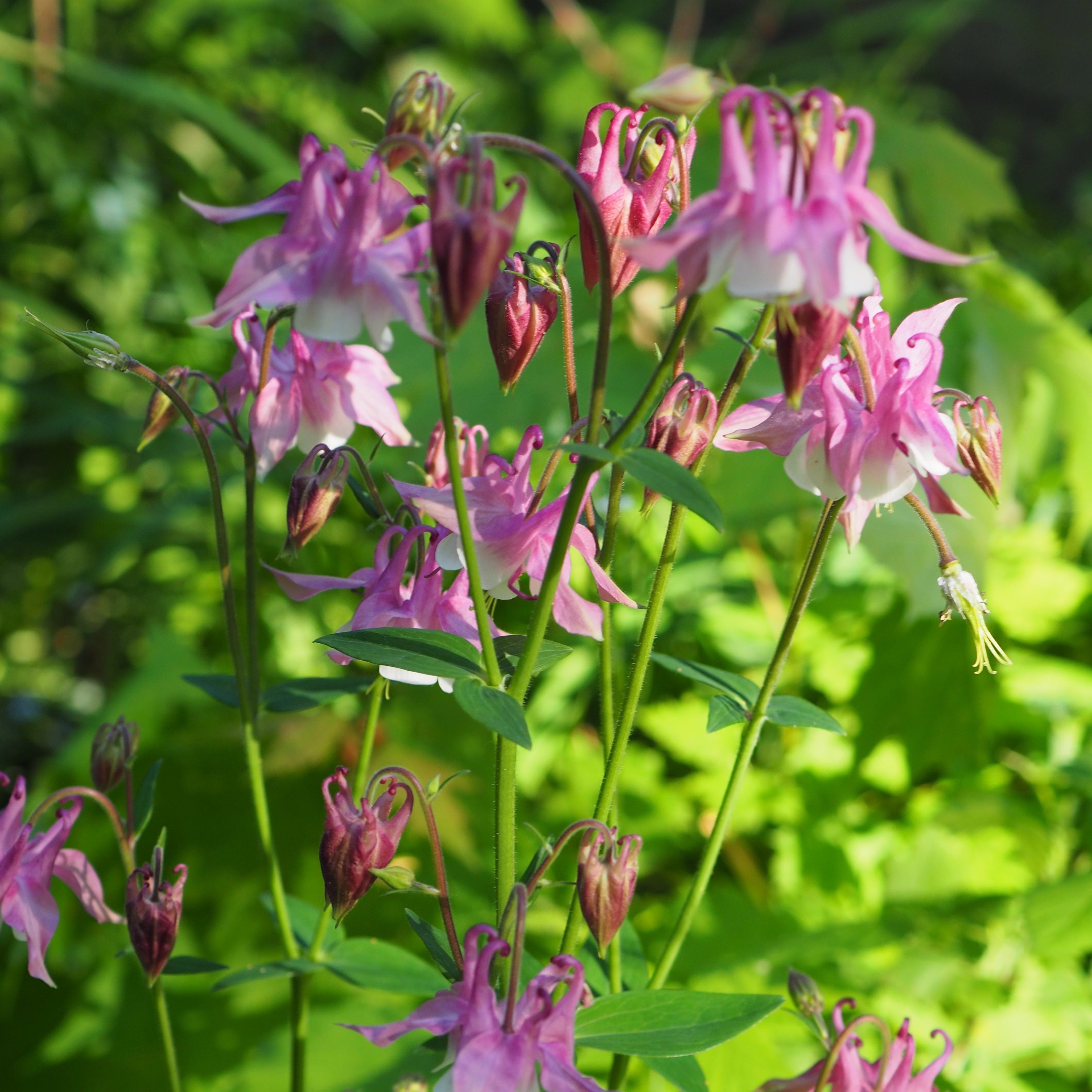
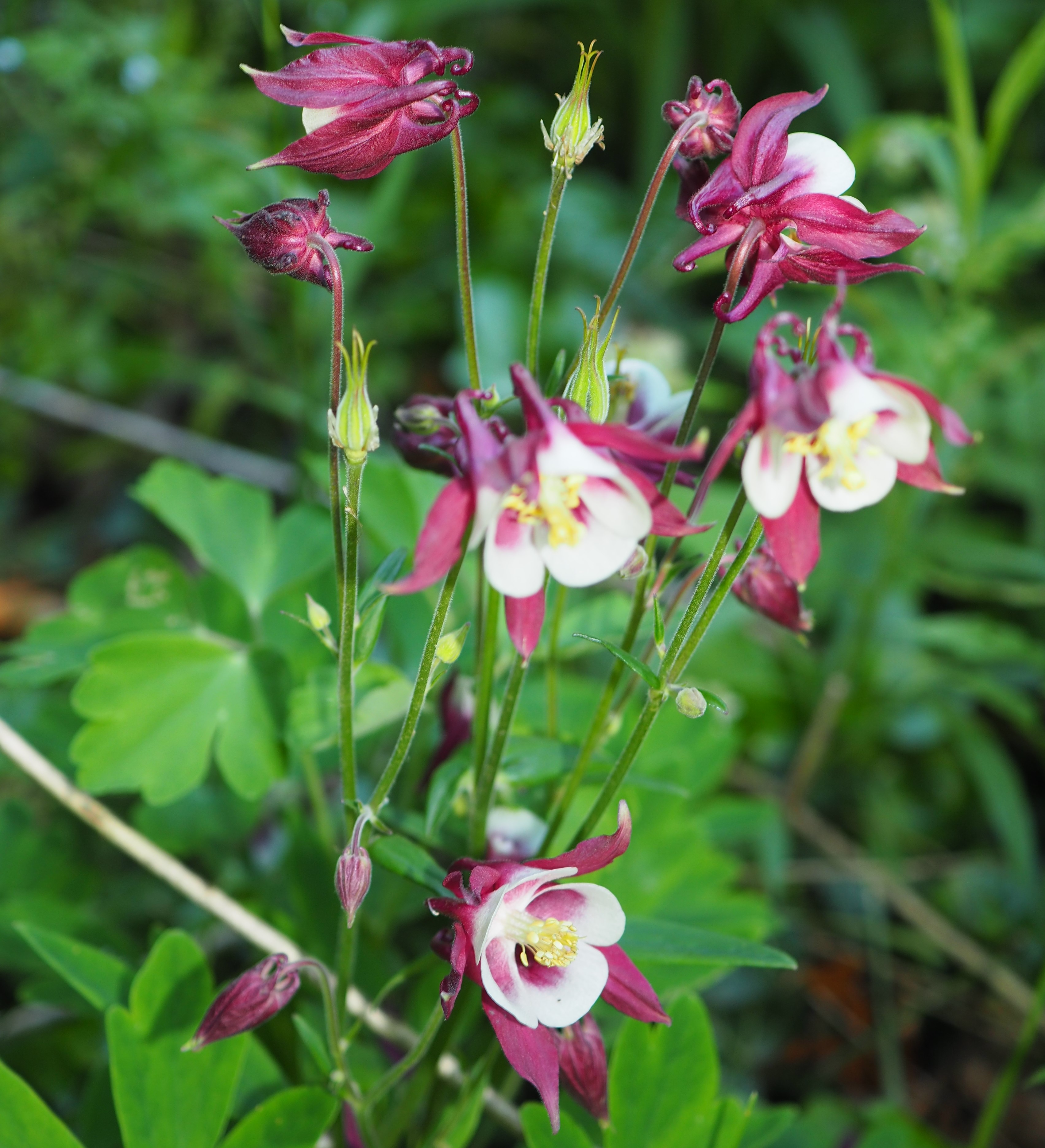
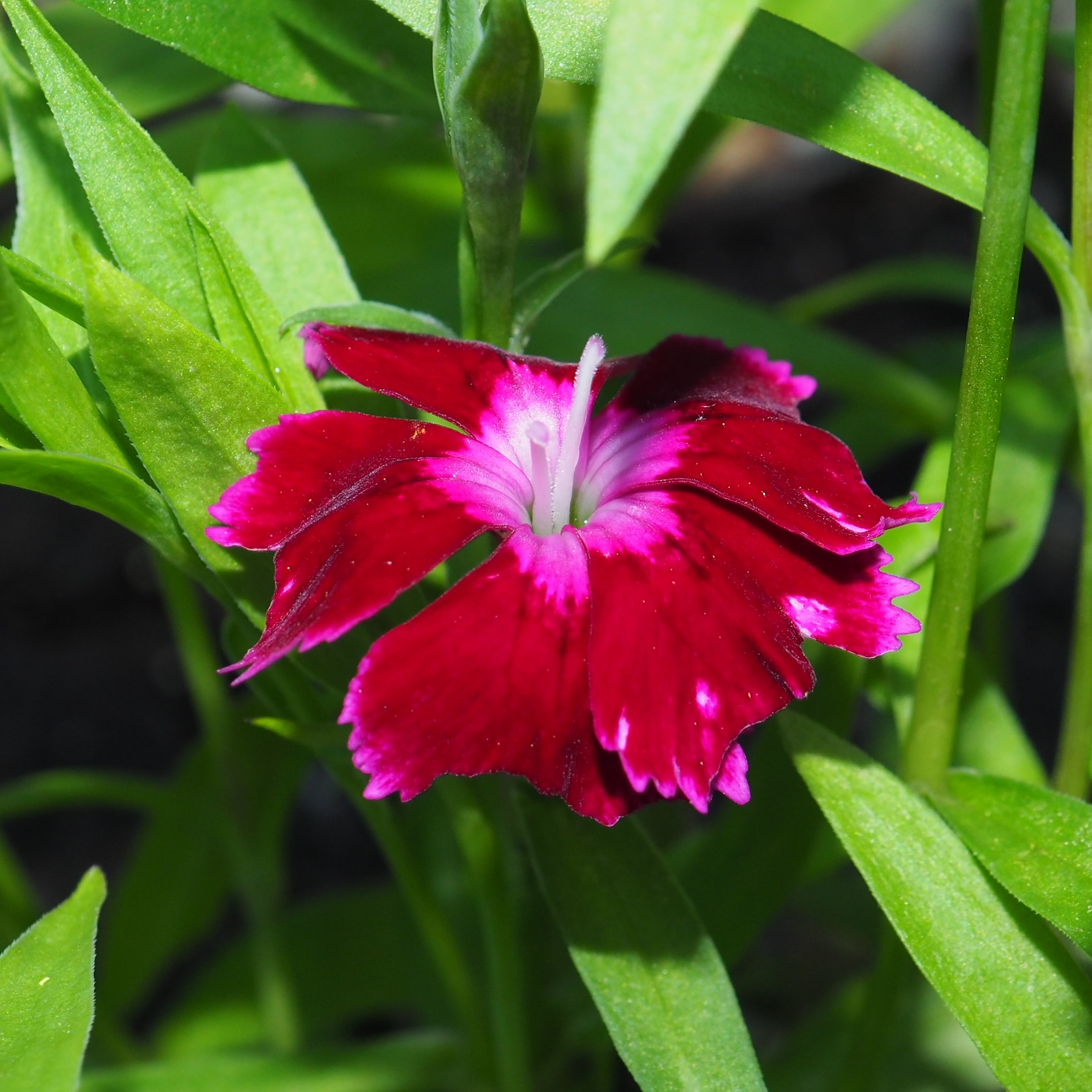
Back to May 24, 2020
Forward to June 7, 2020
Back to main menu
copyright Martha O'Kennon 2020














































































































